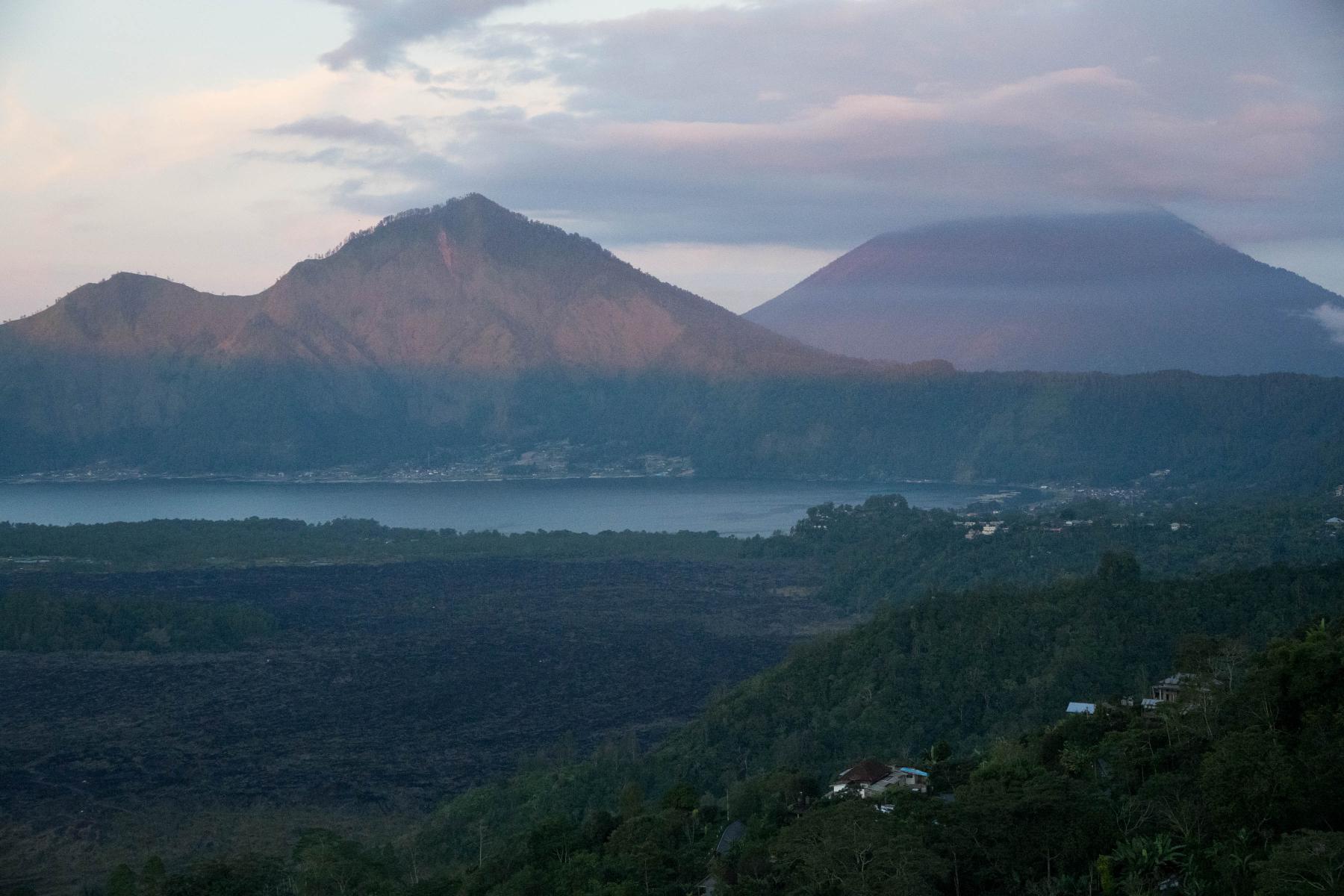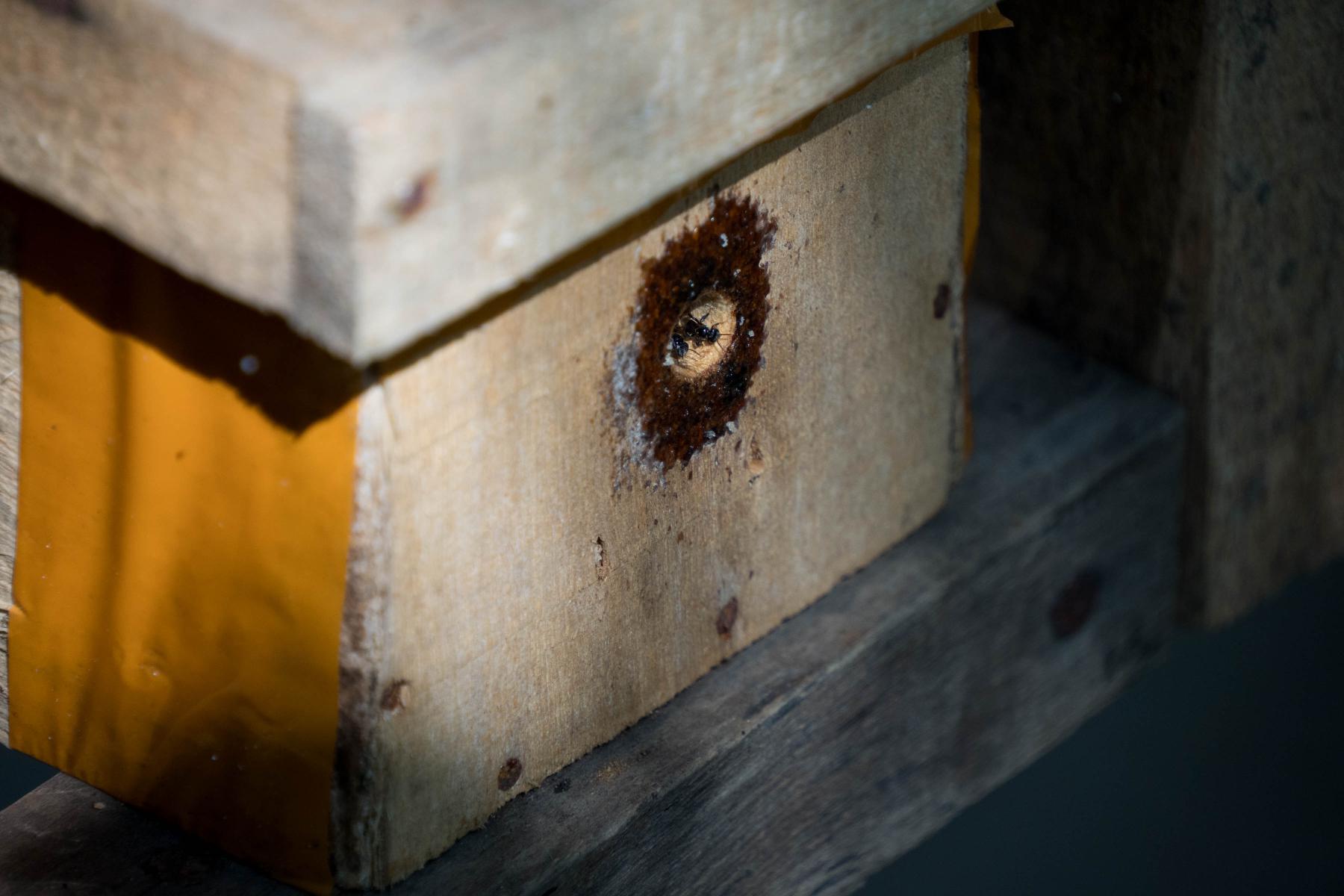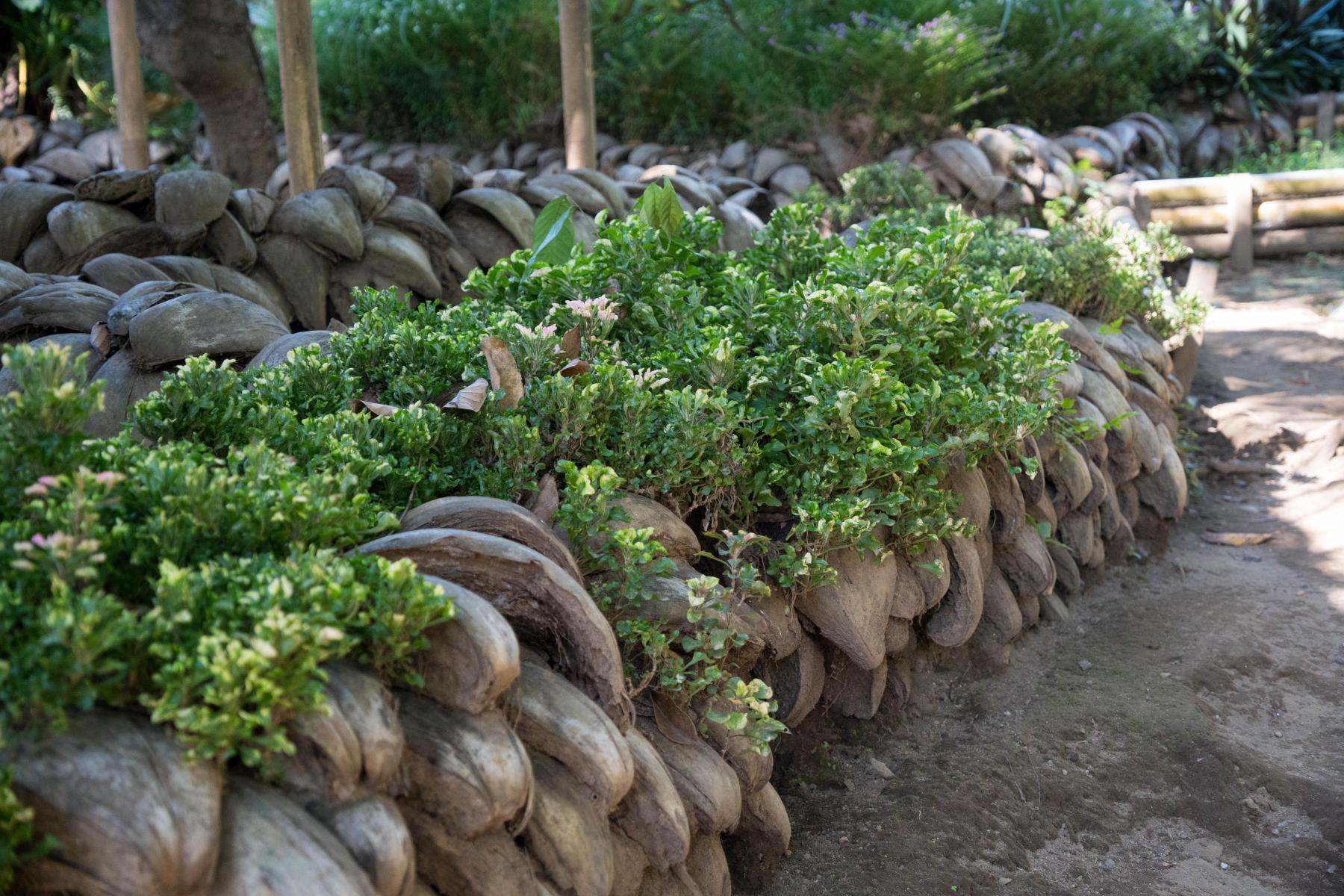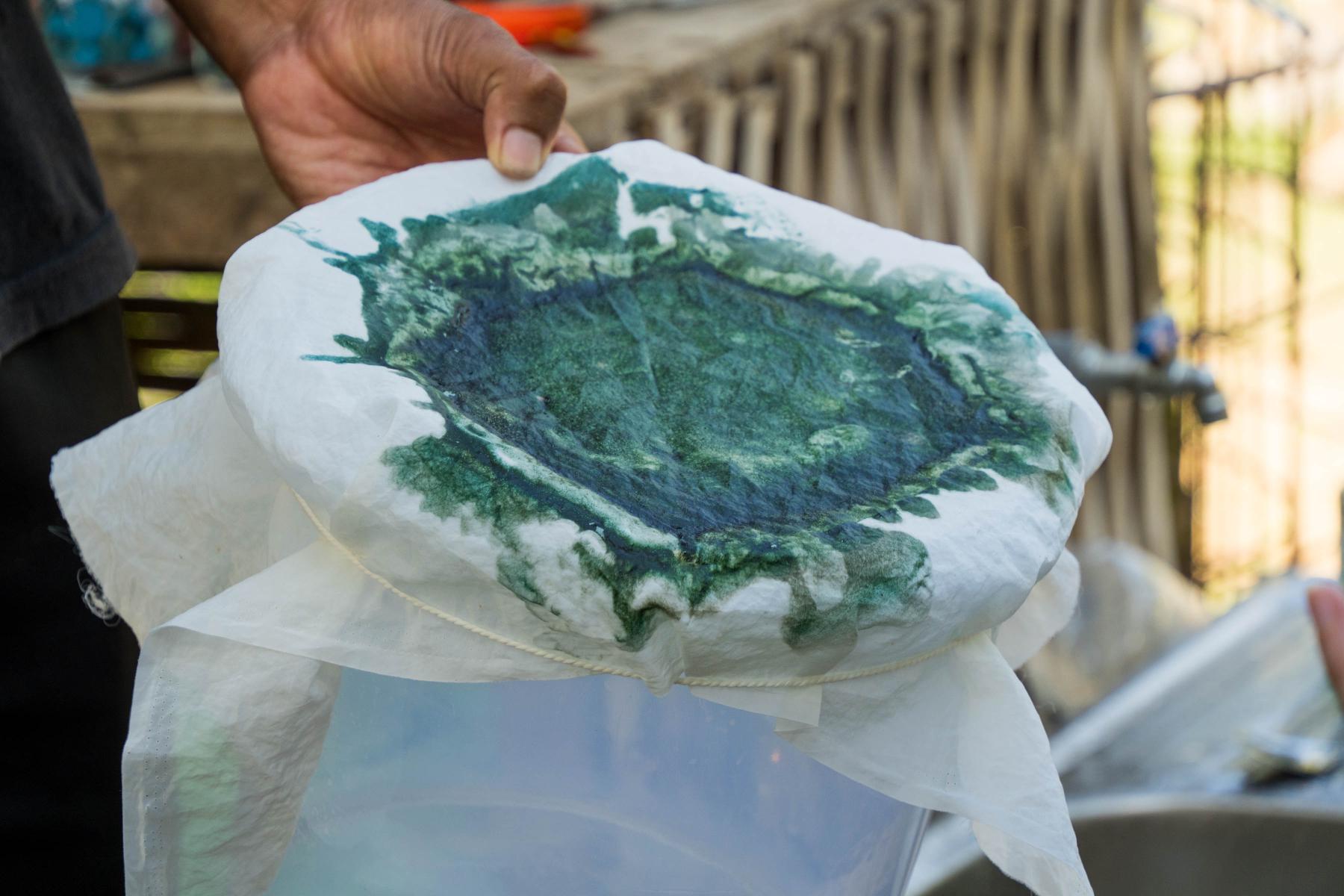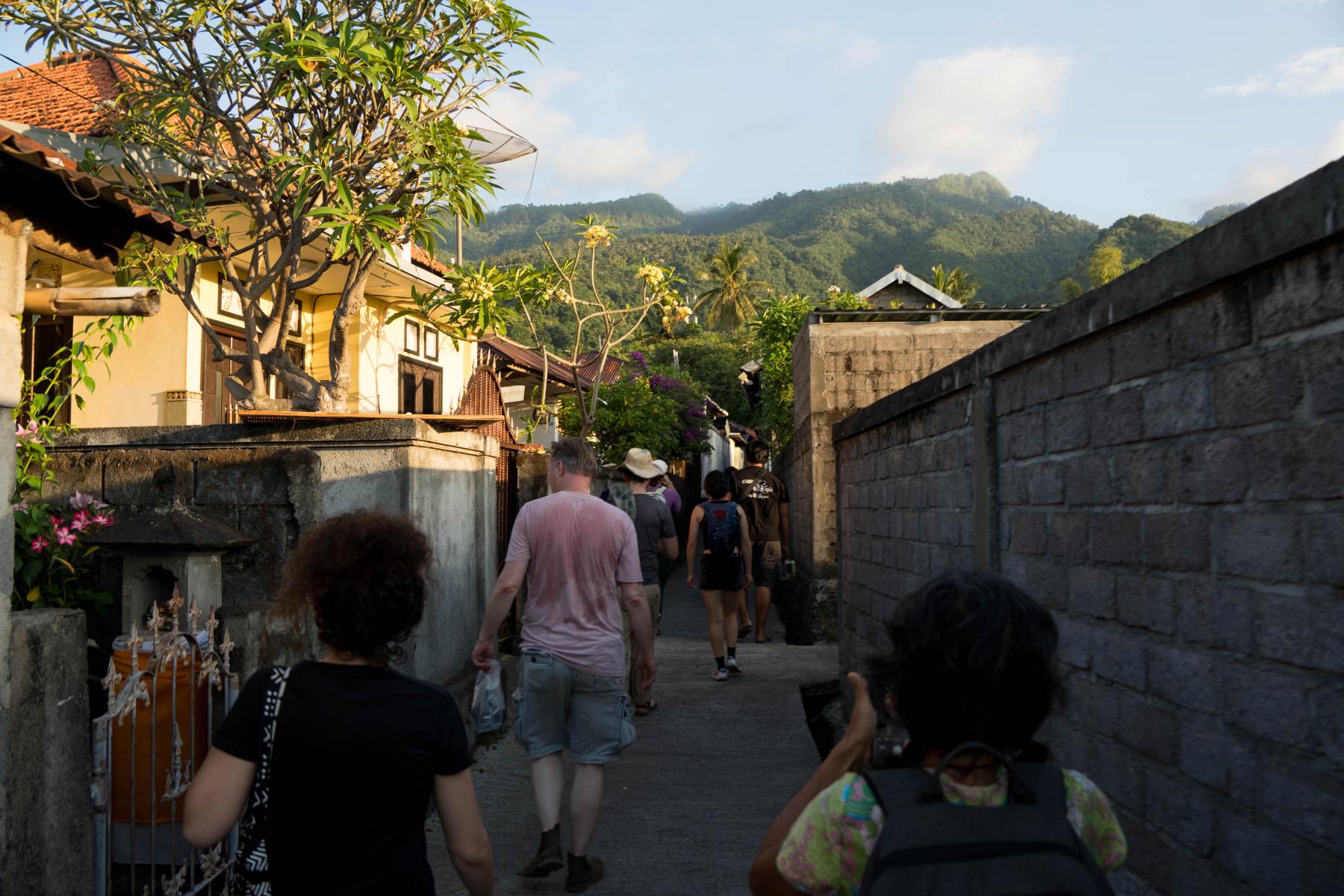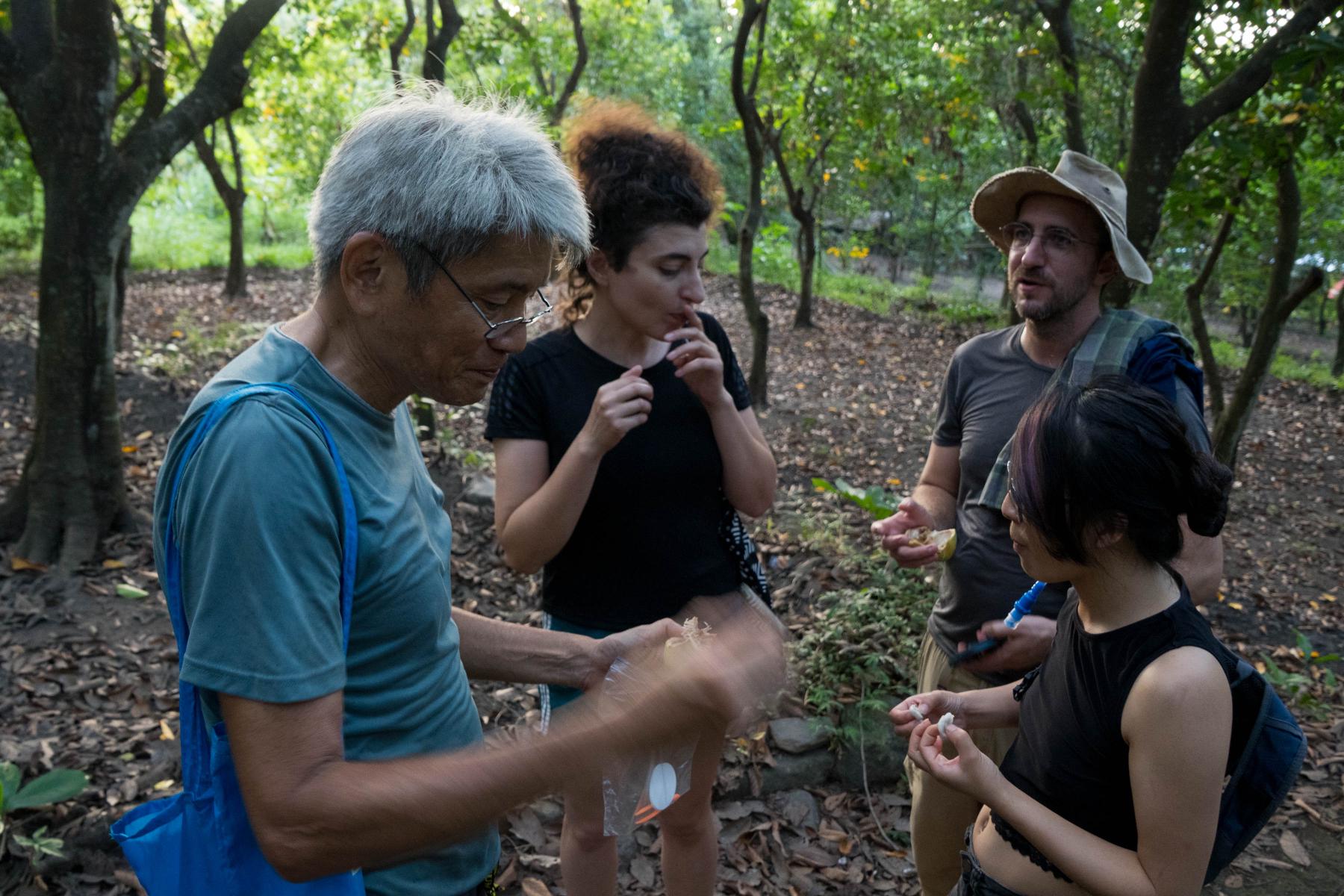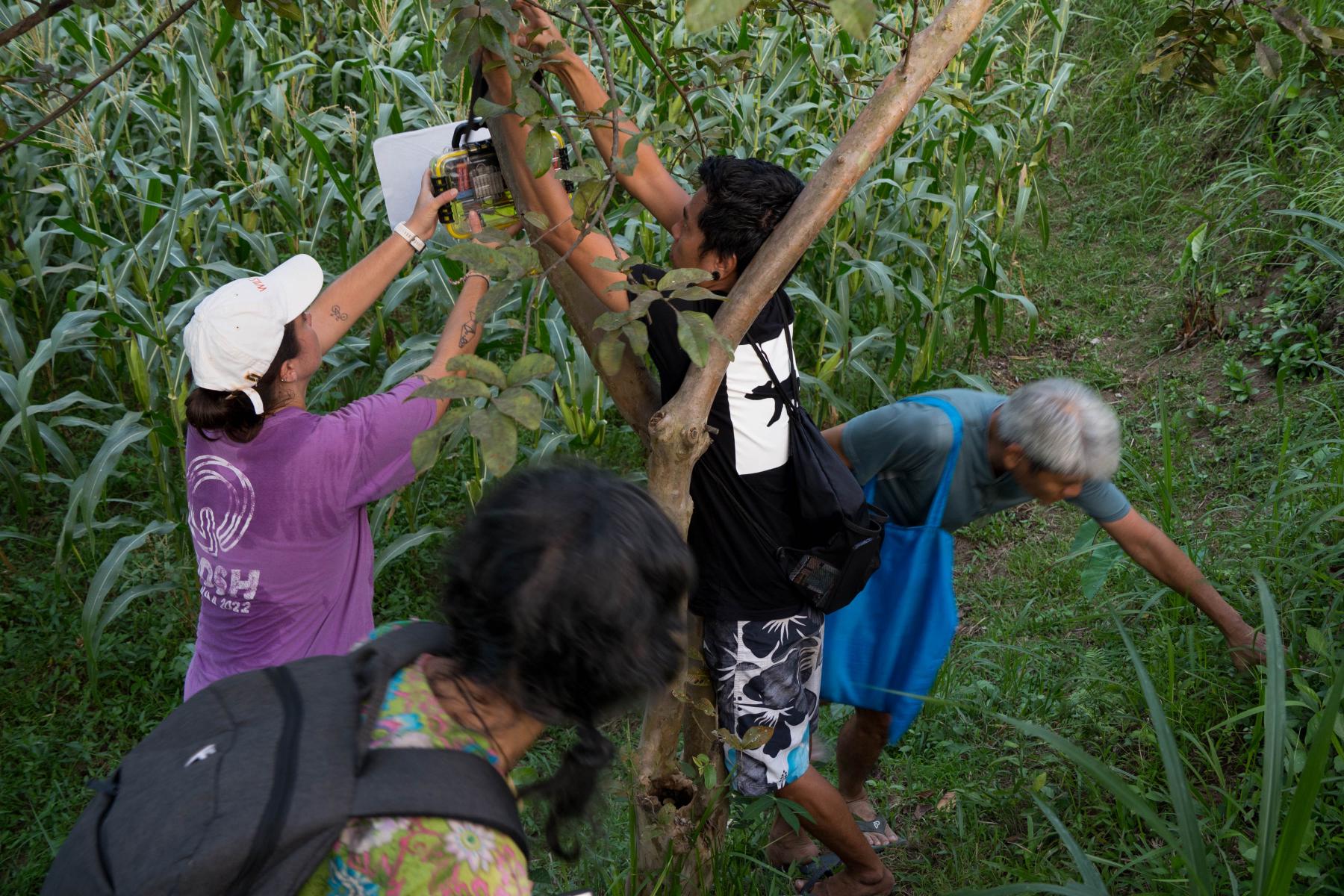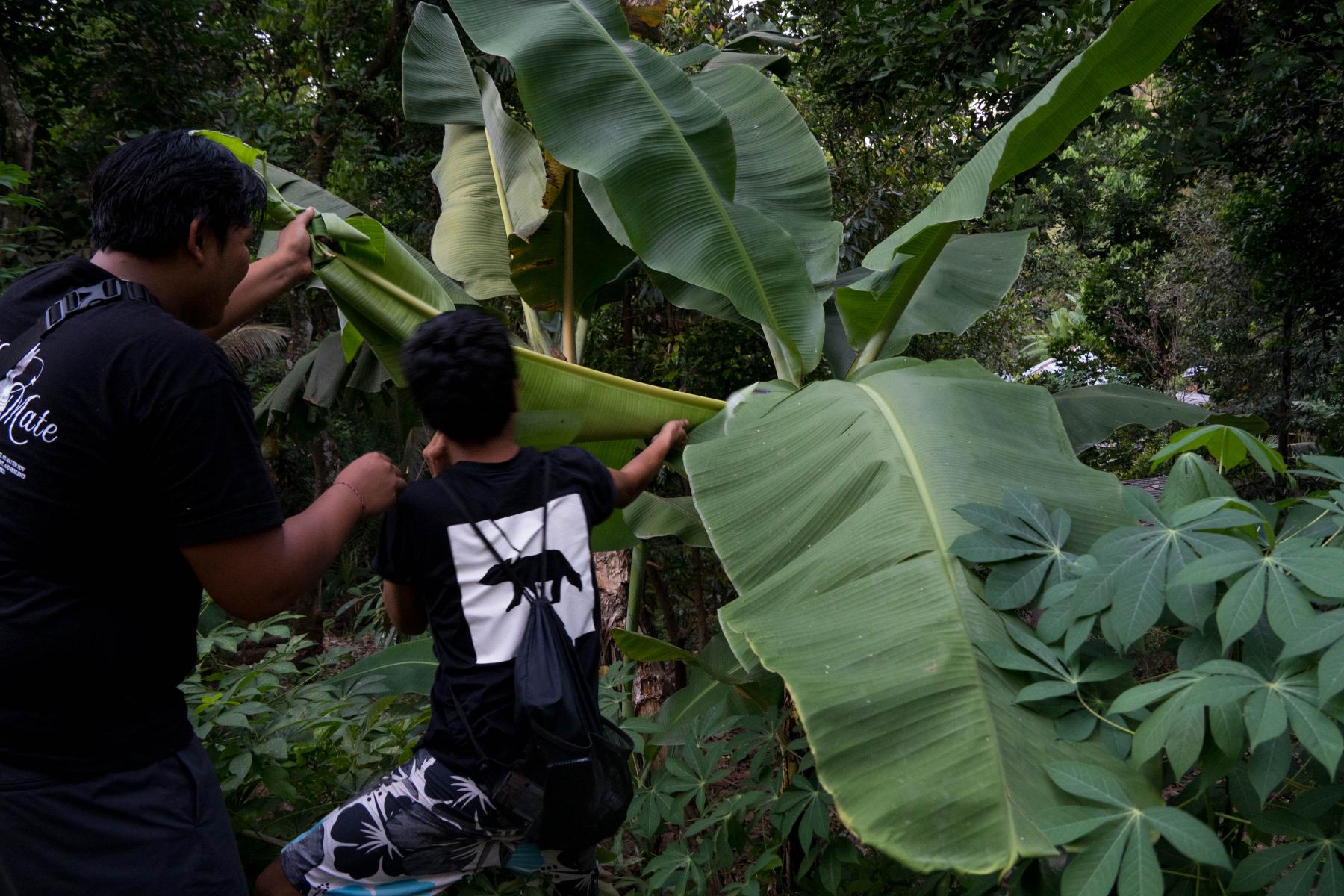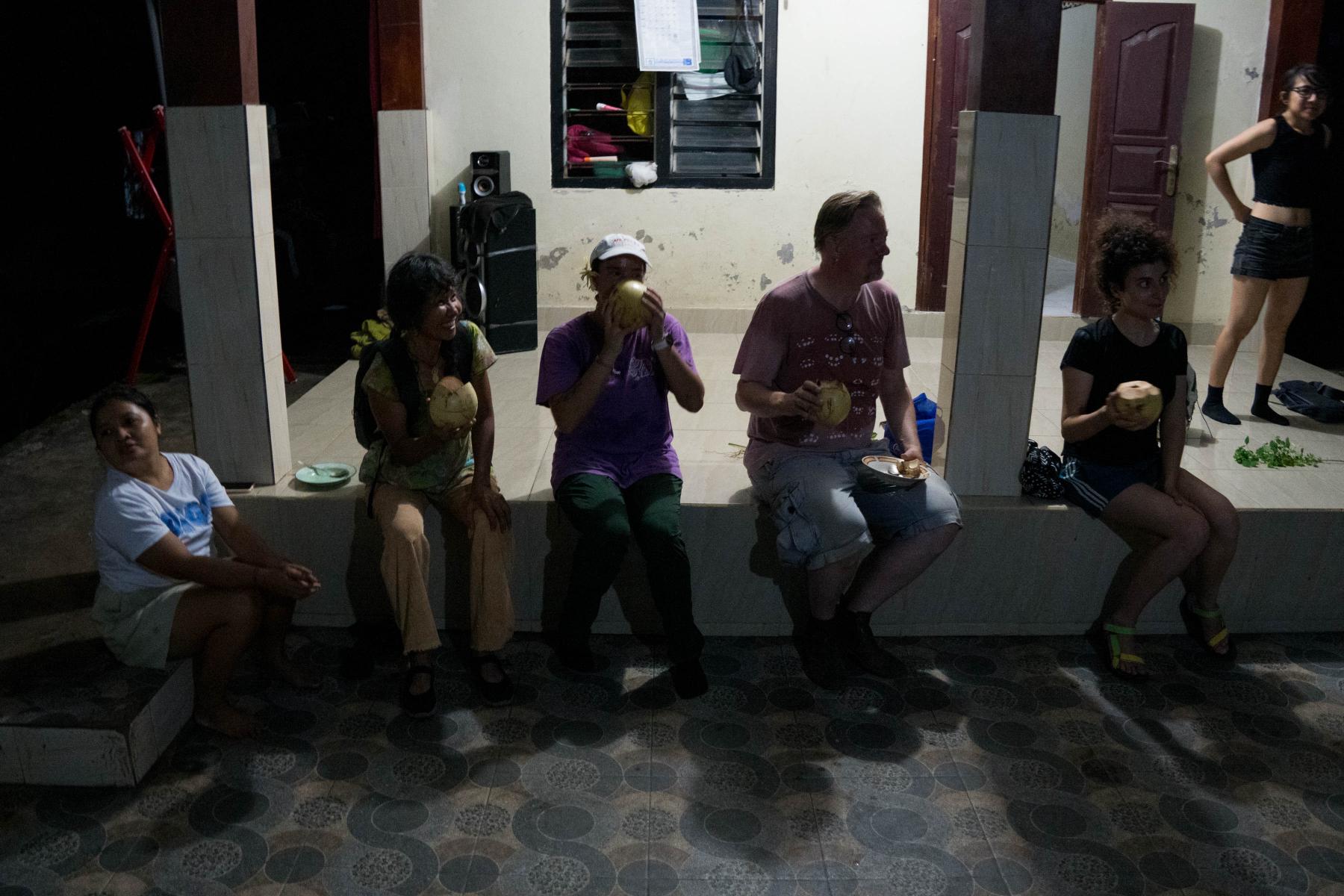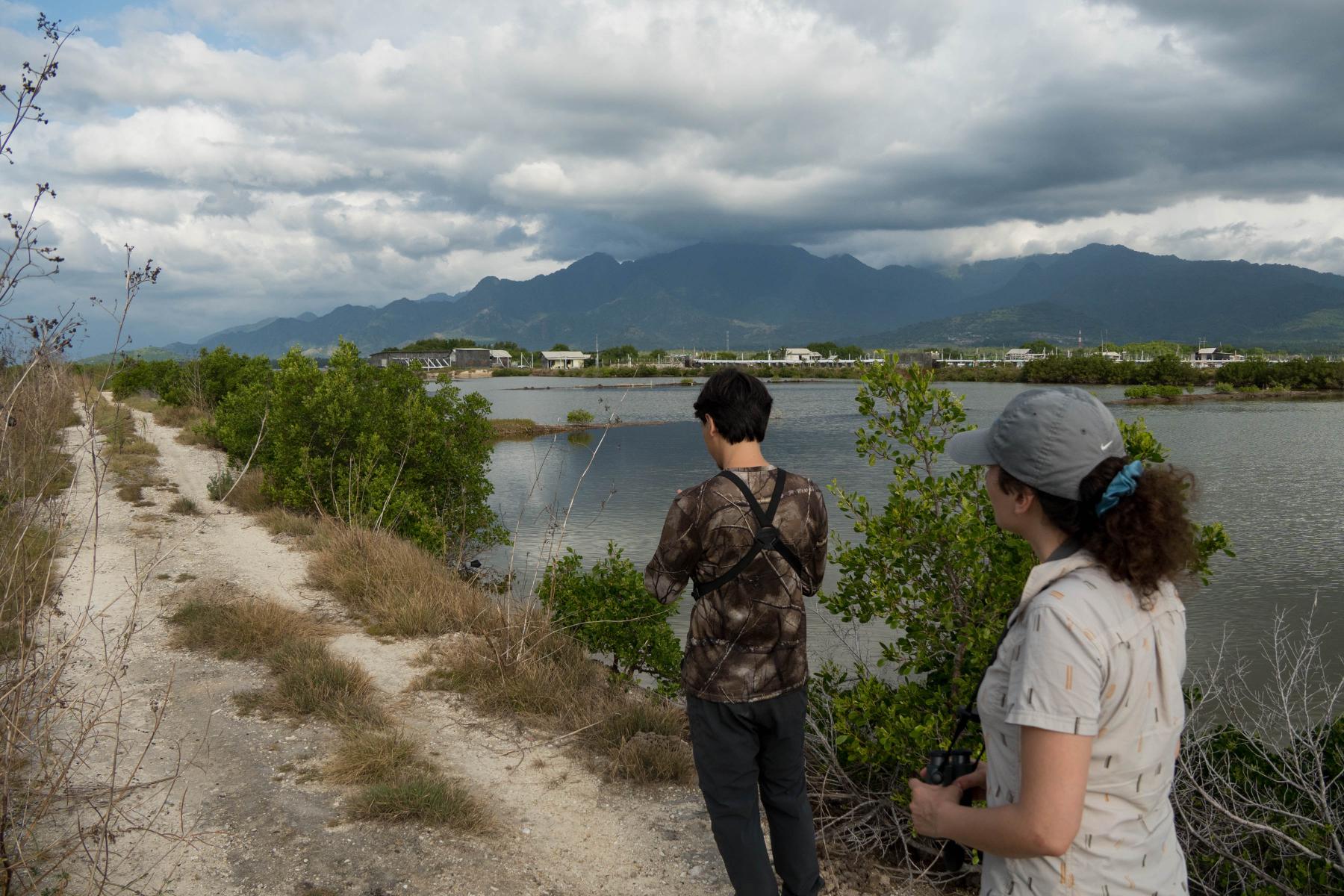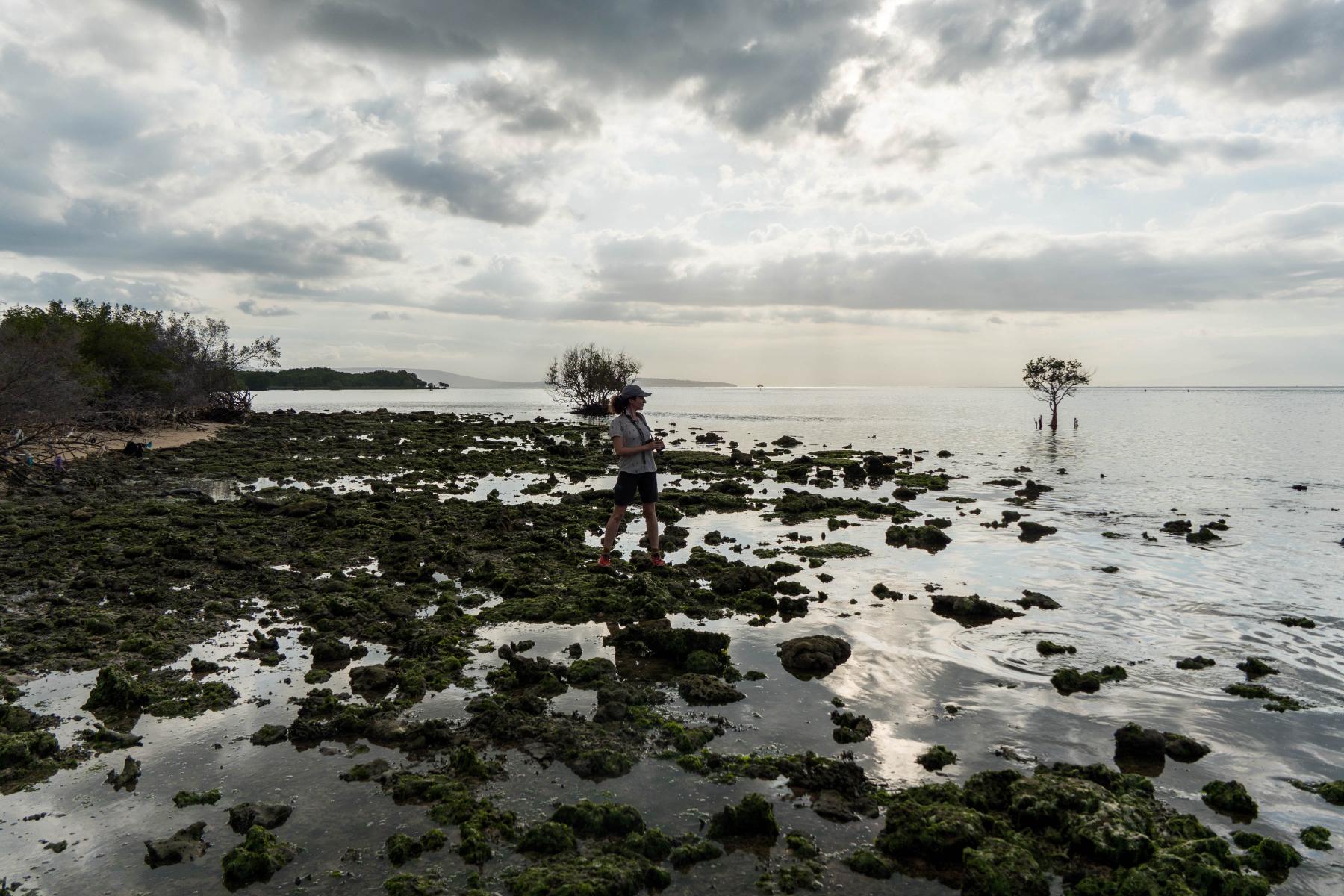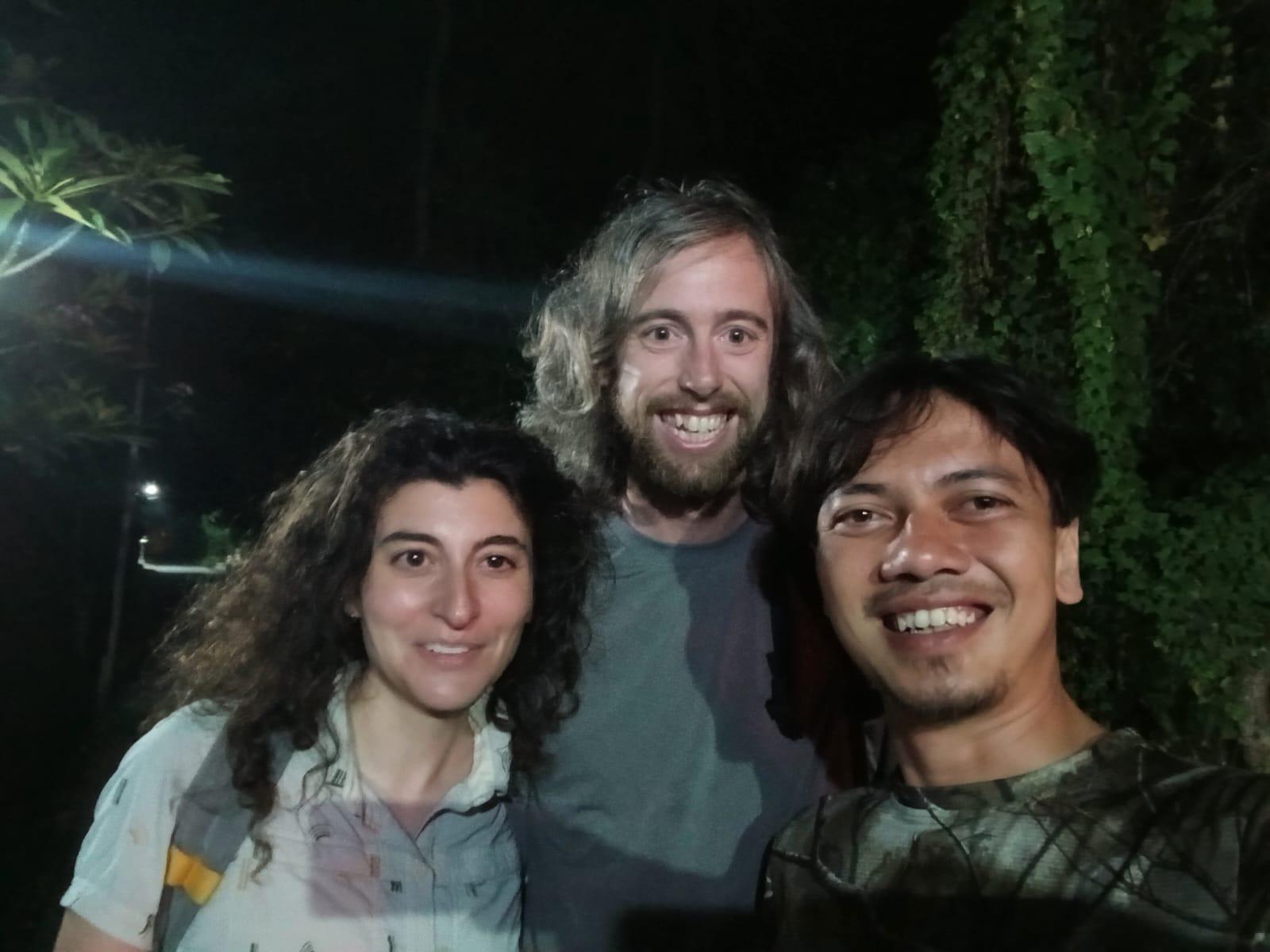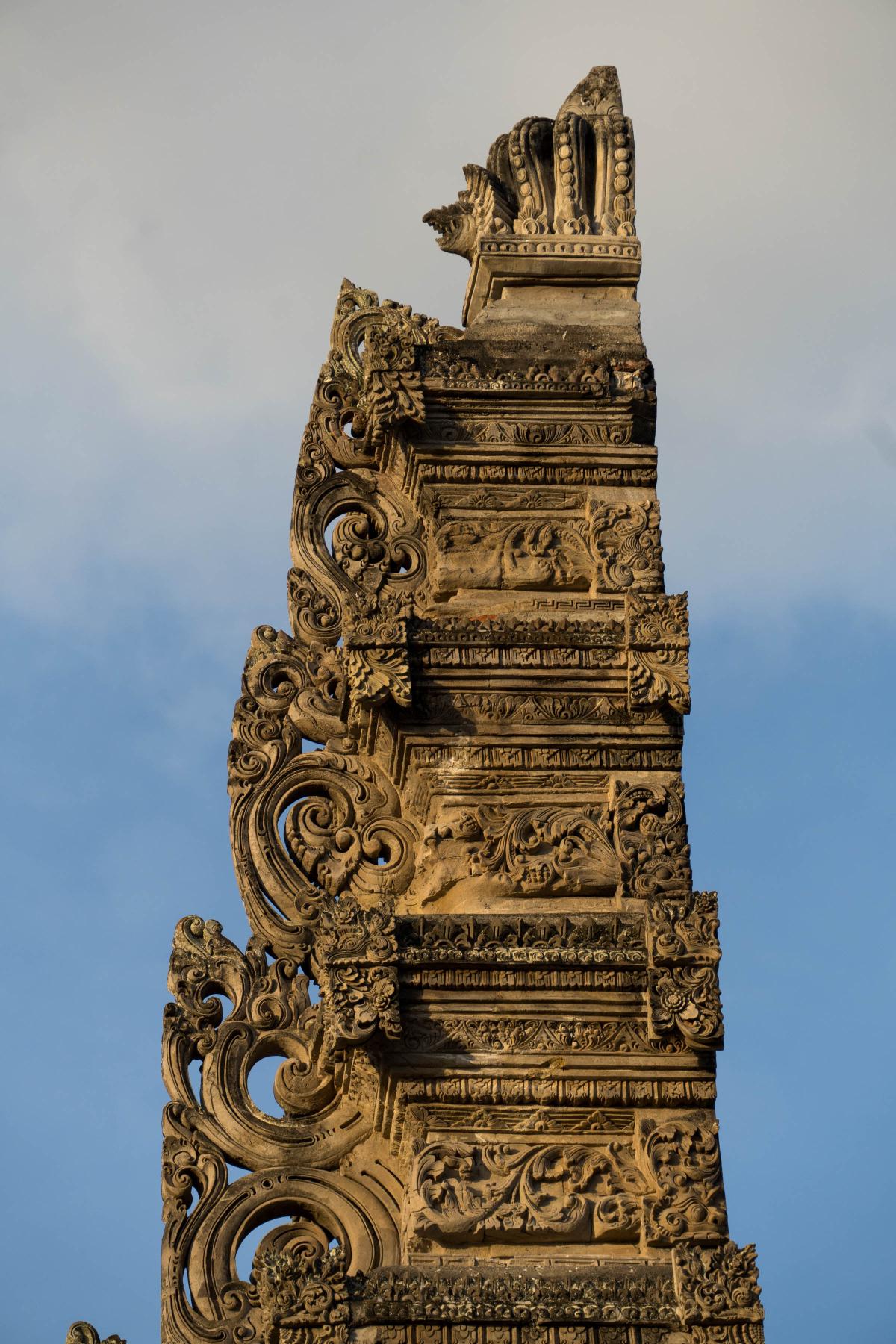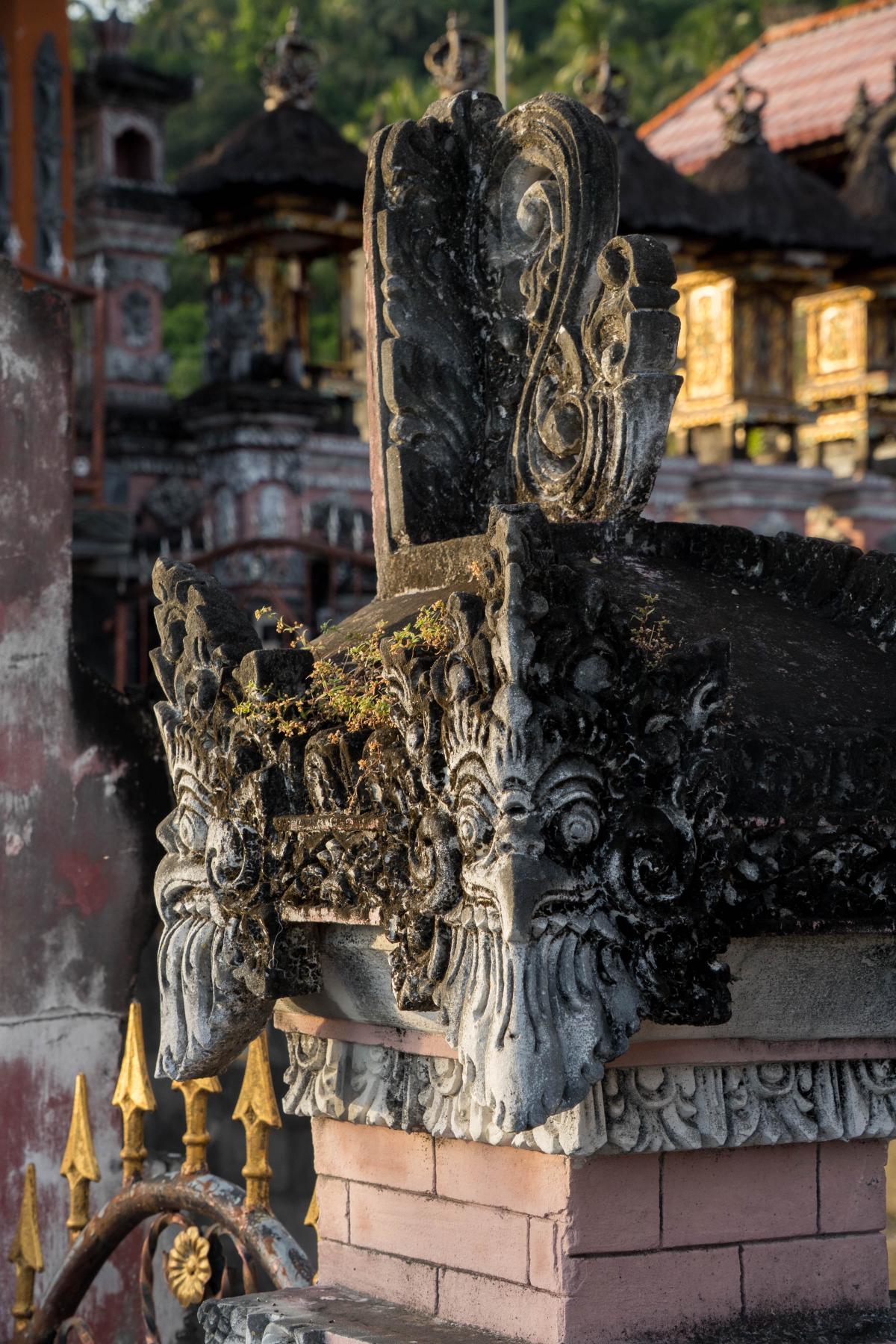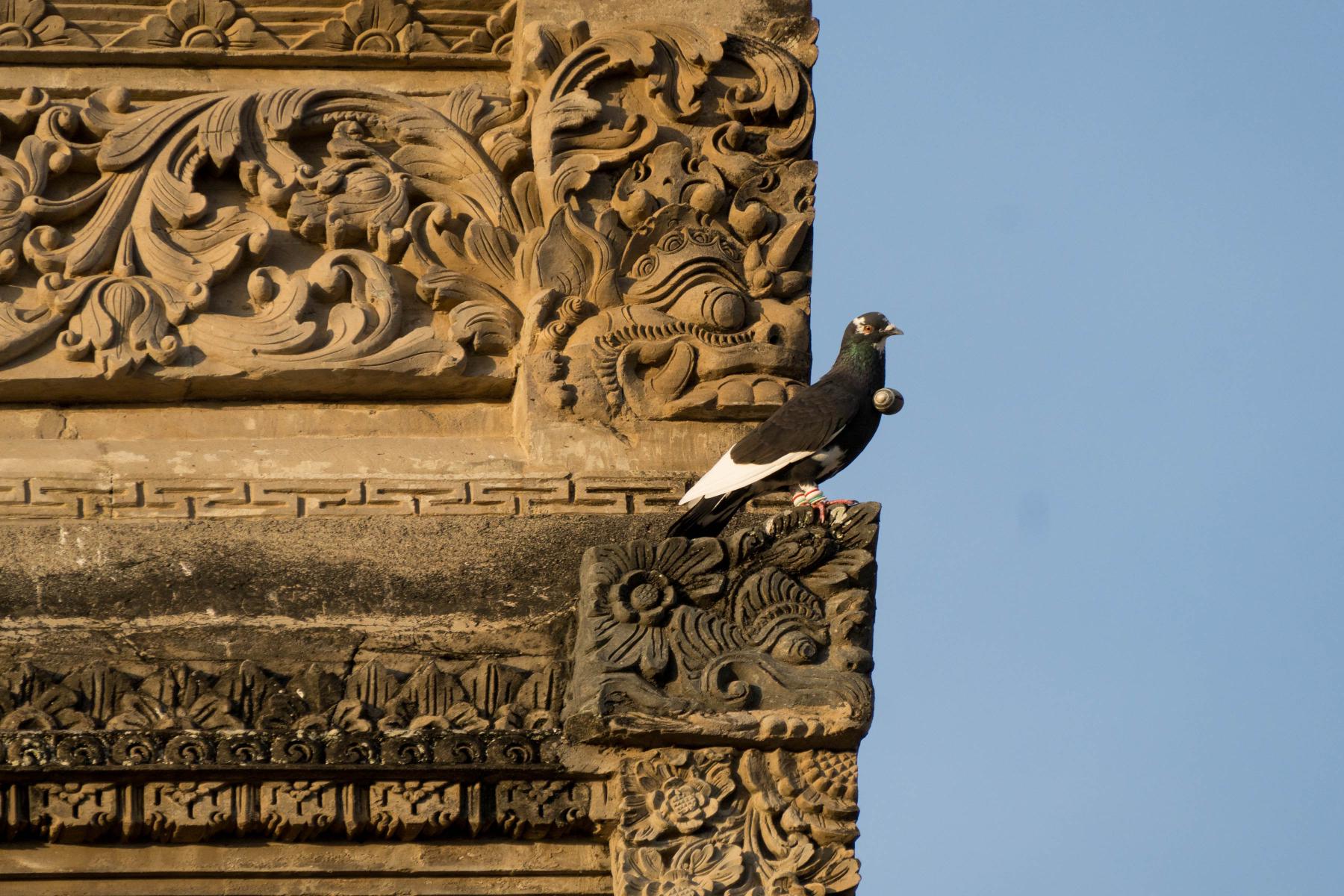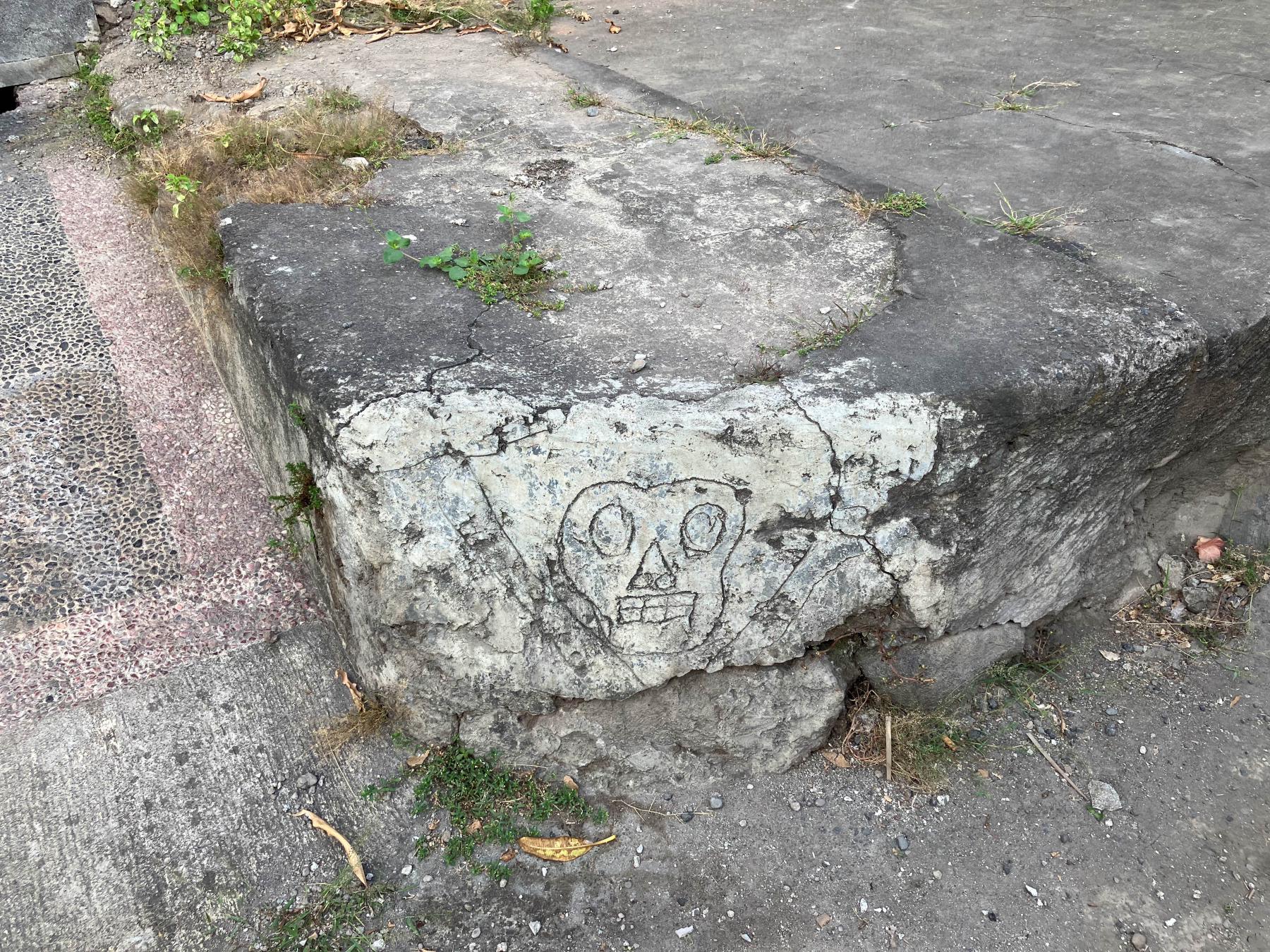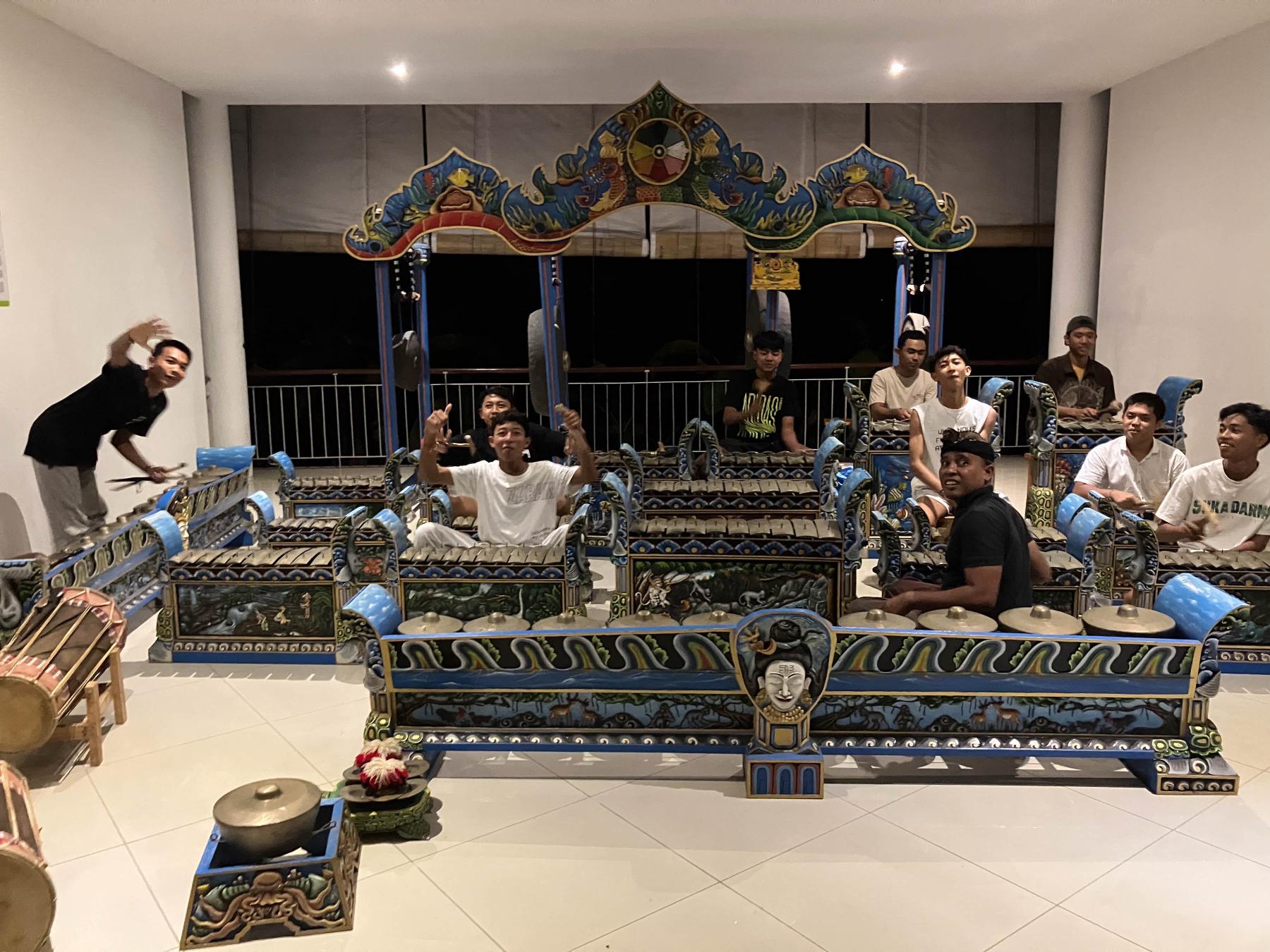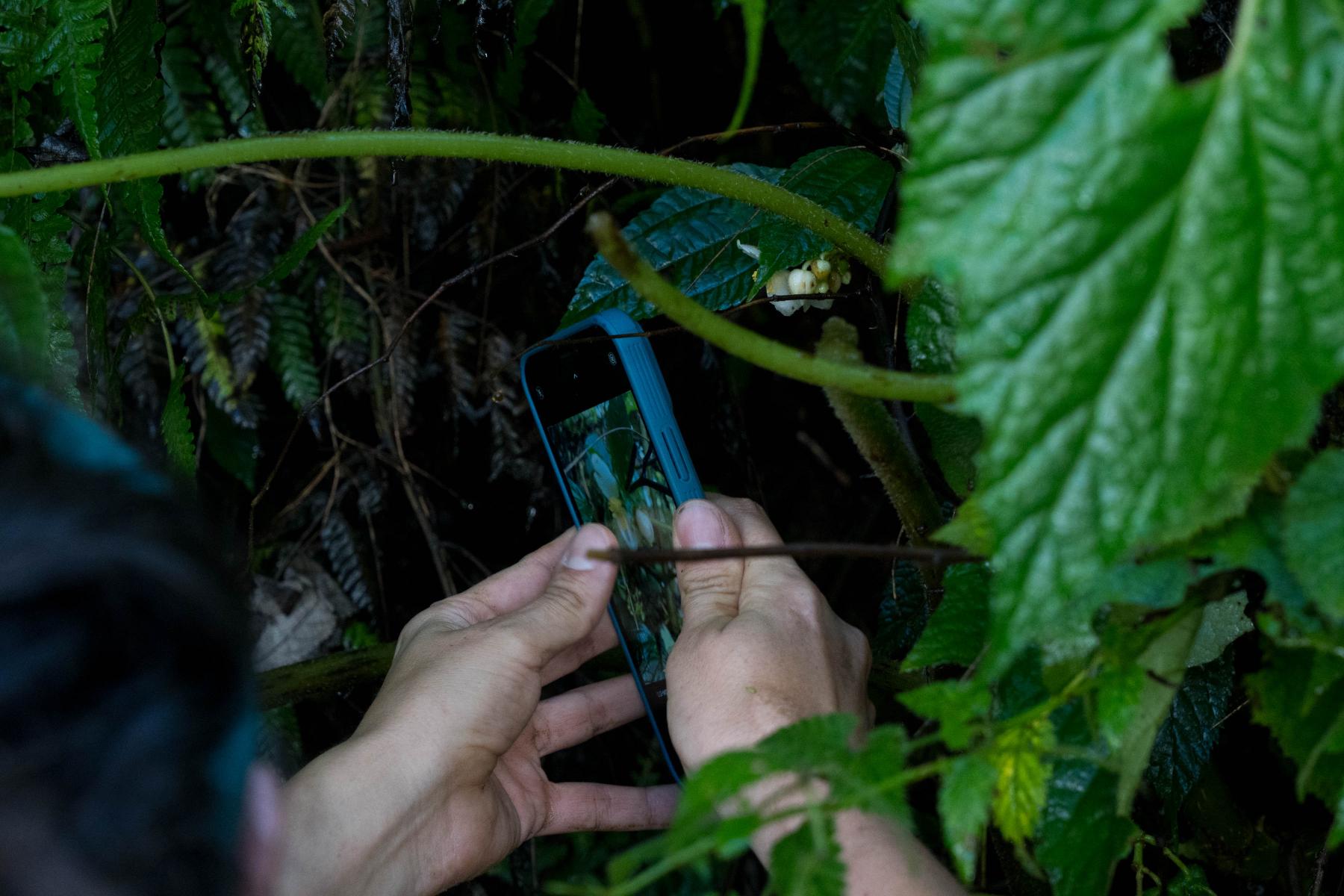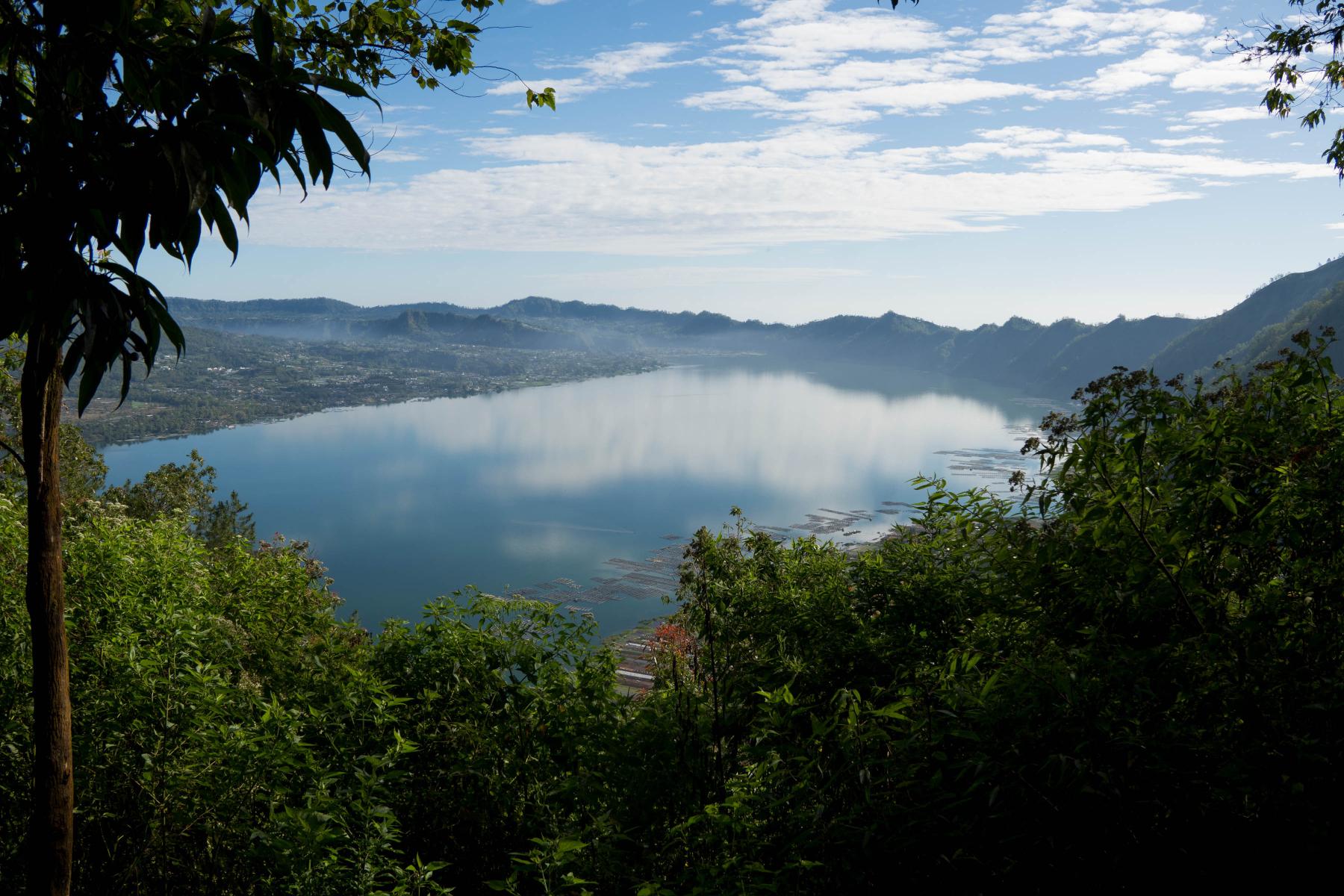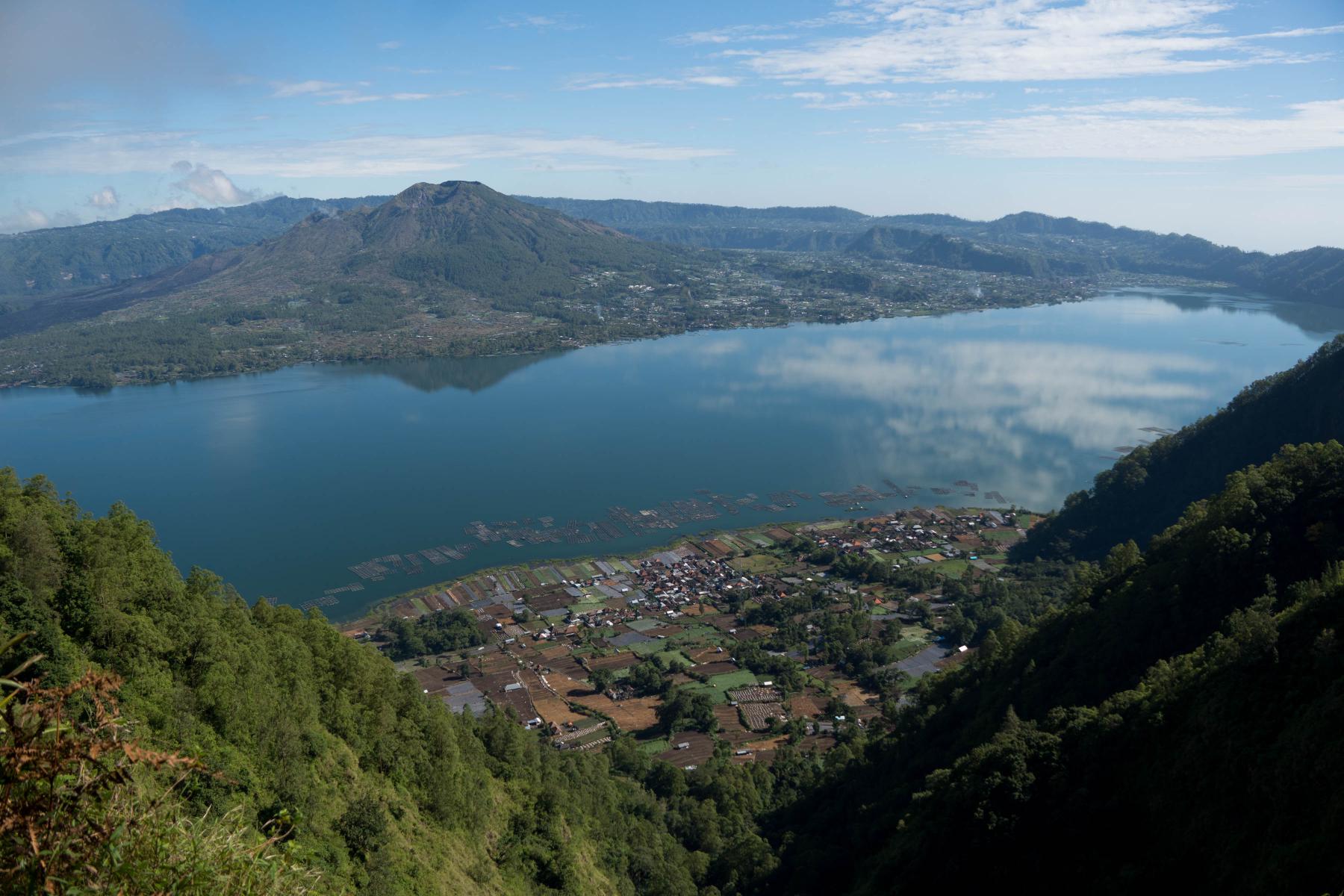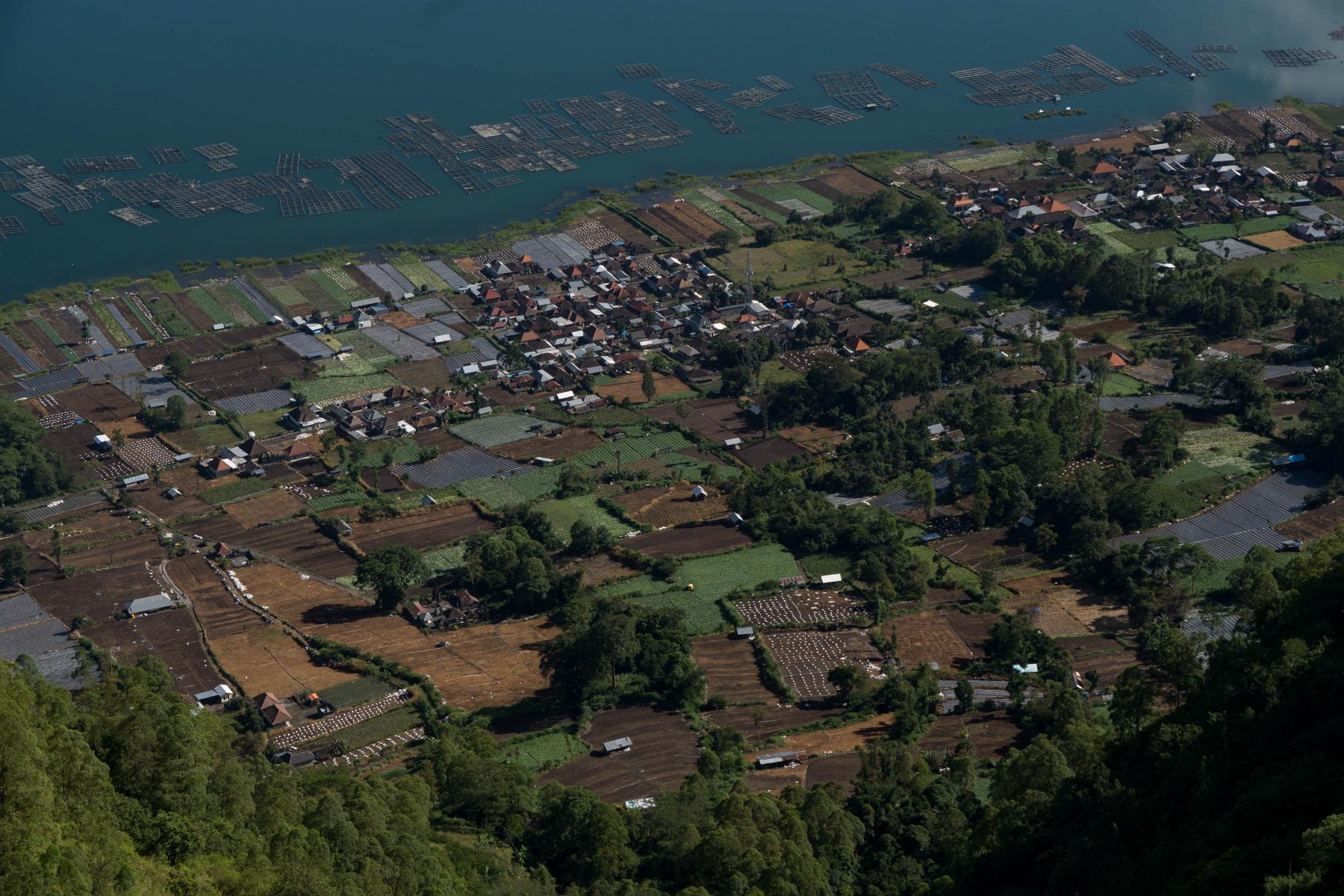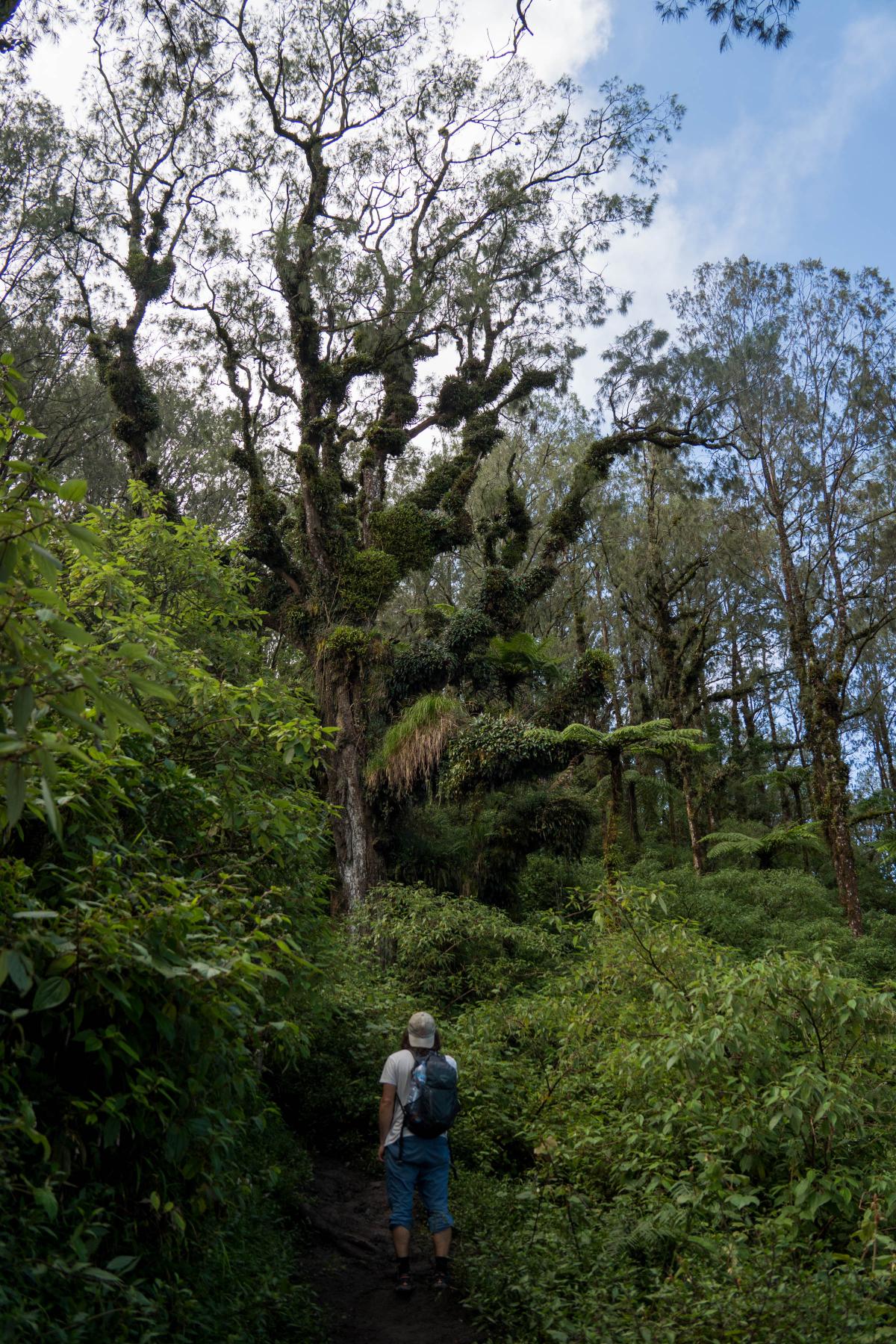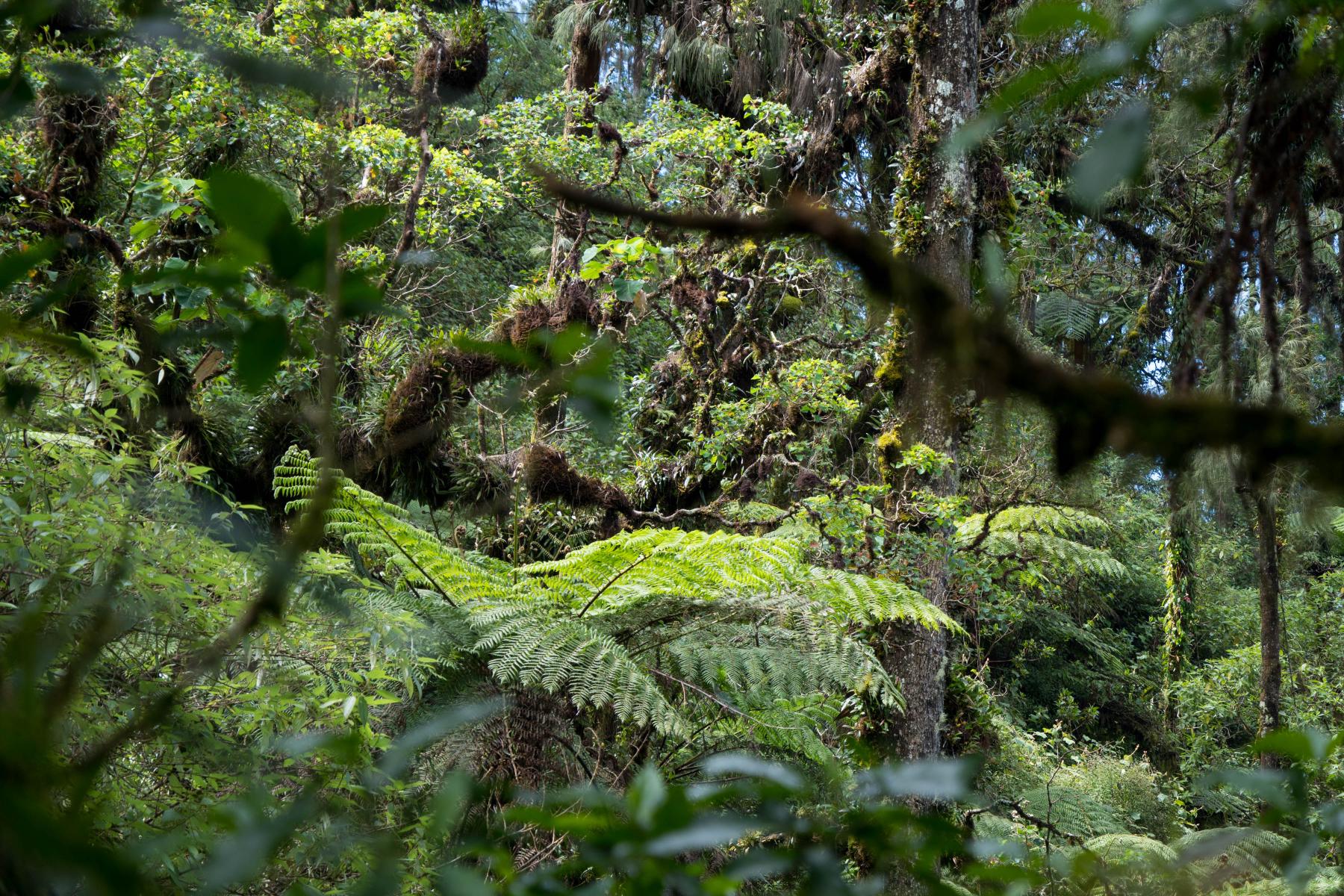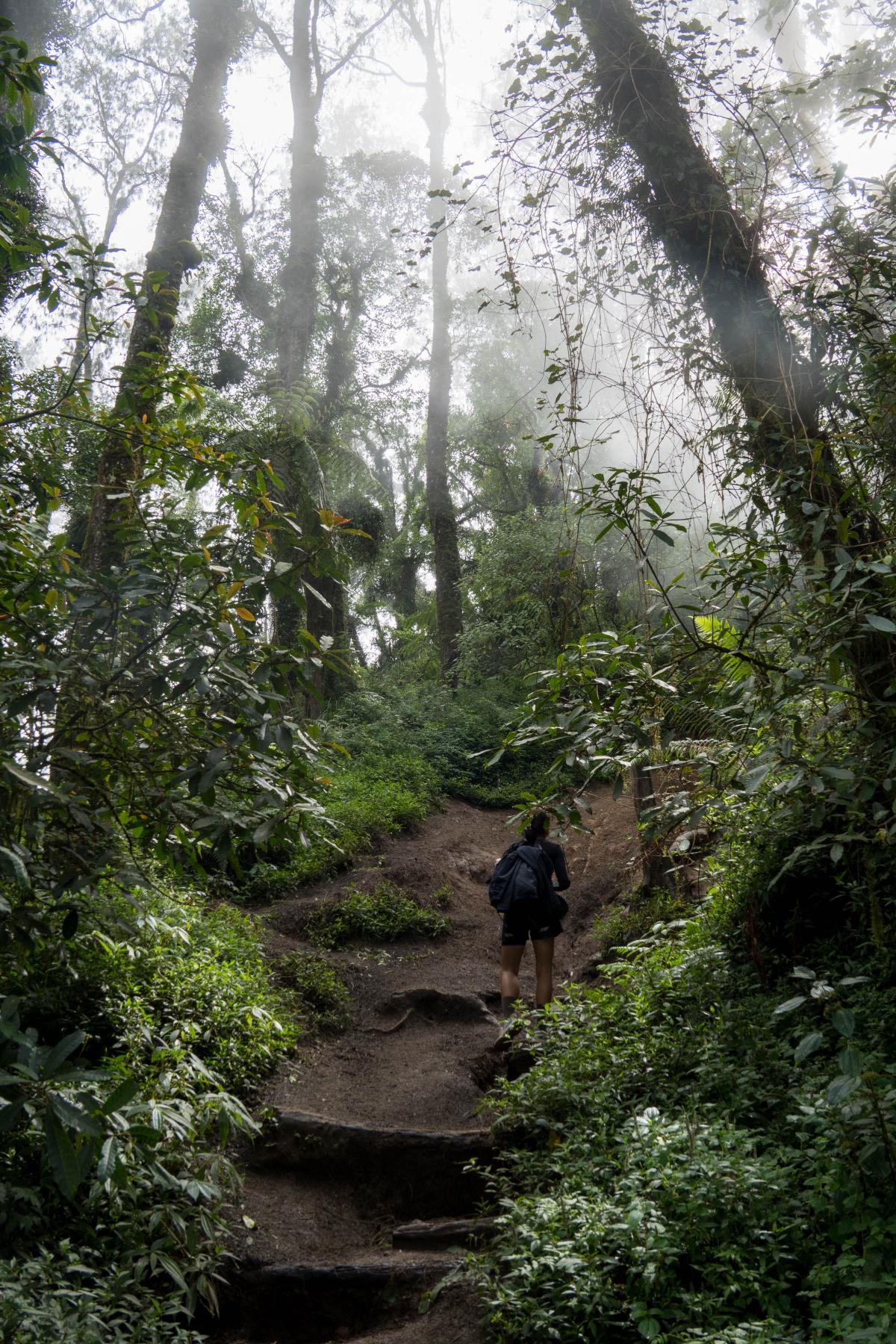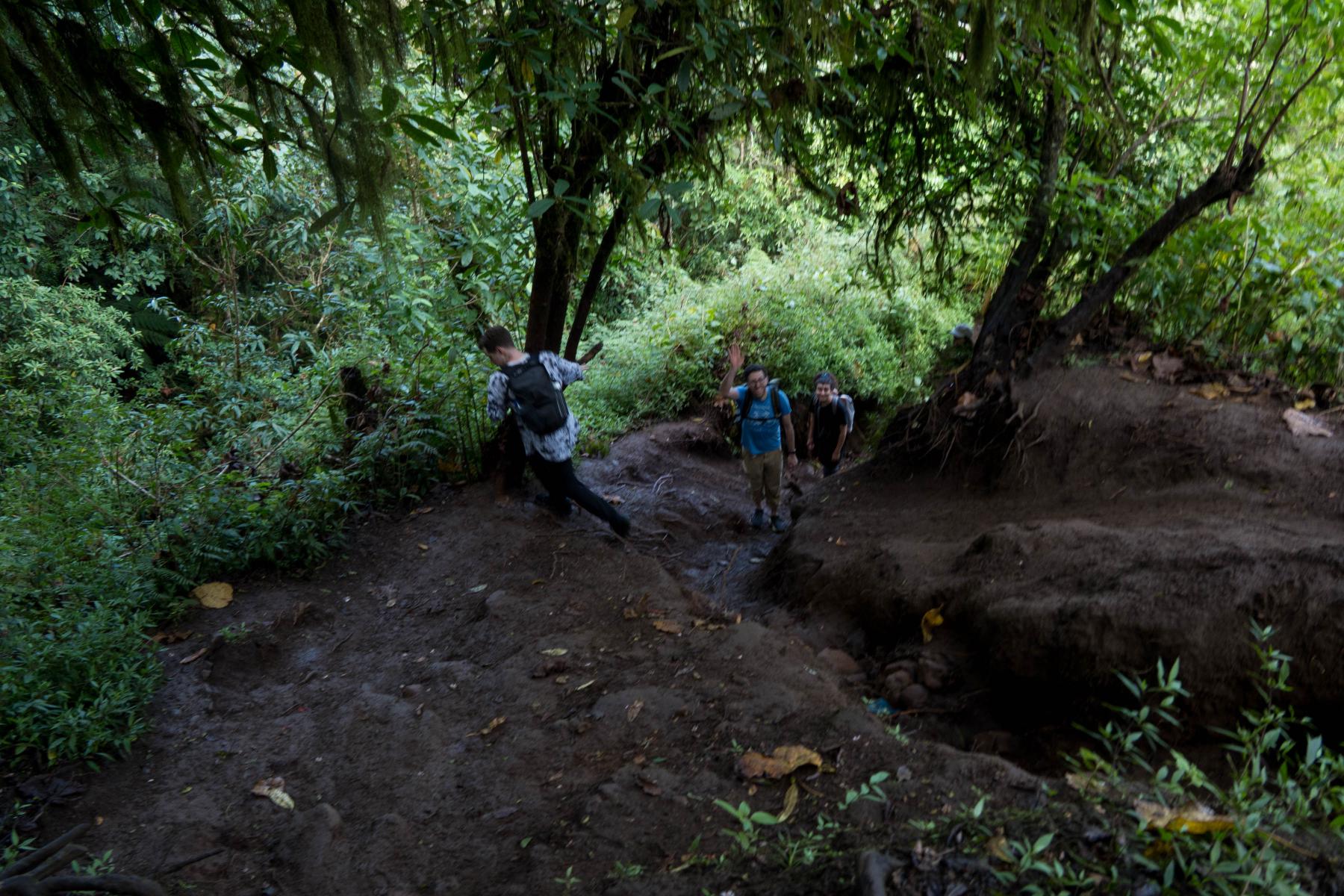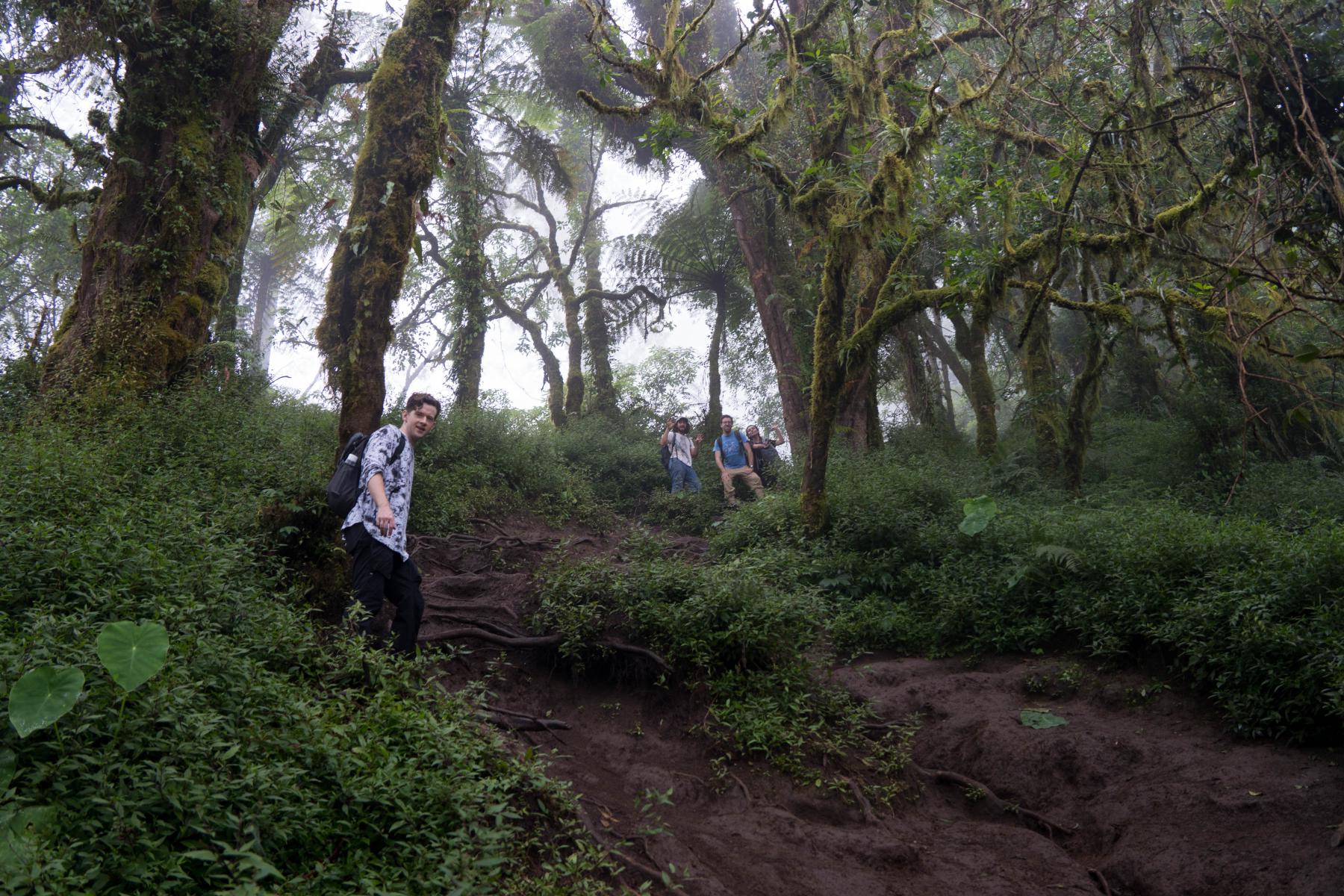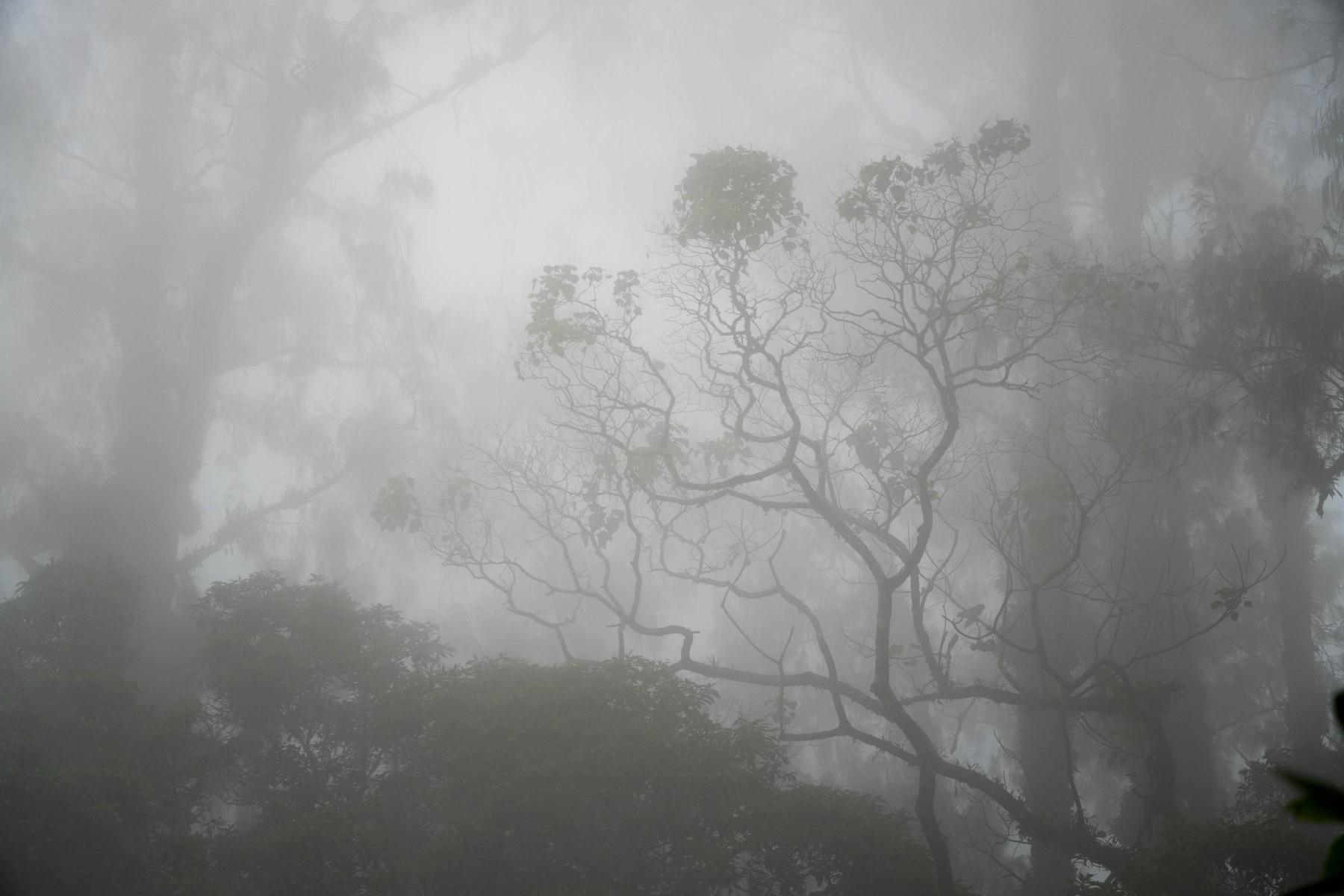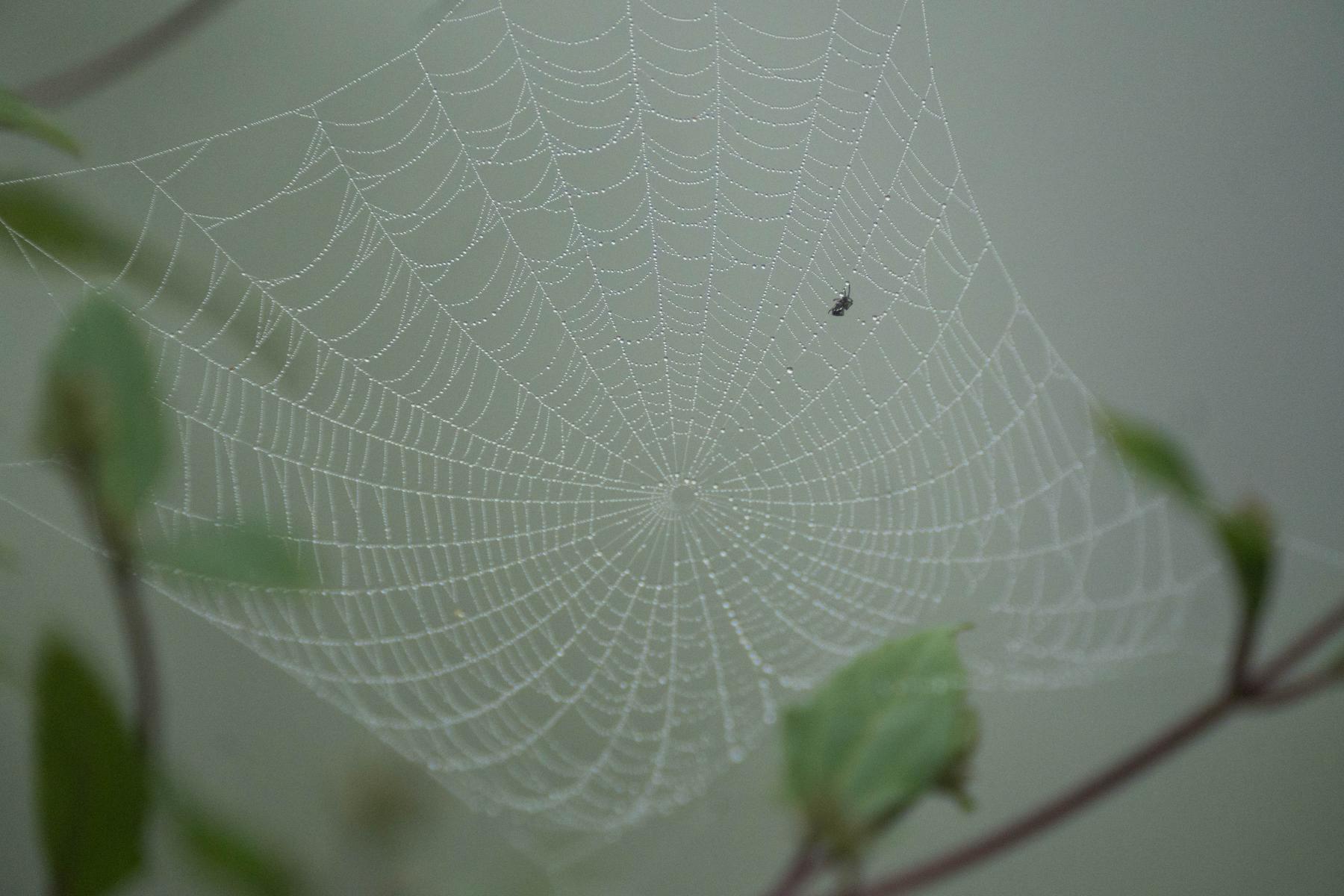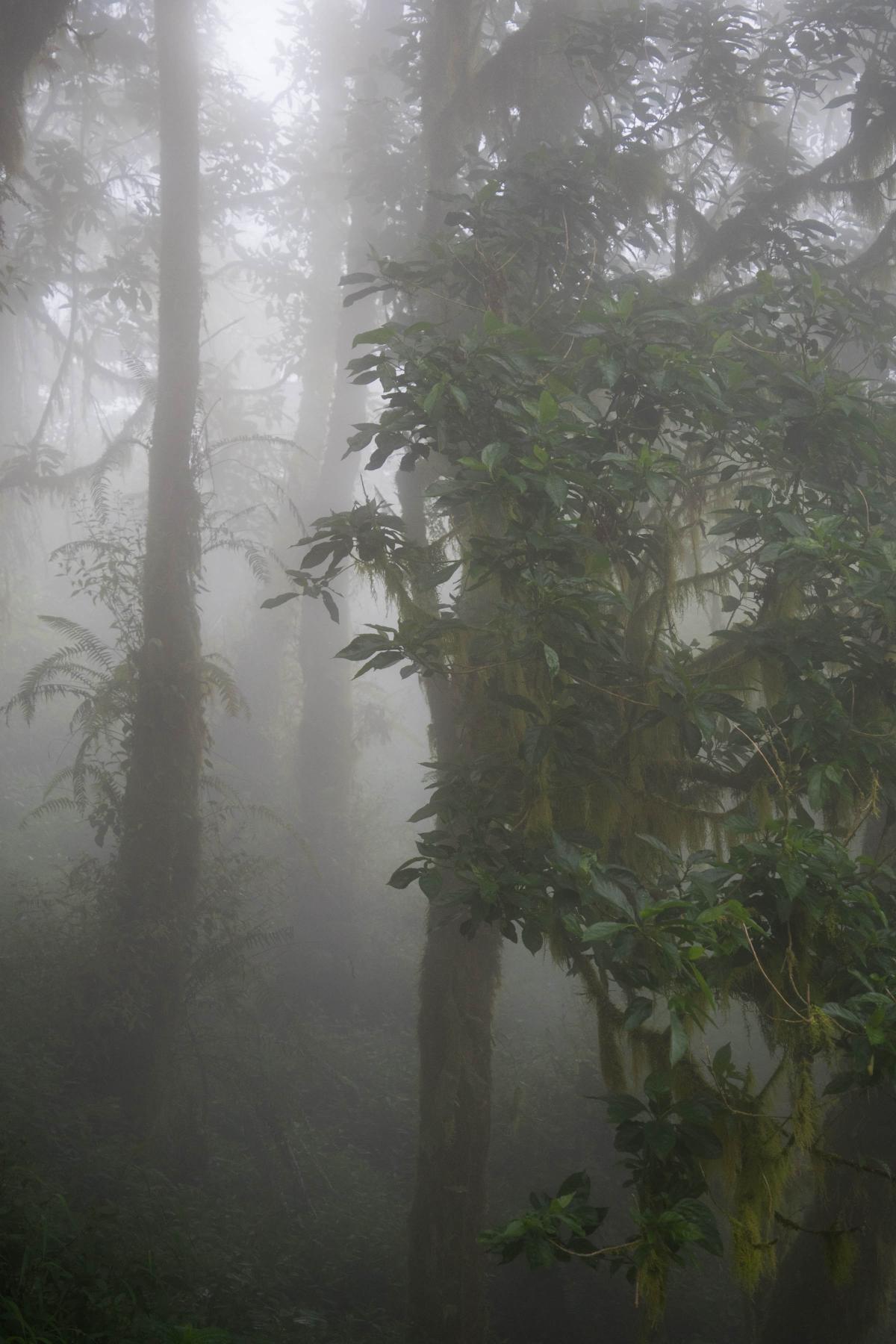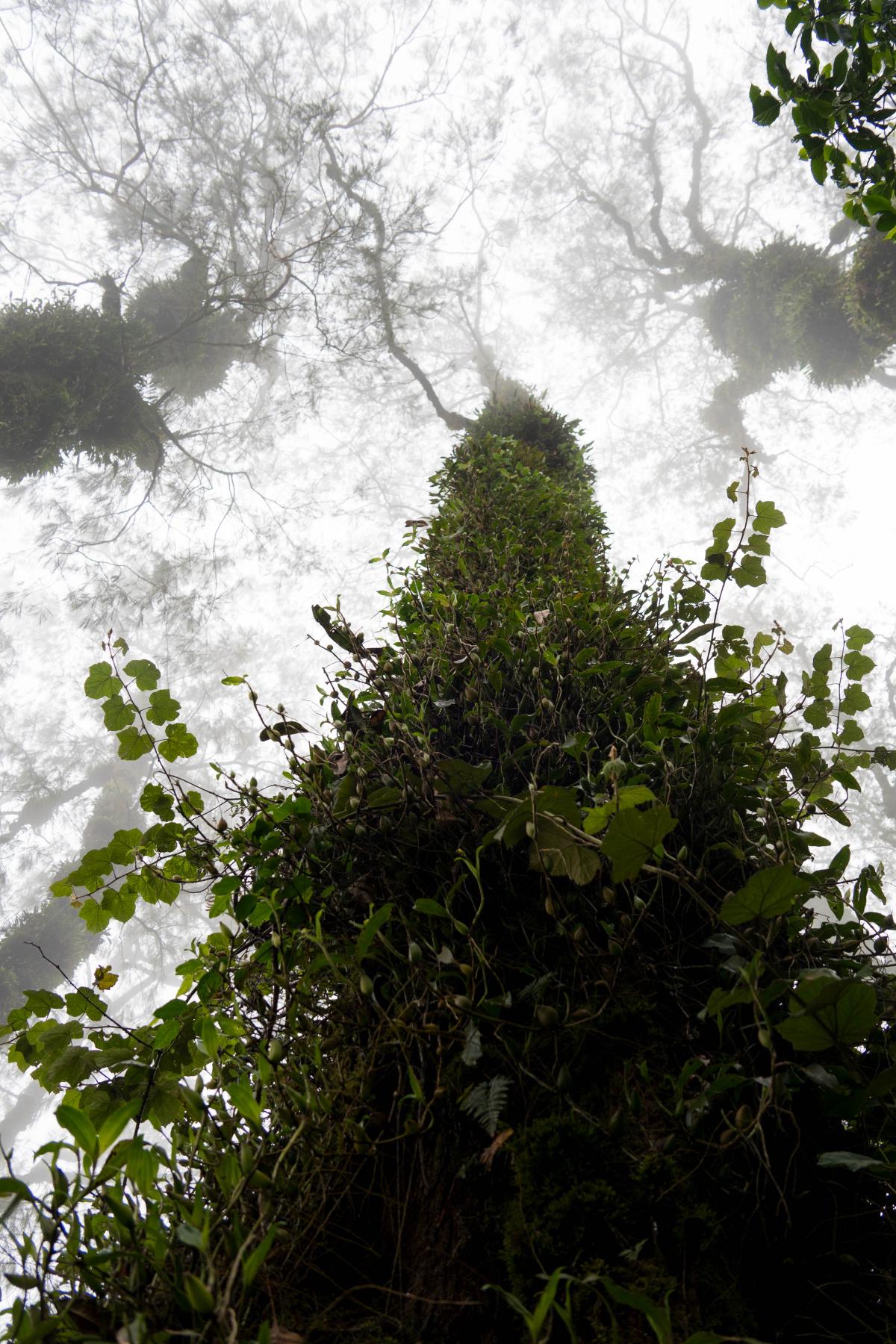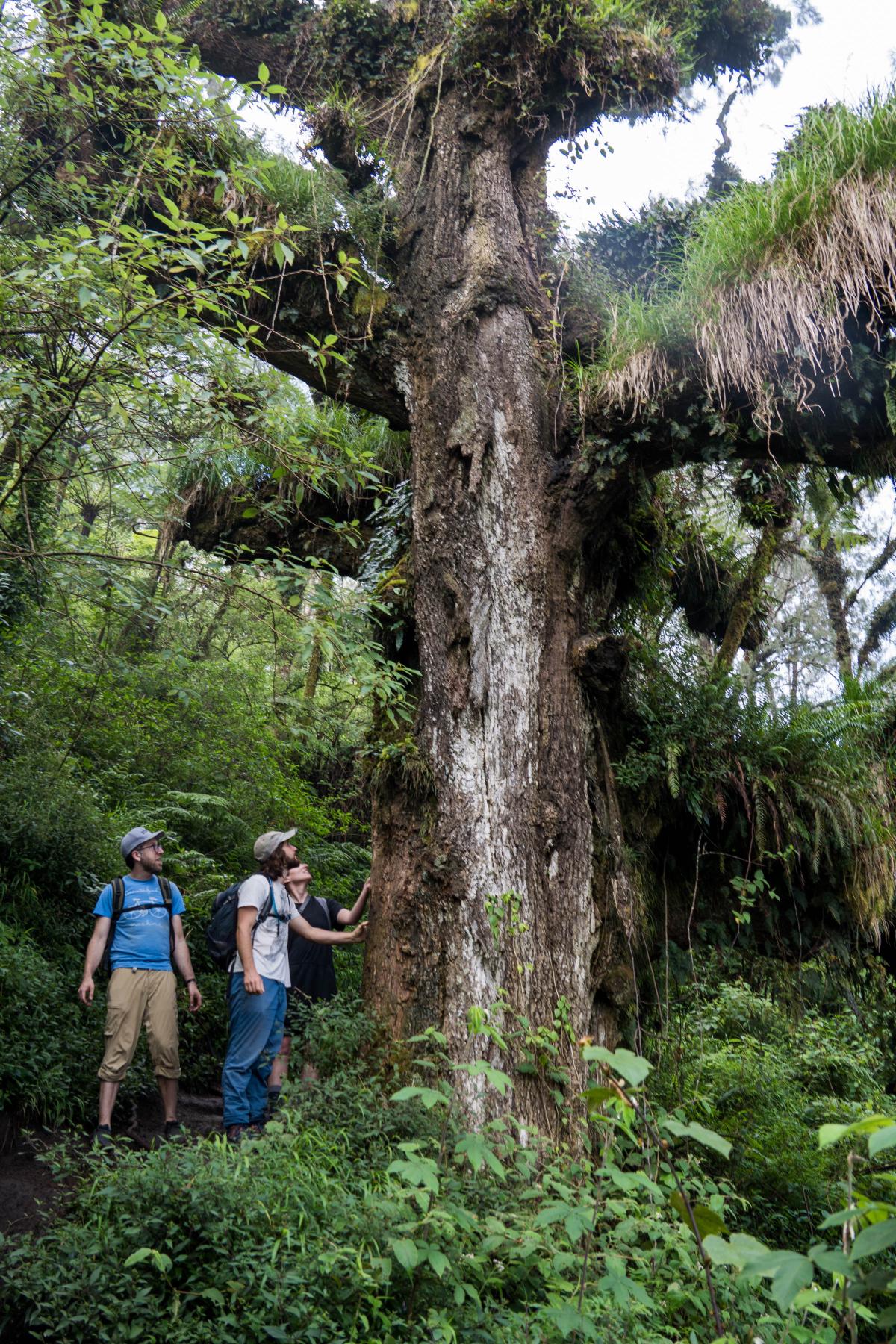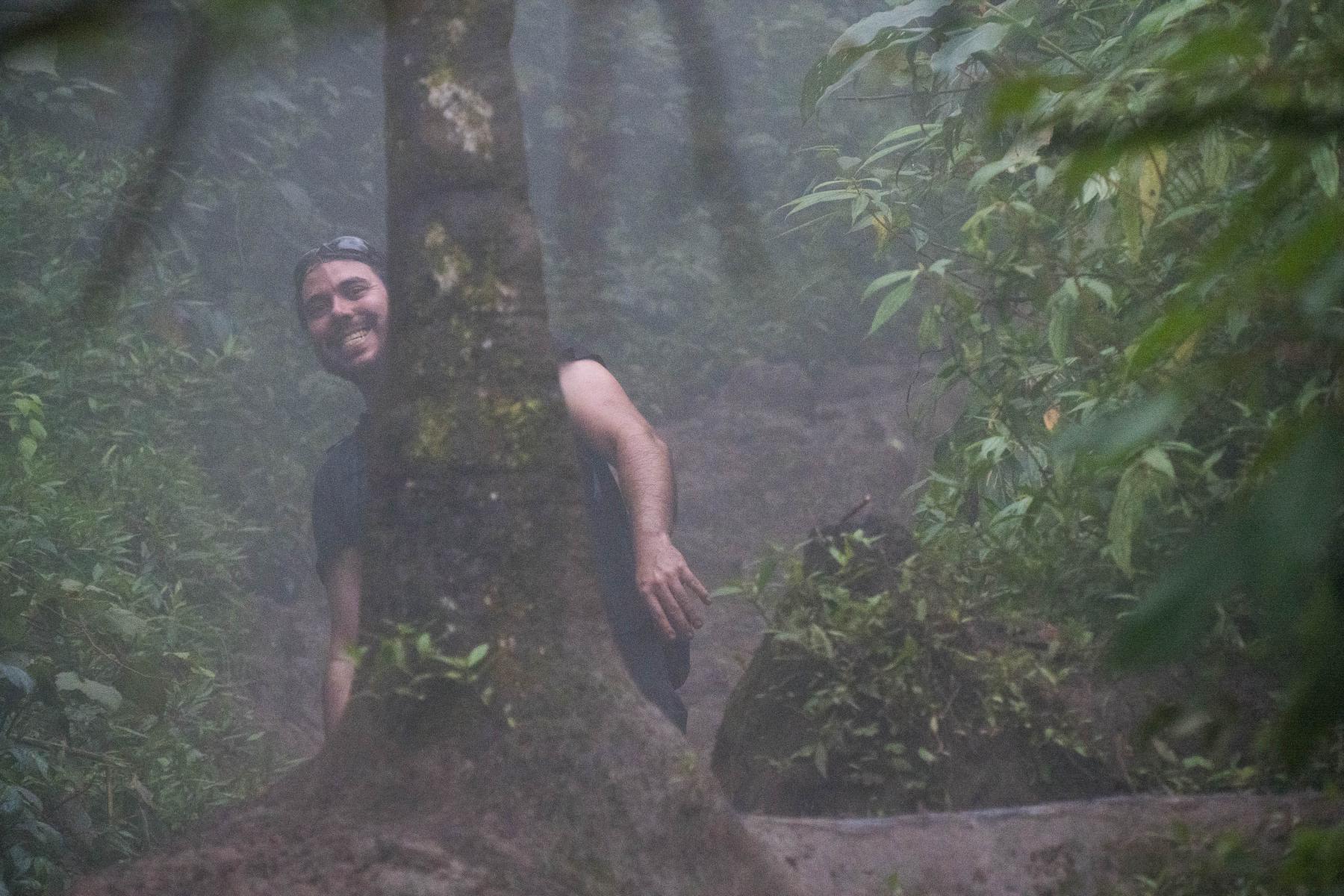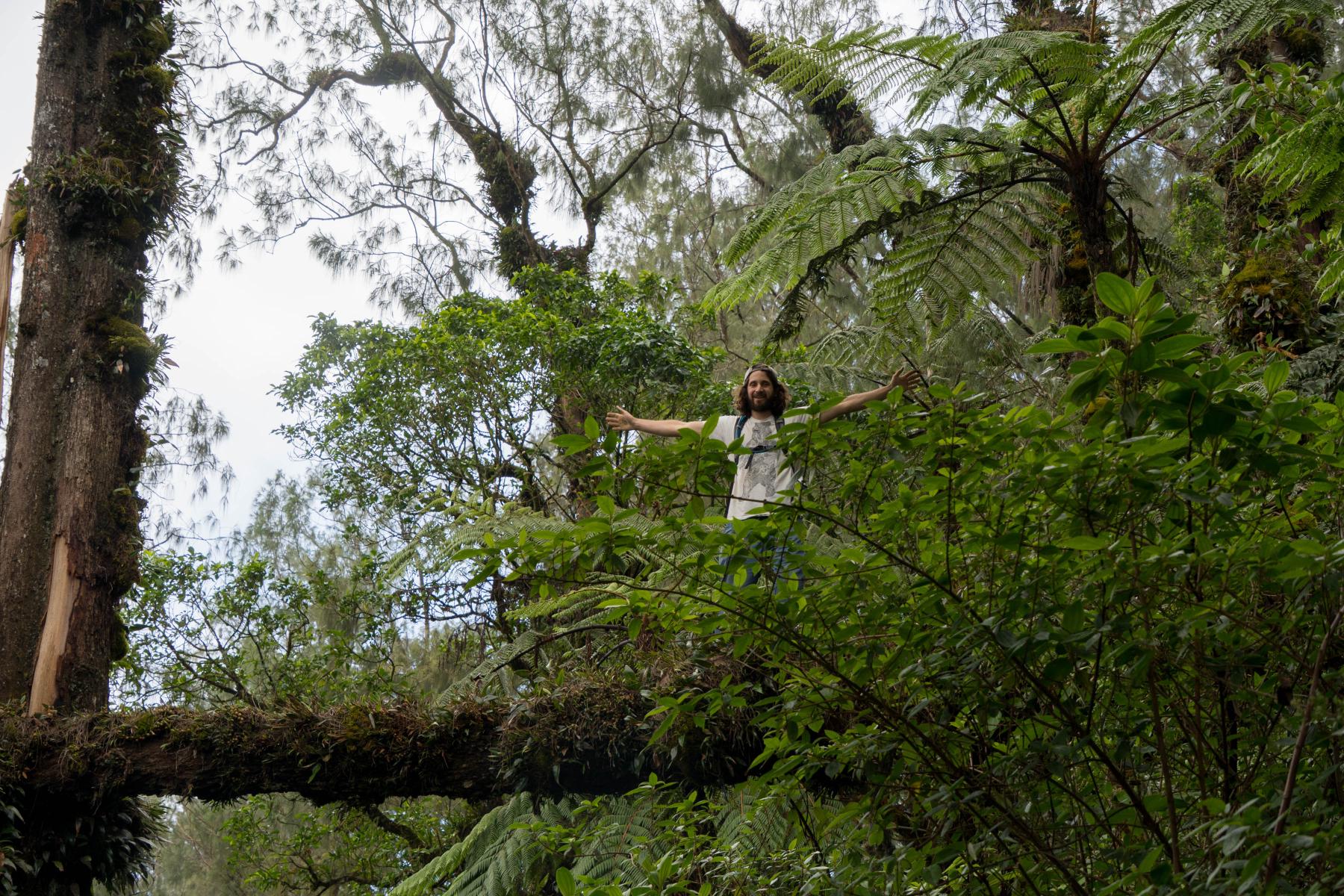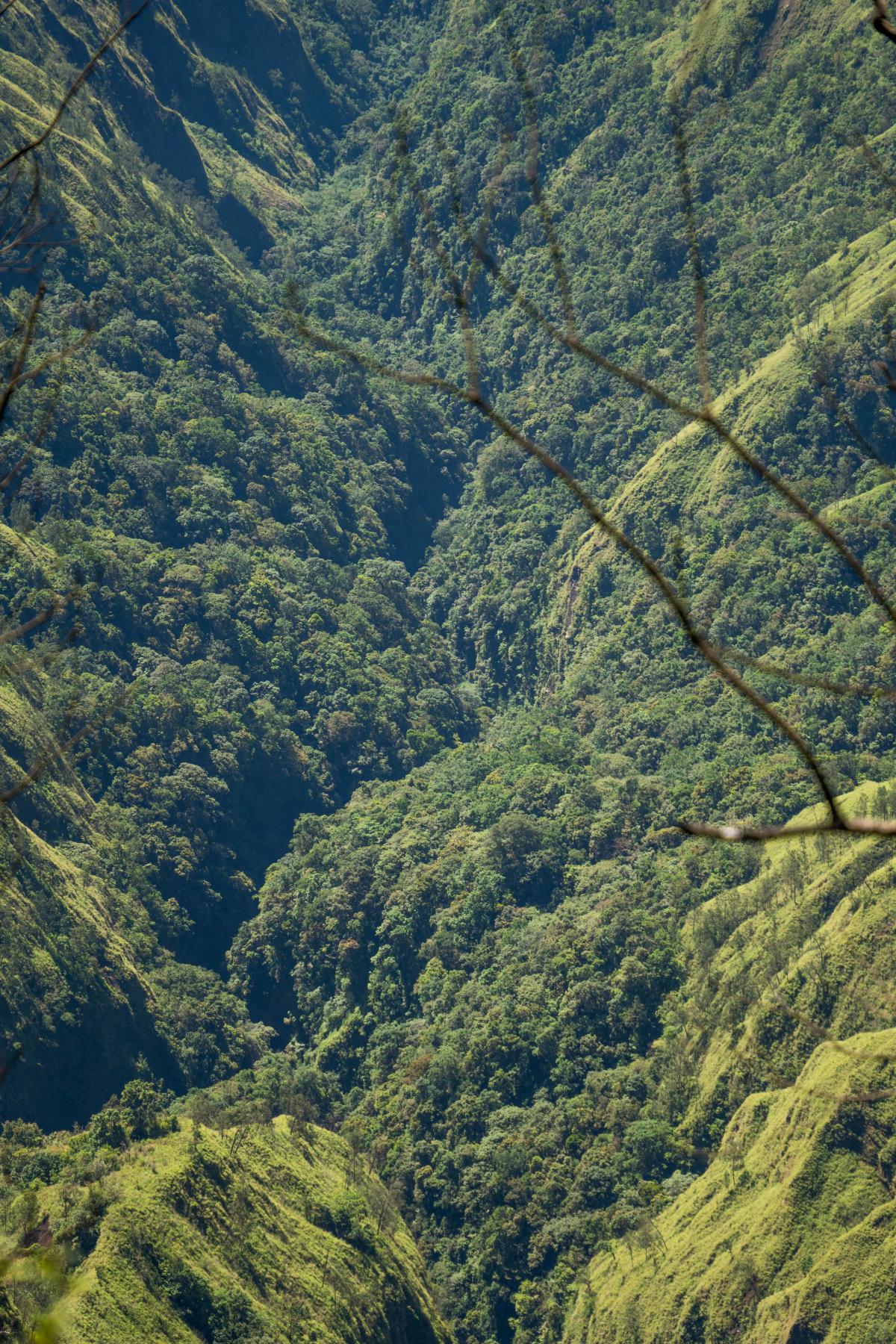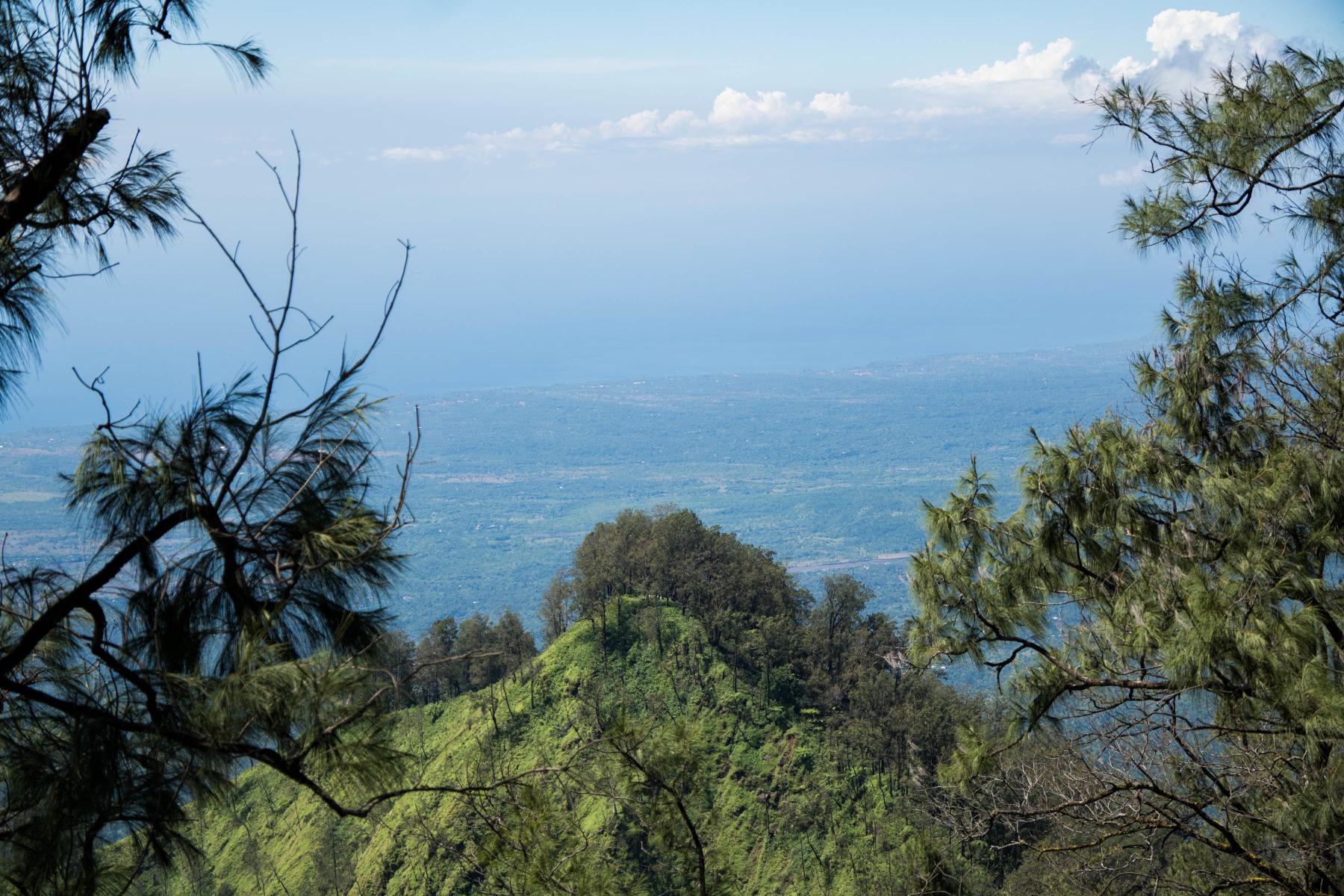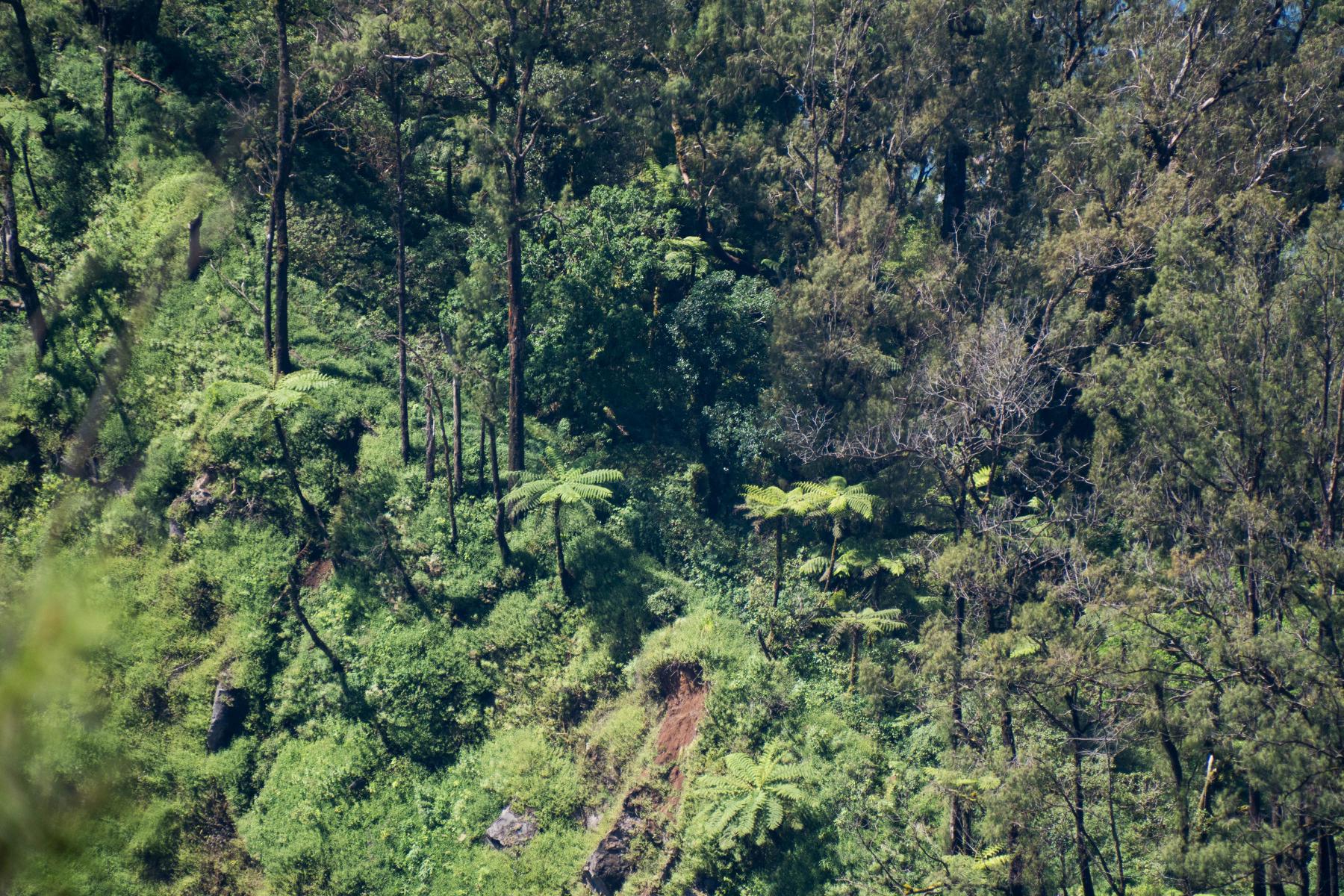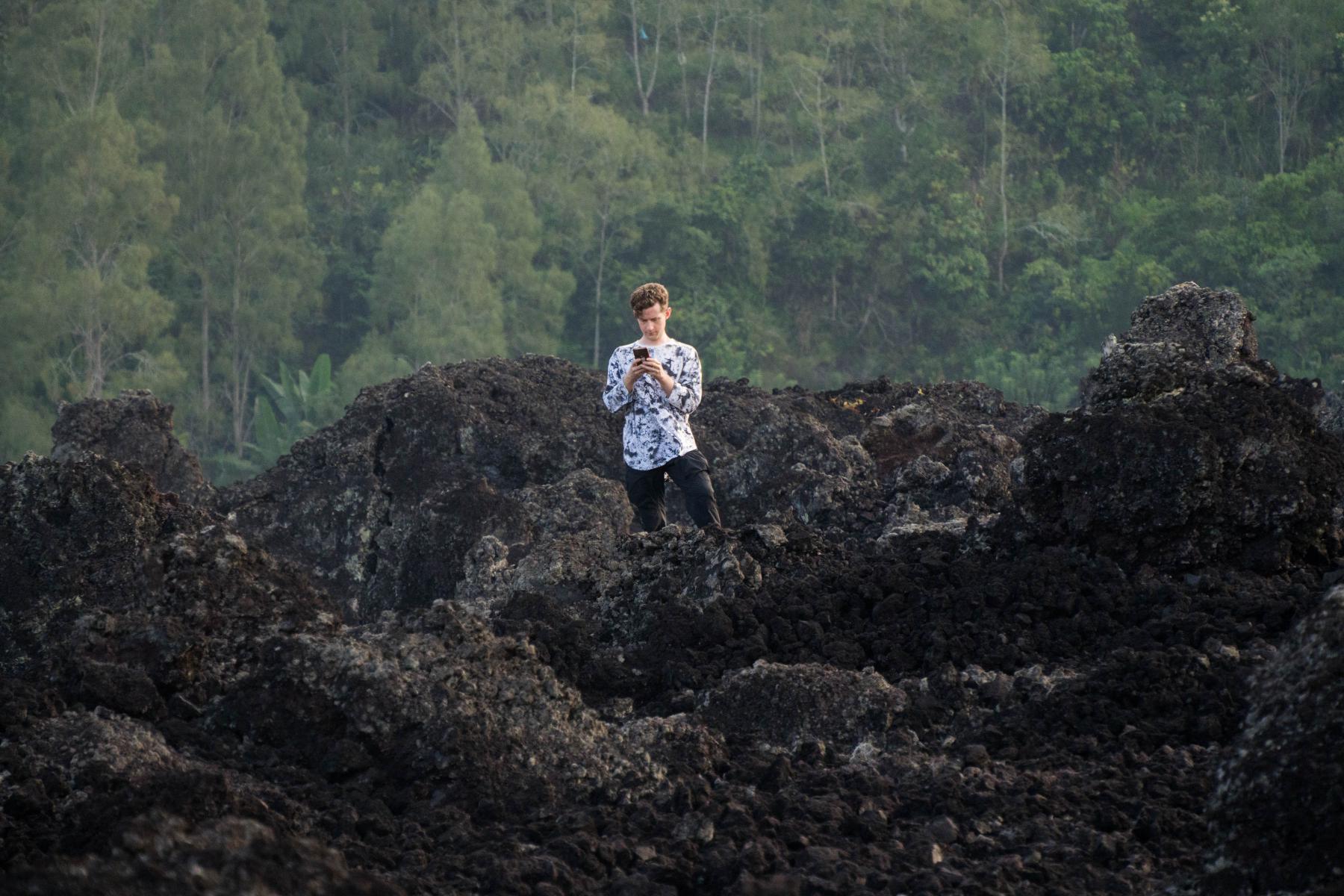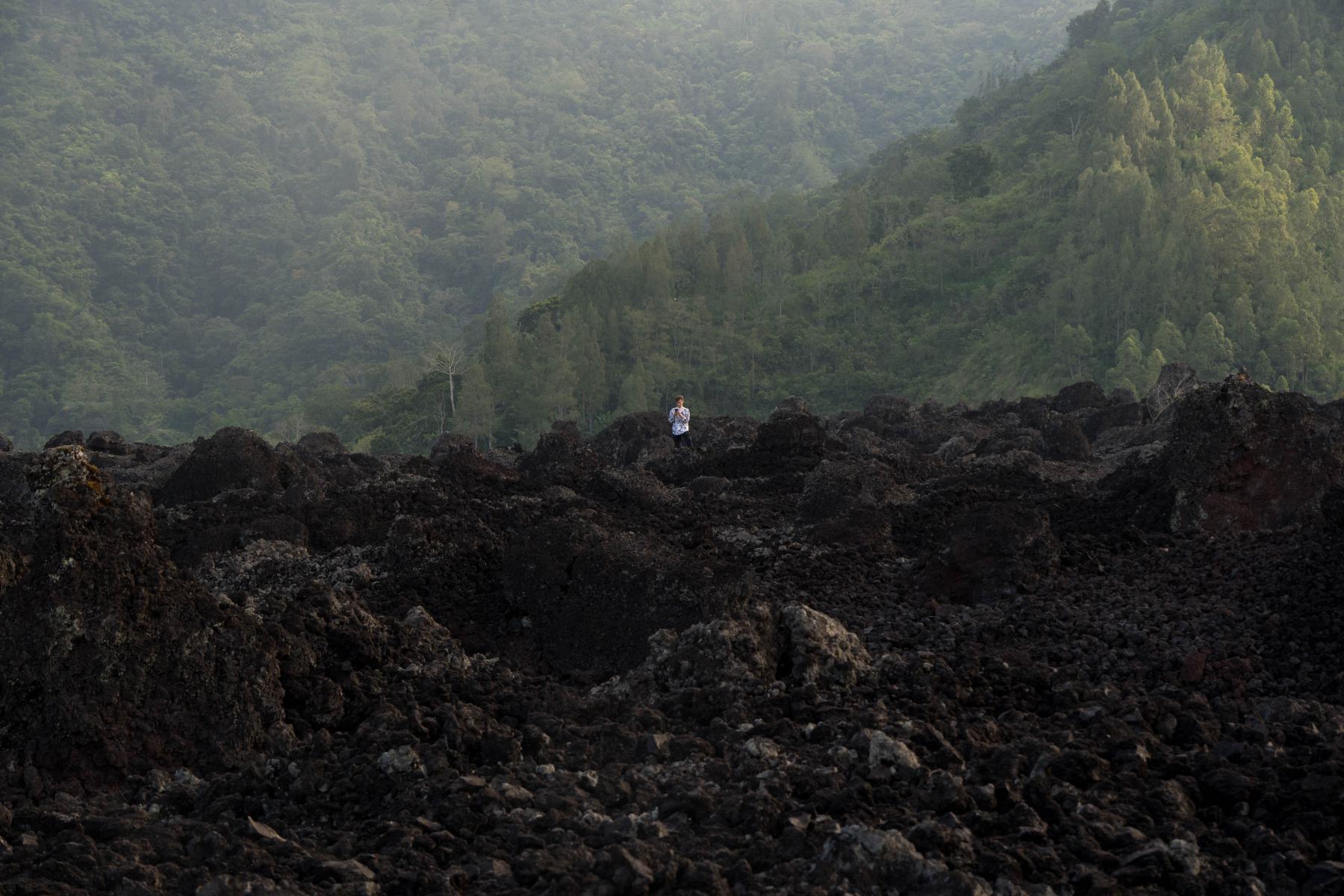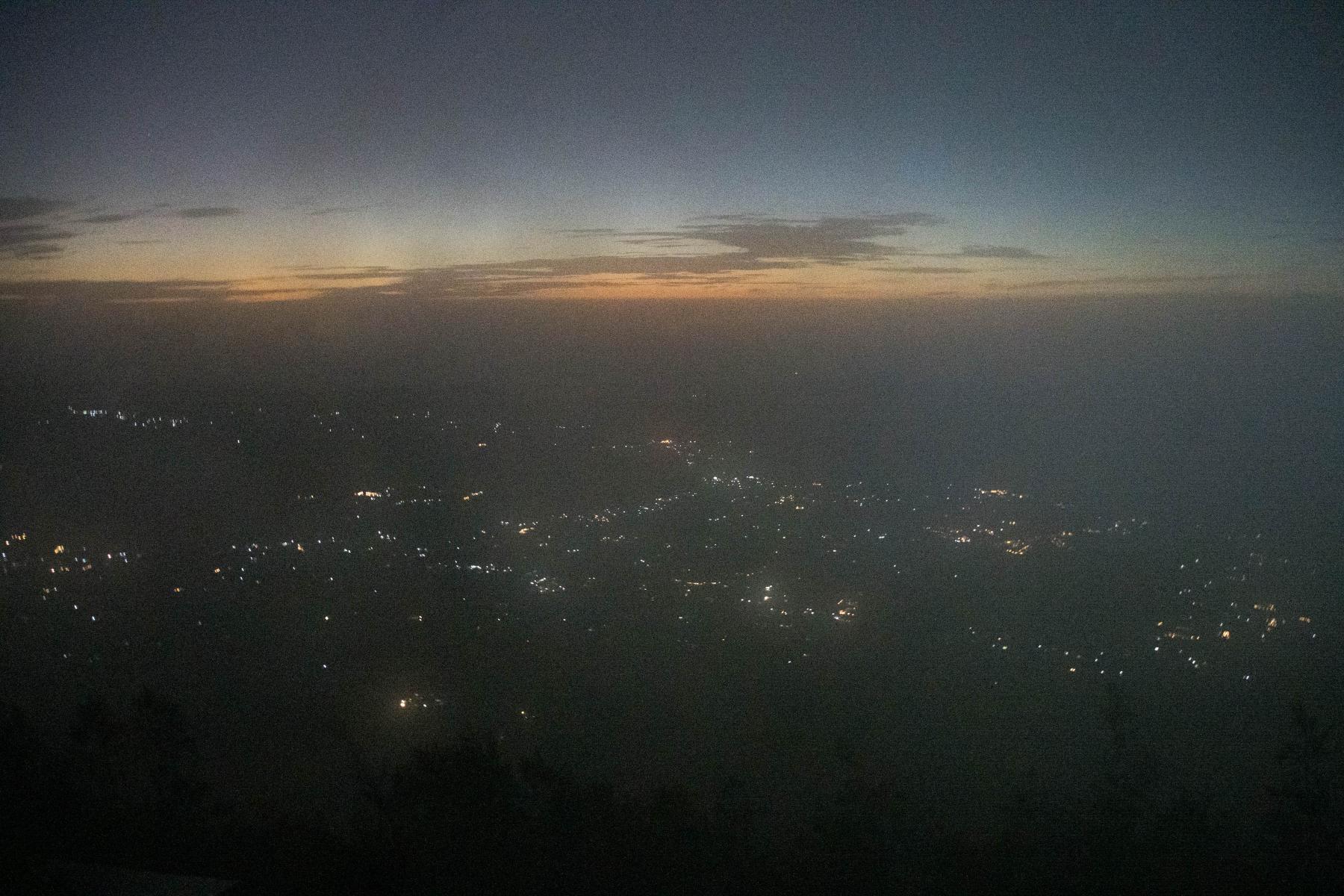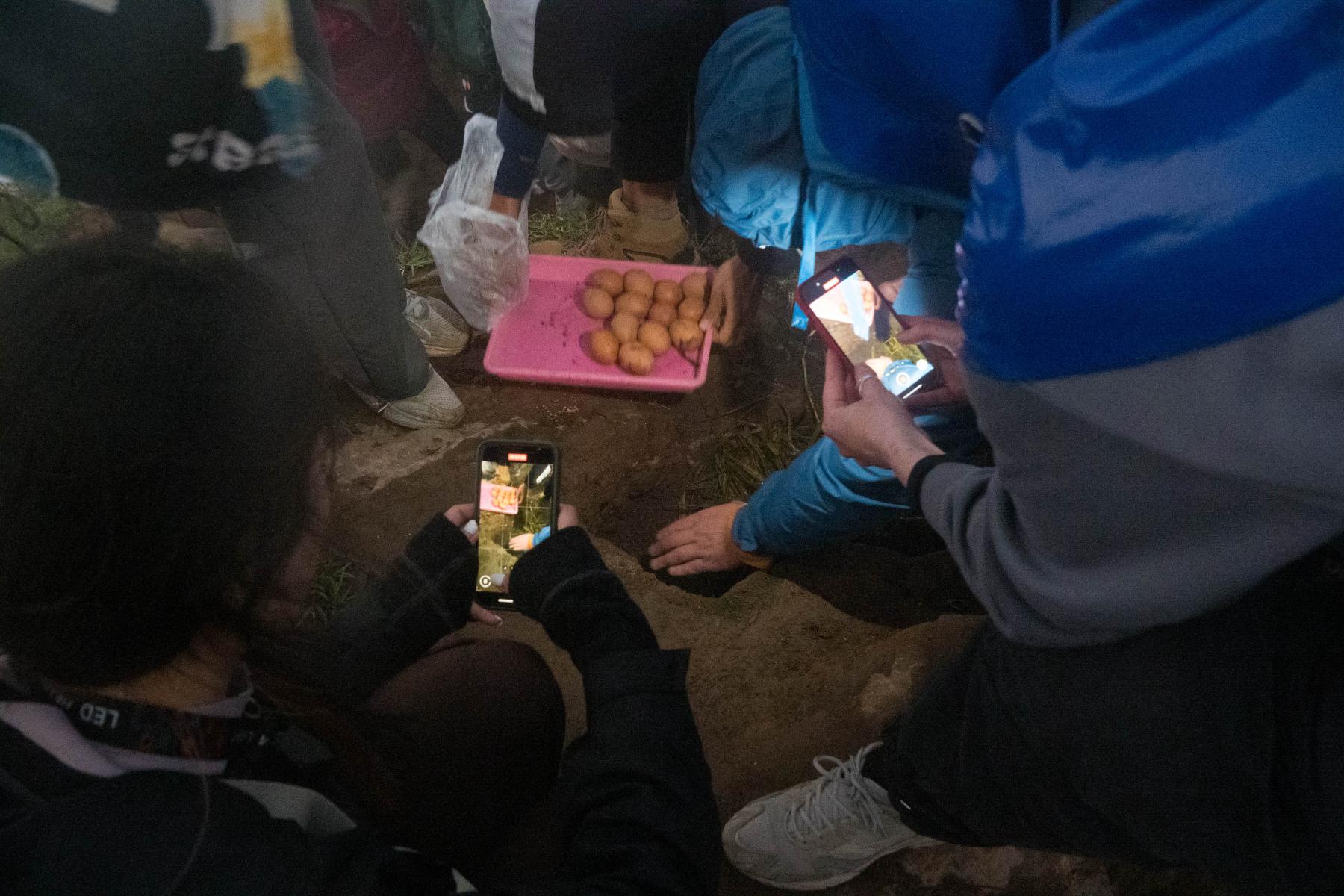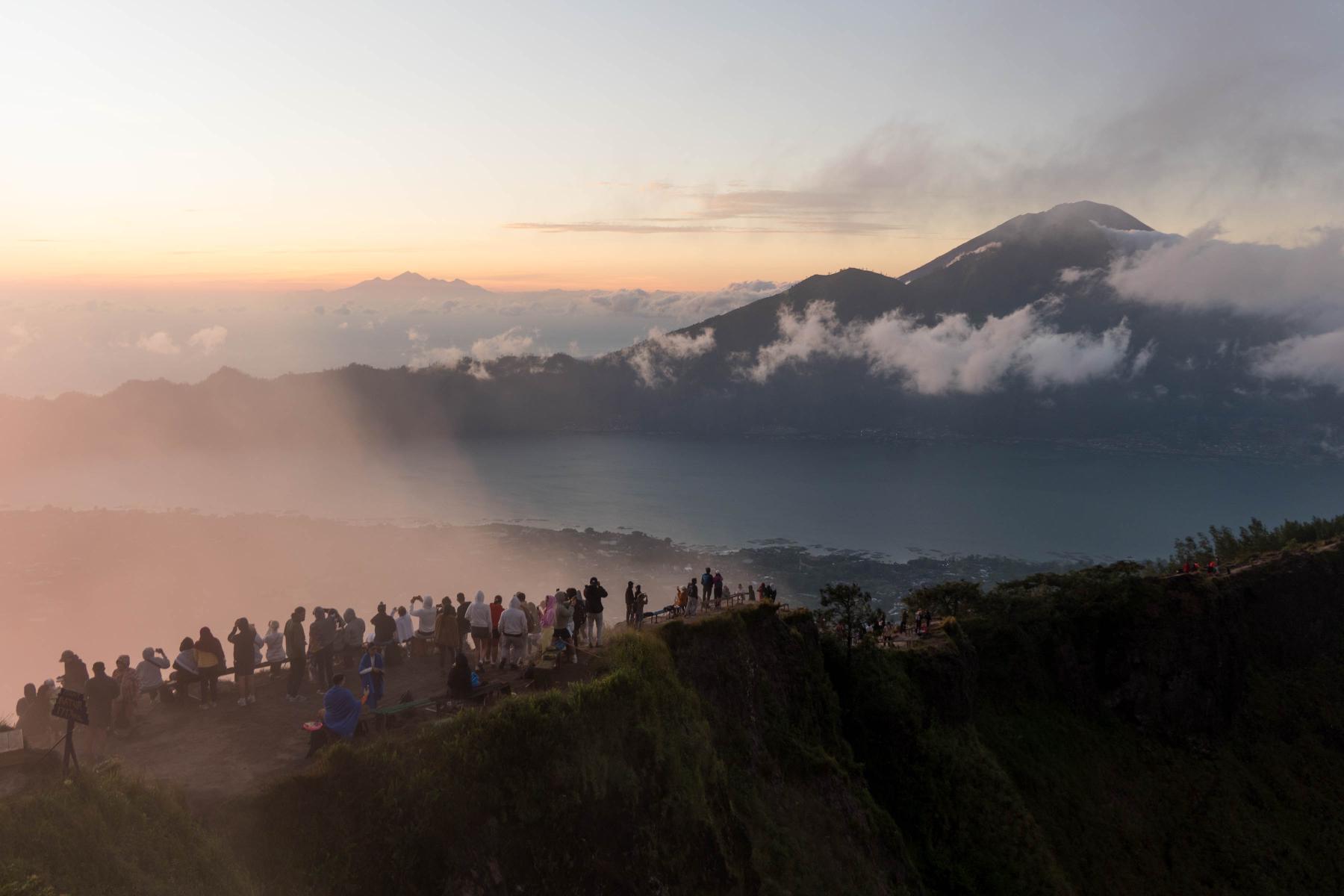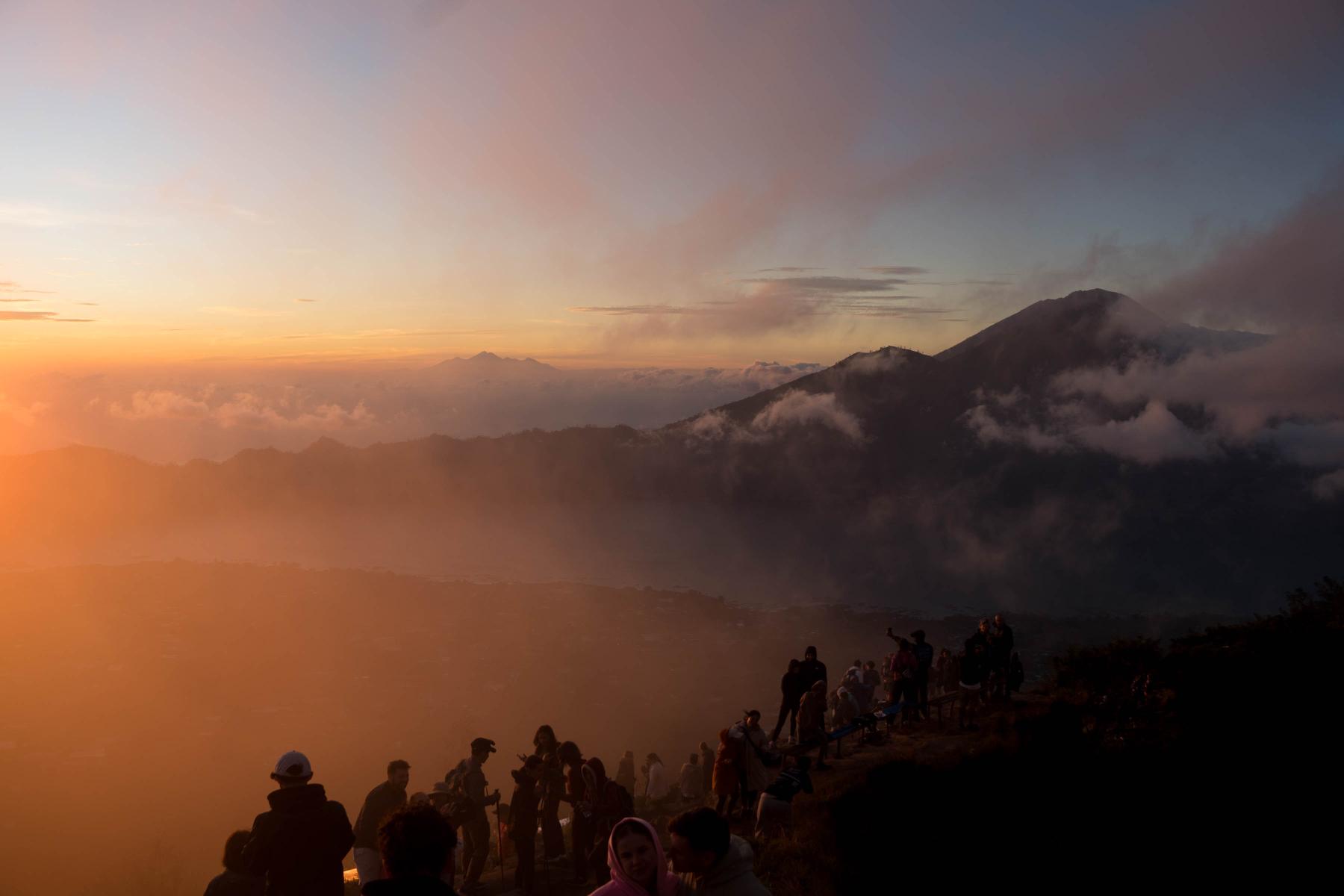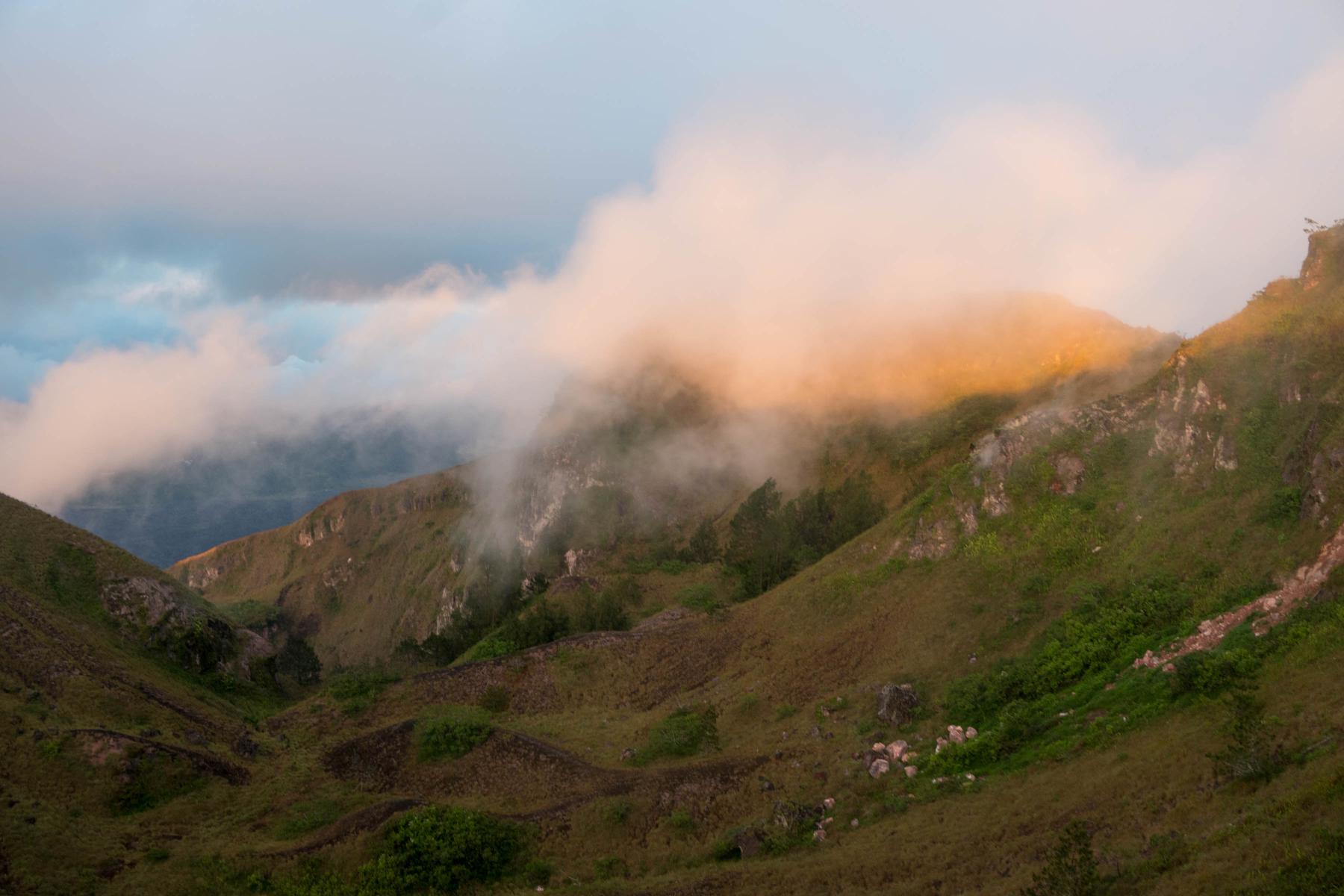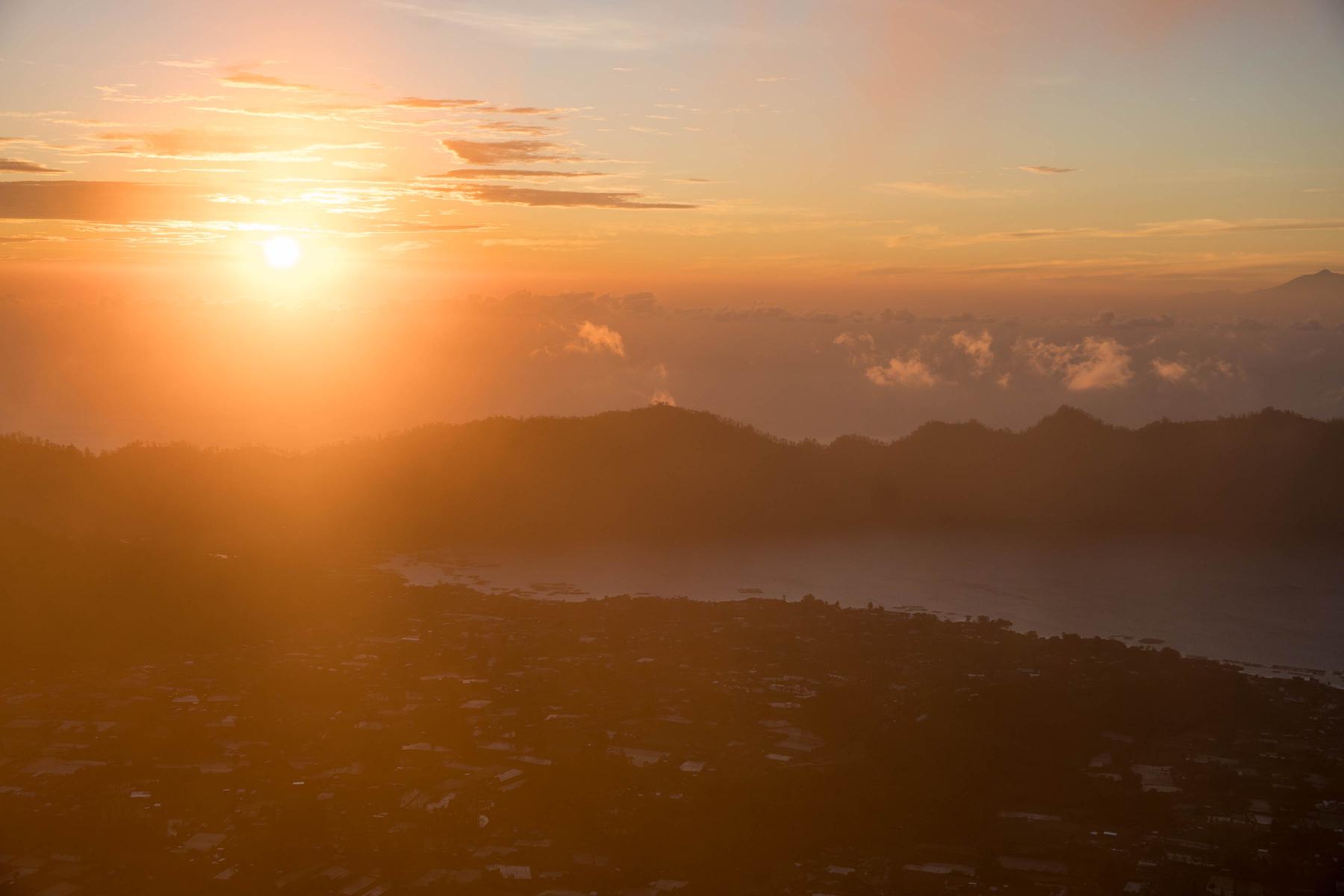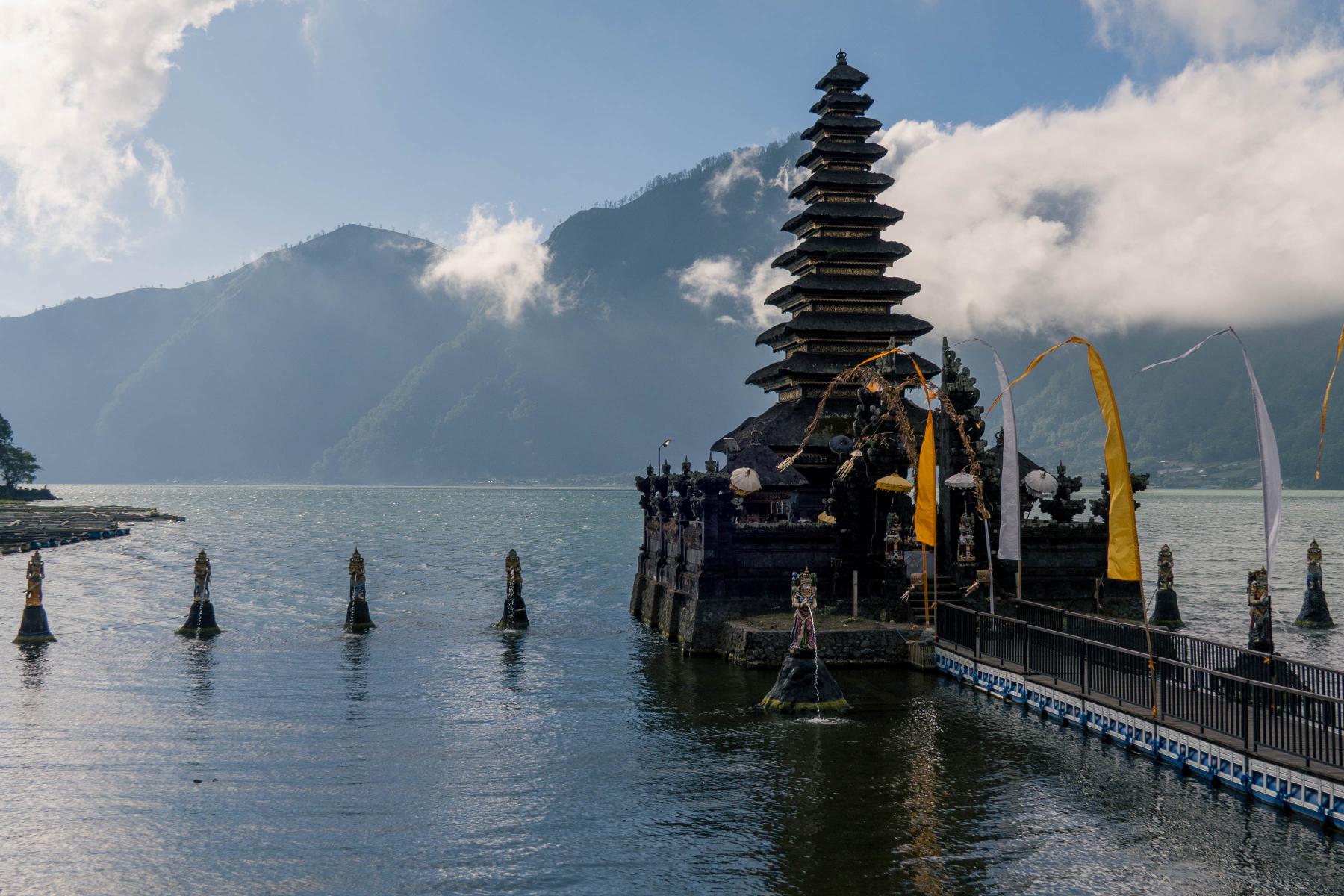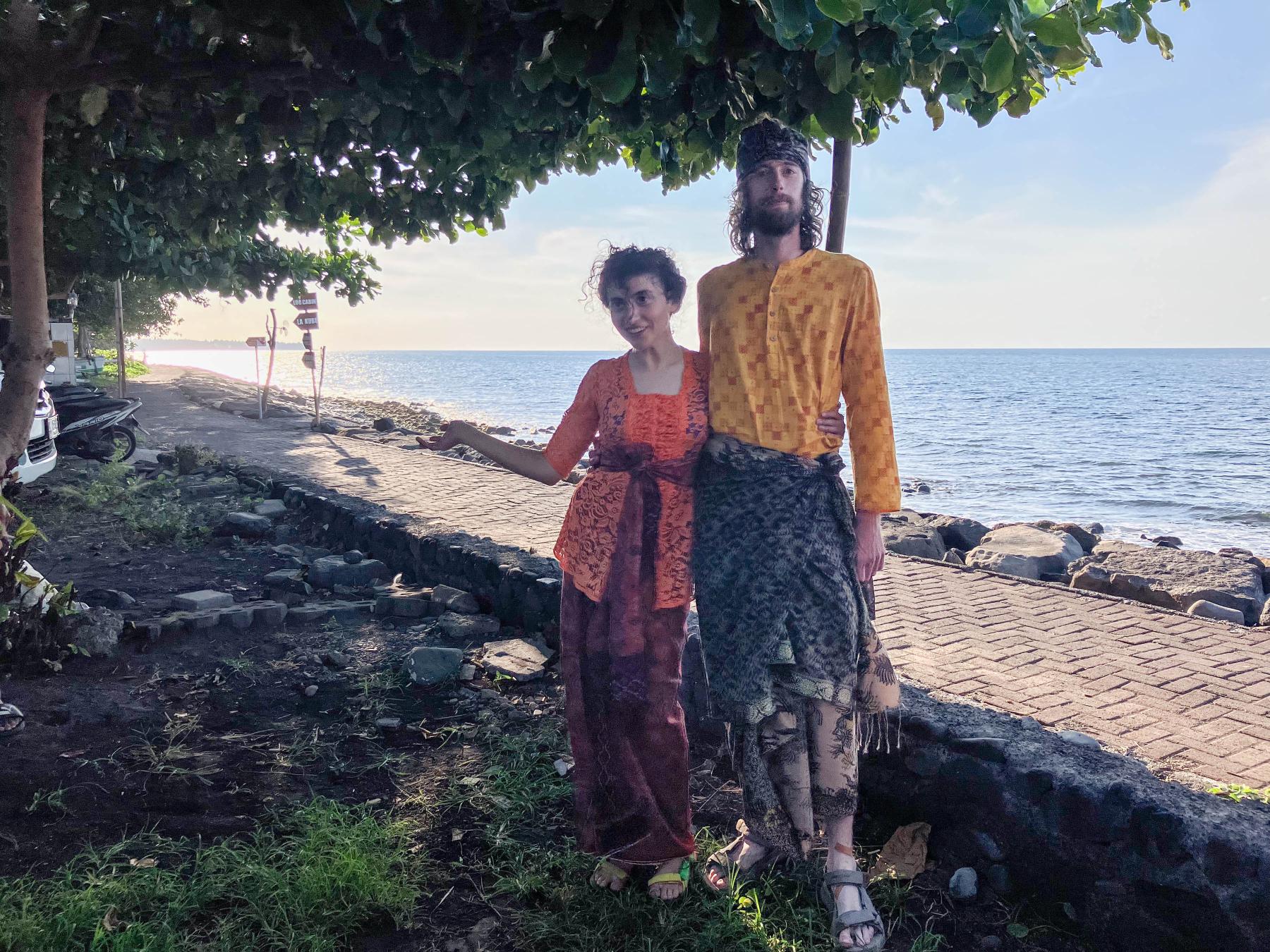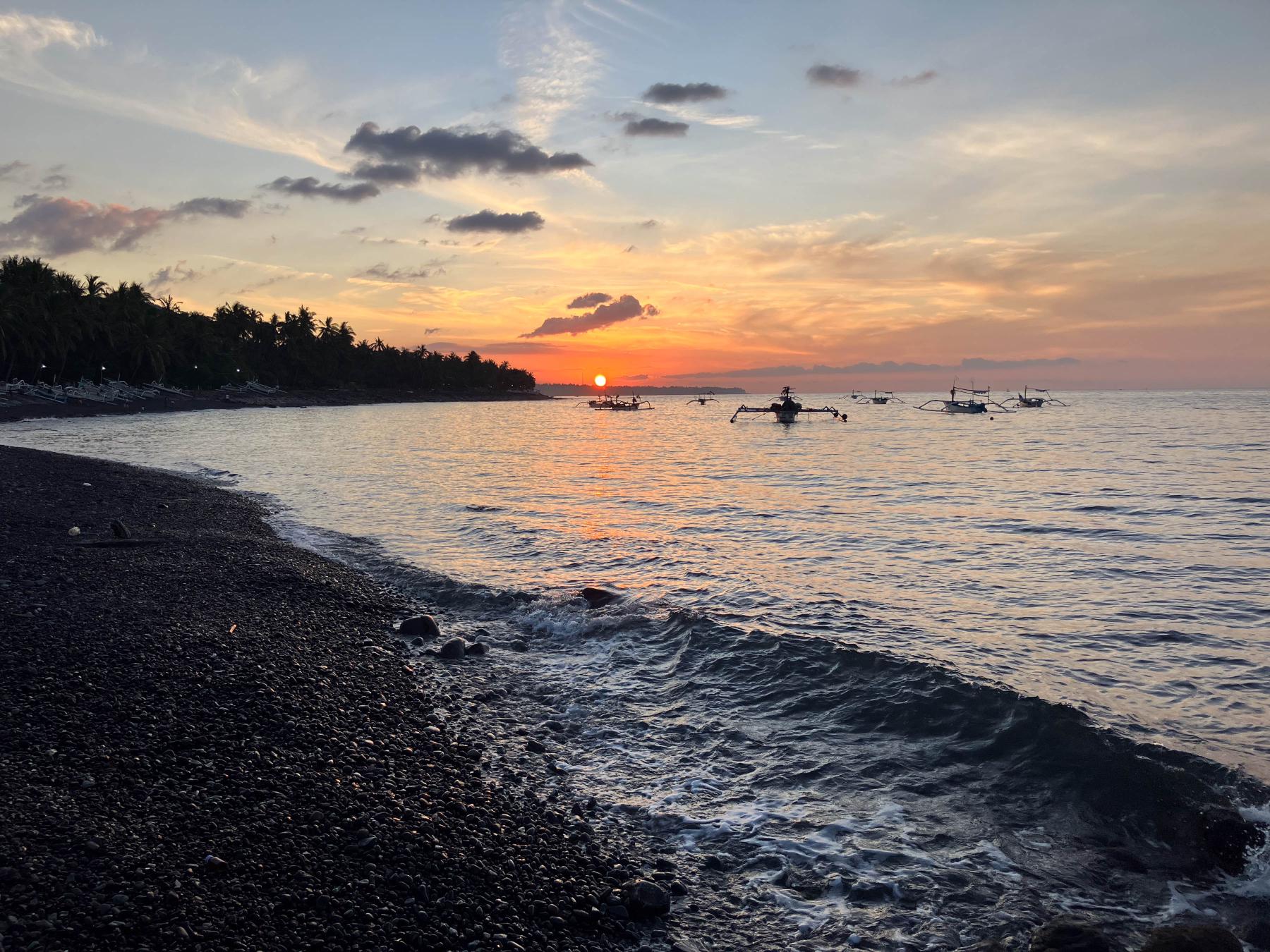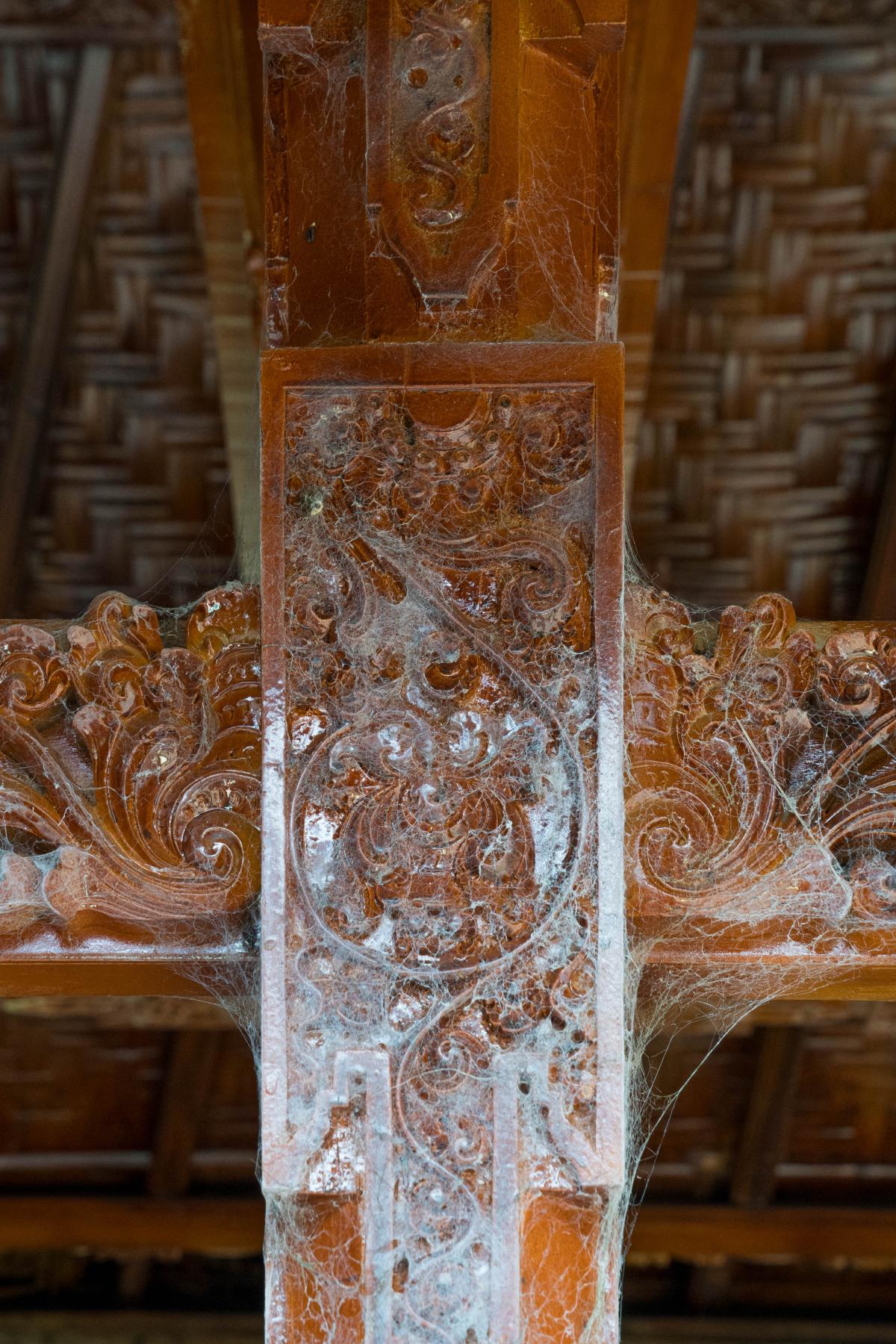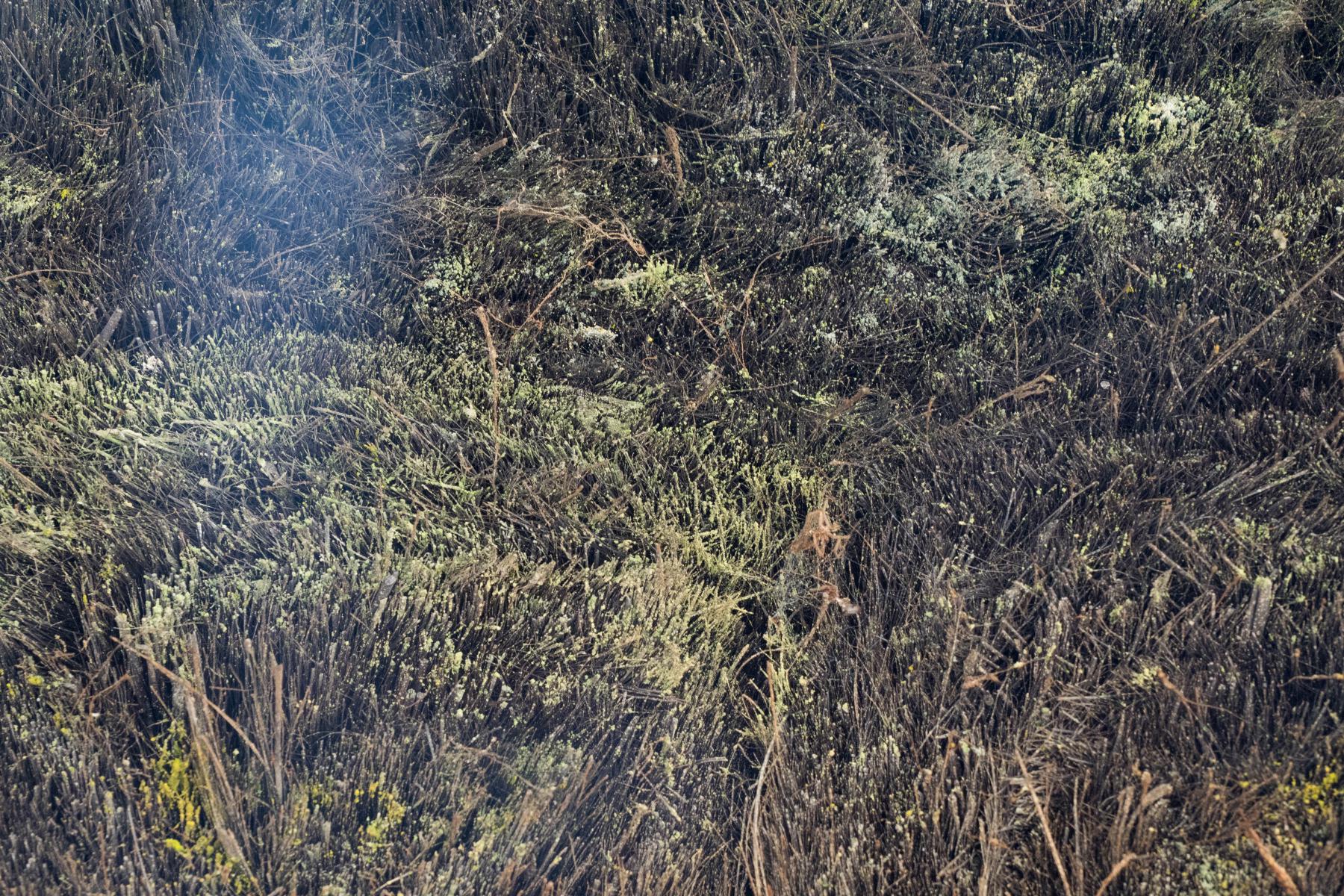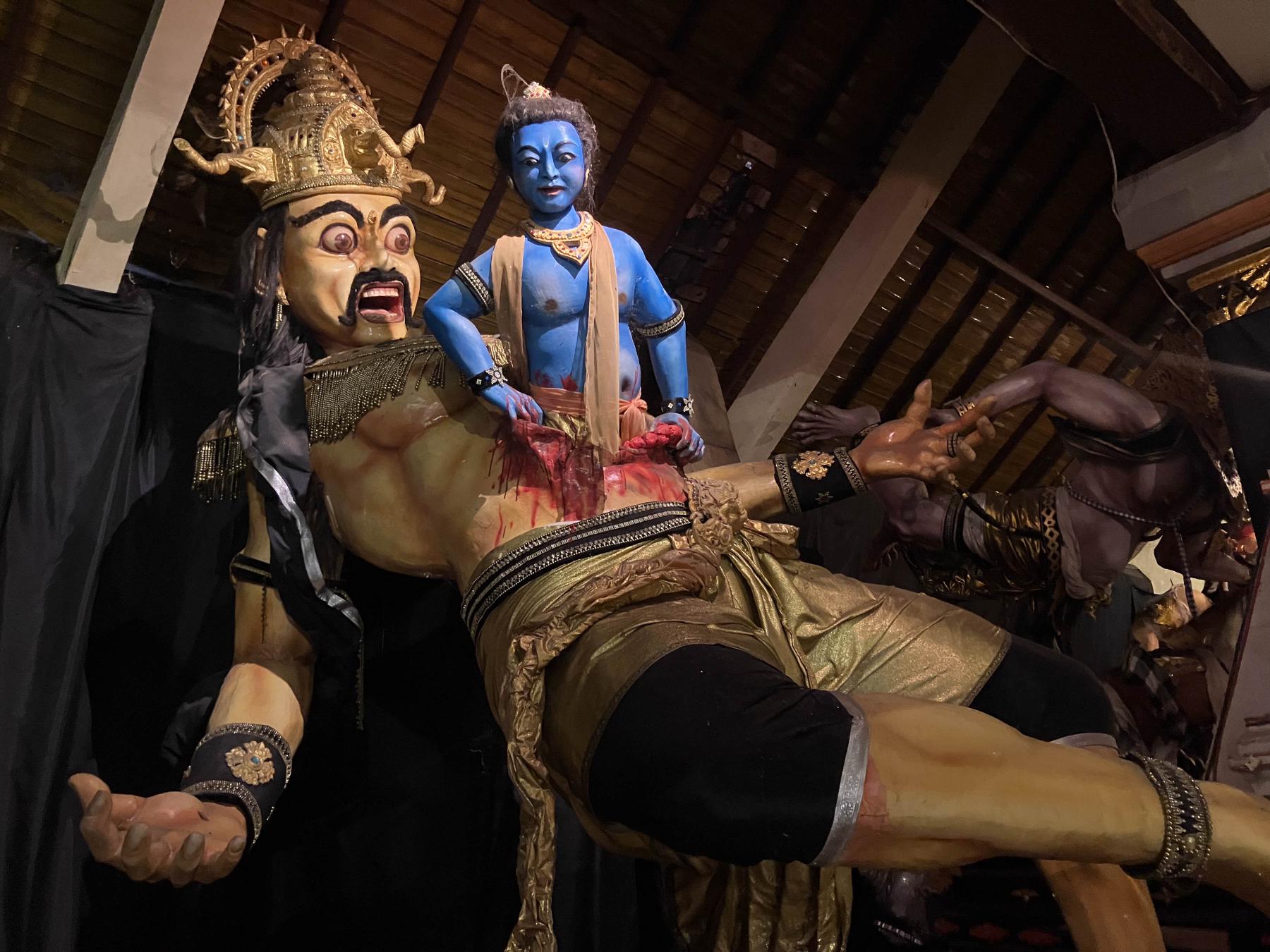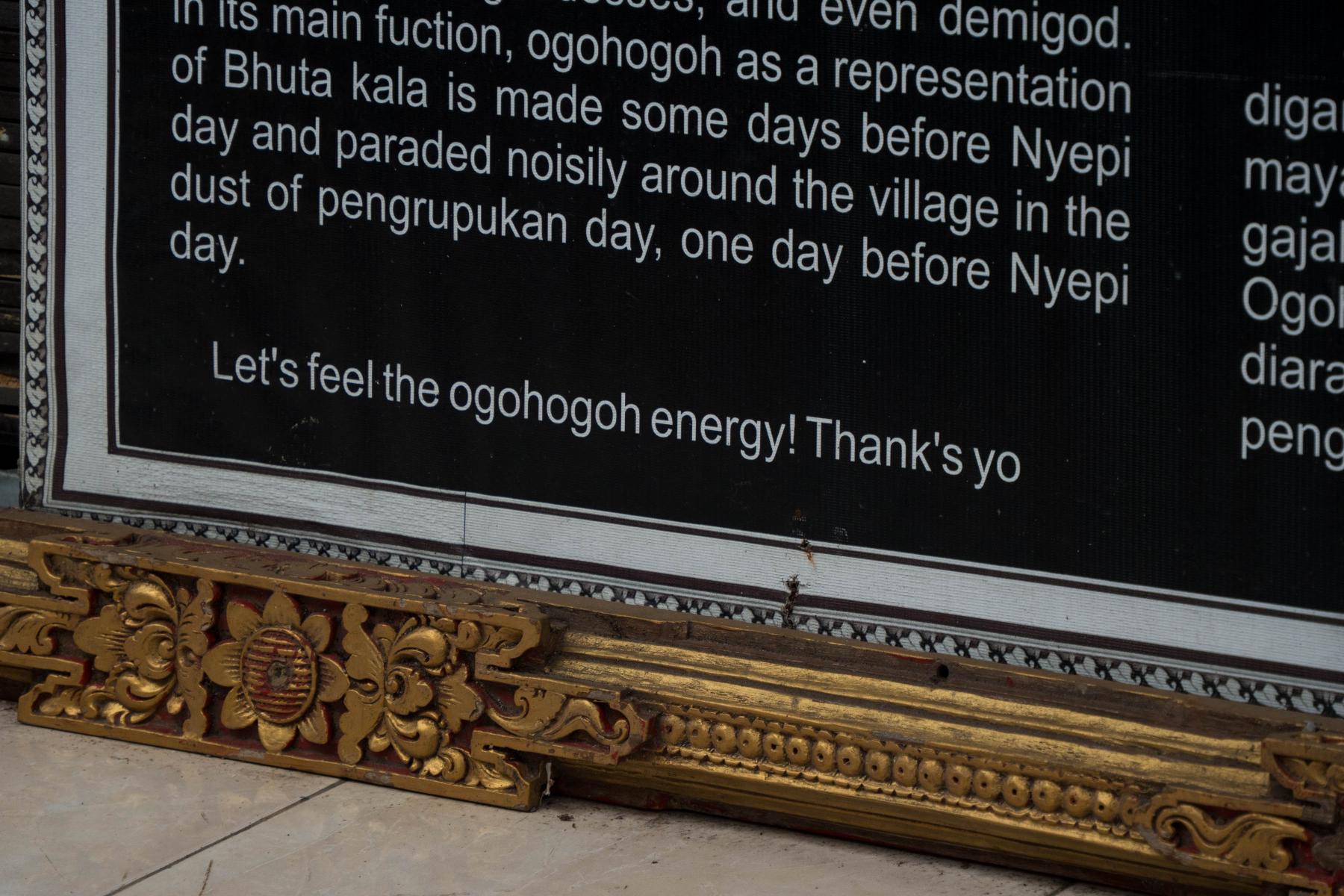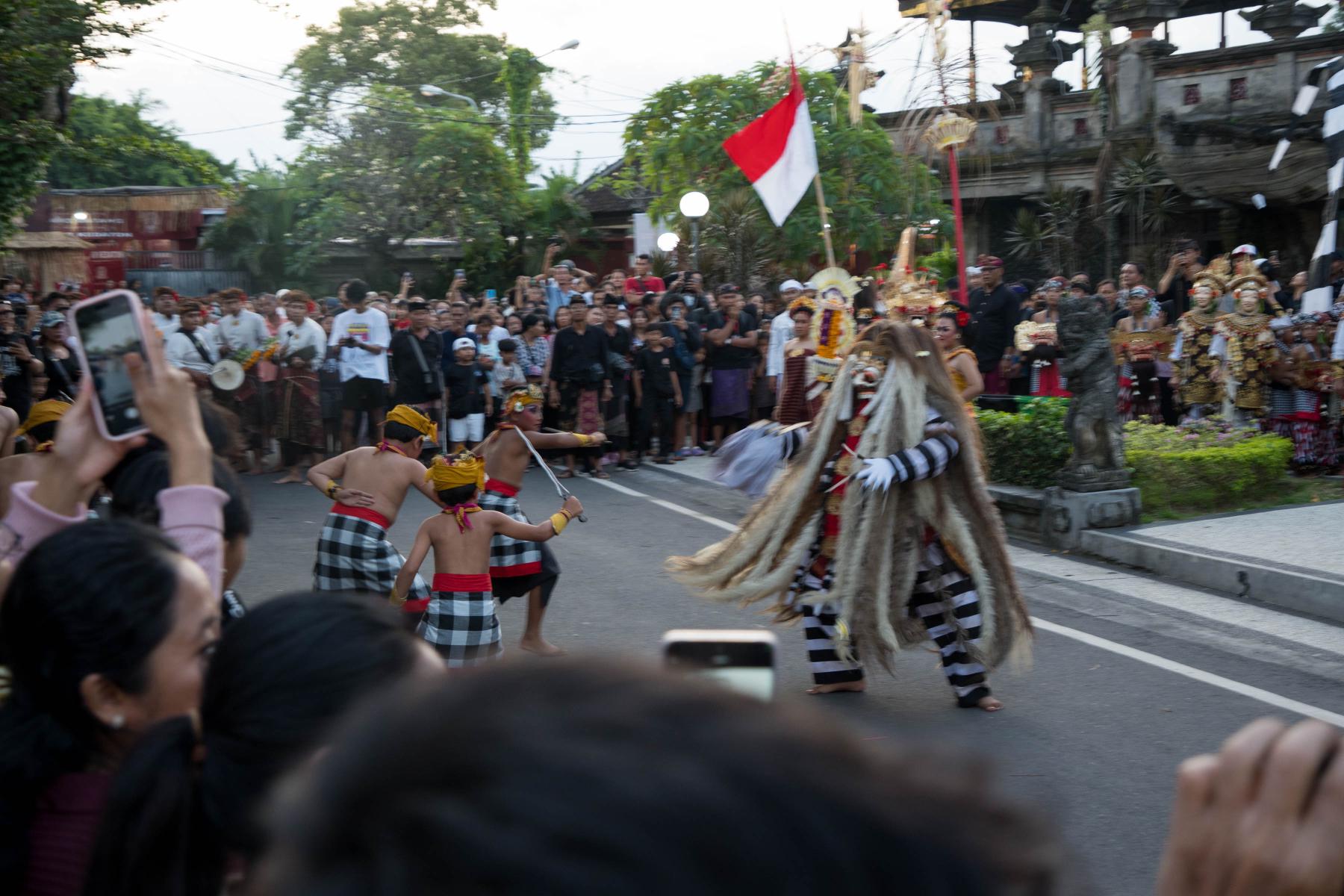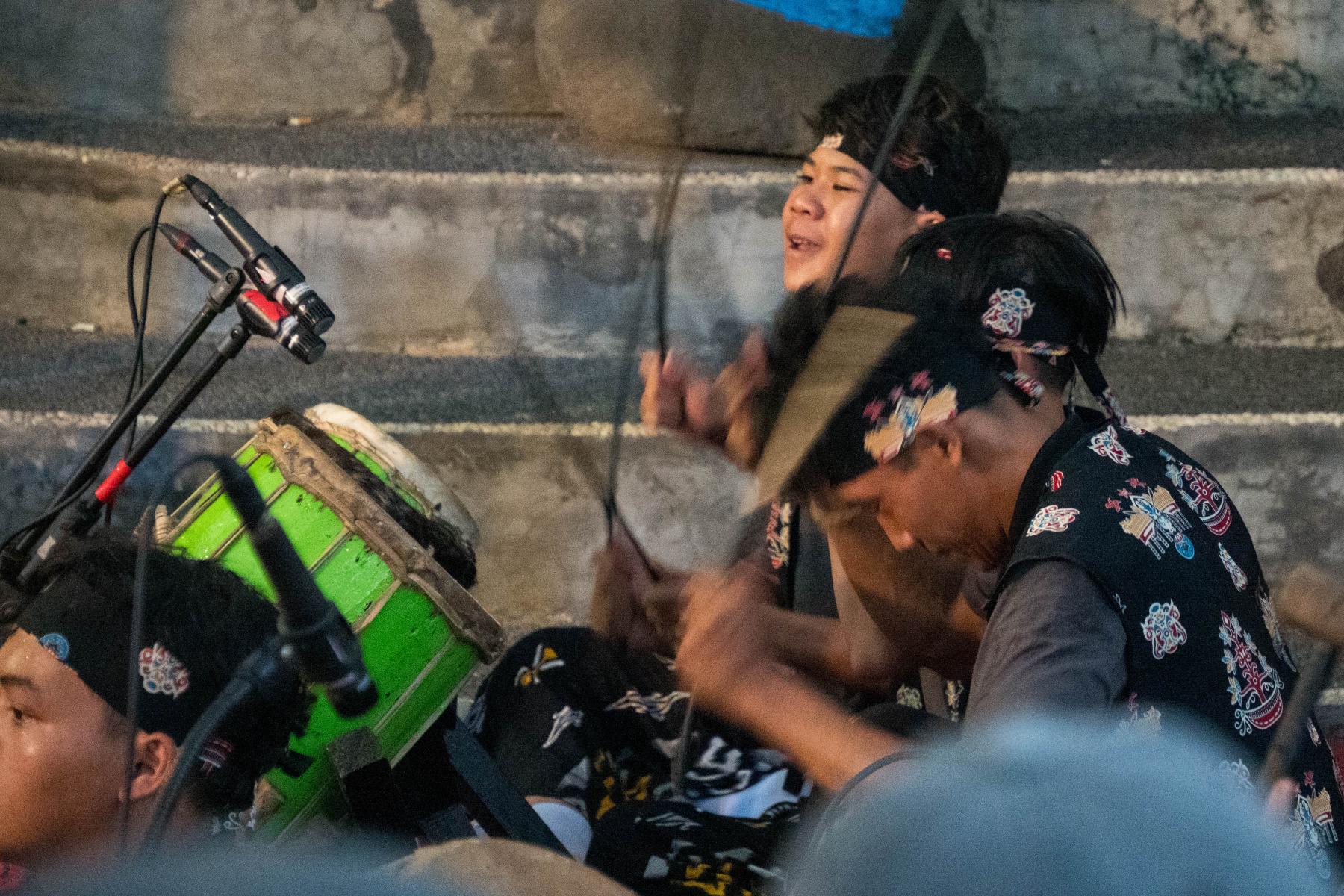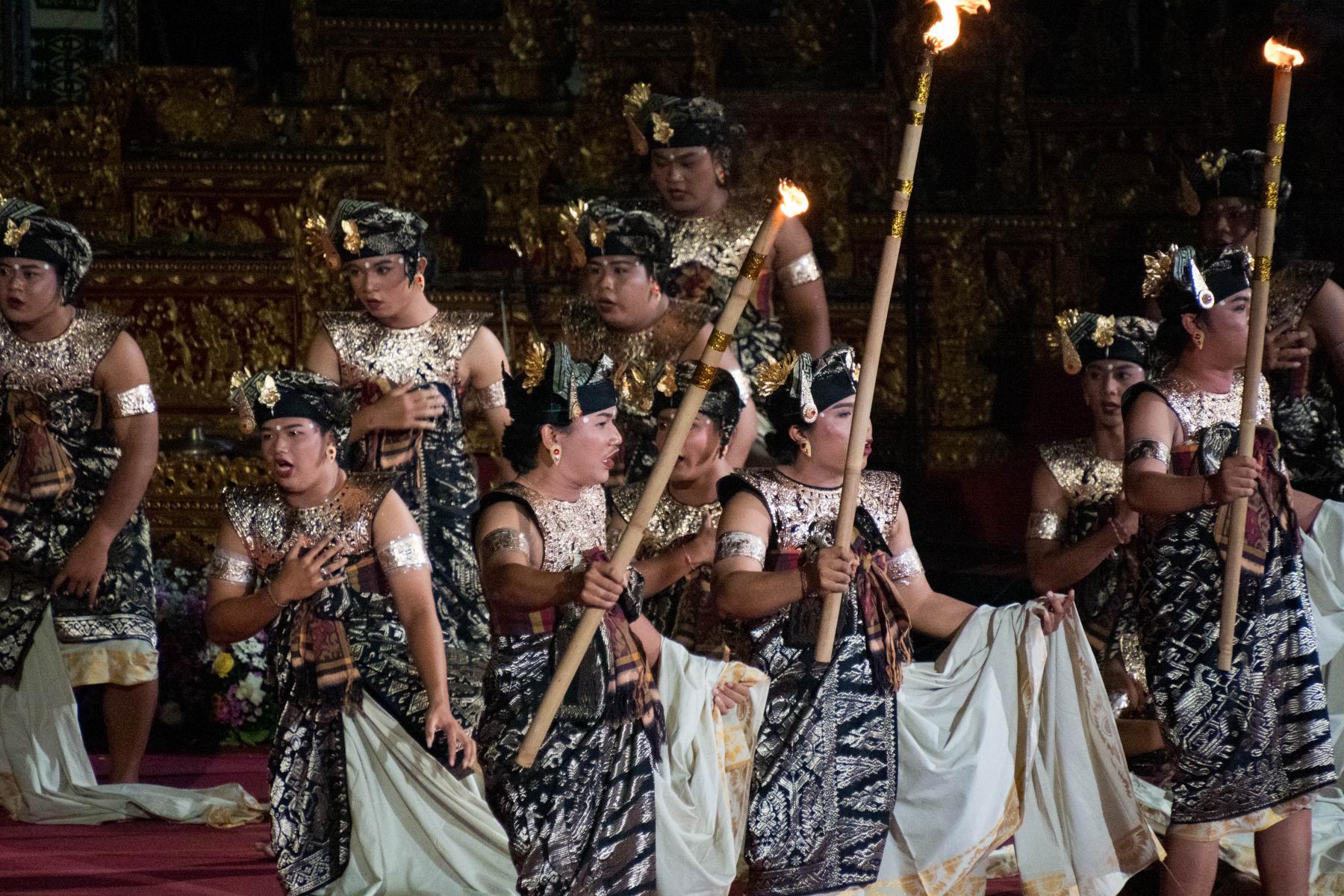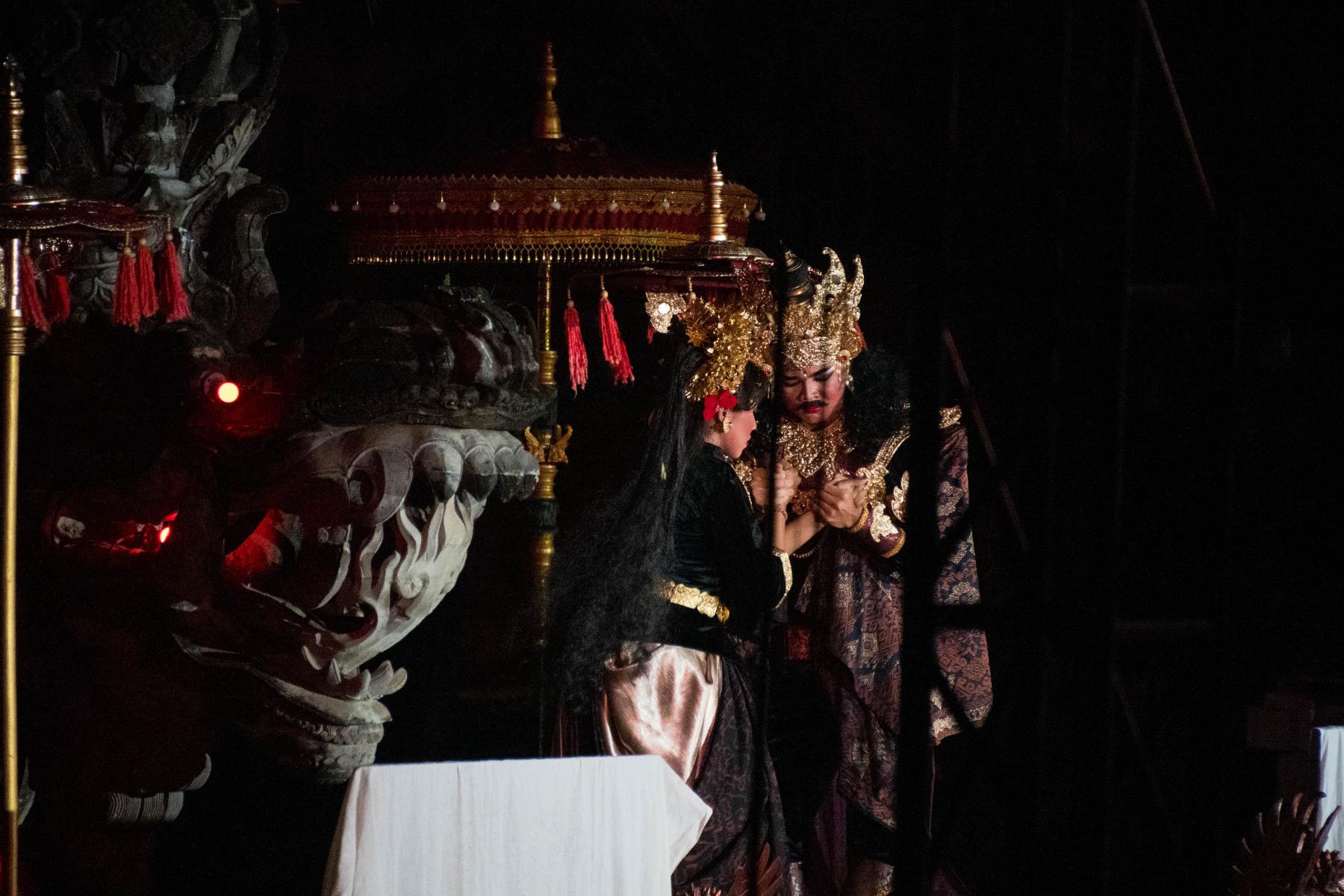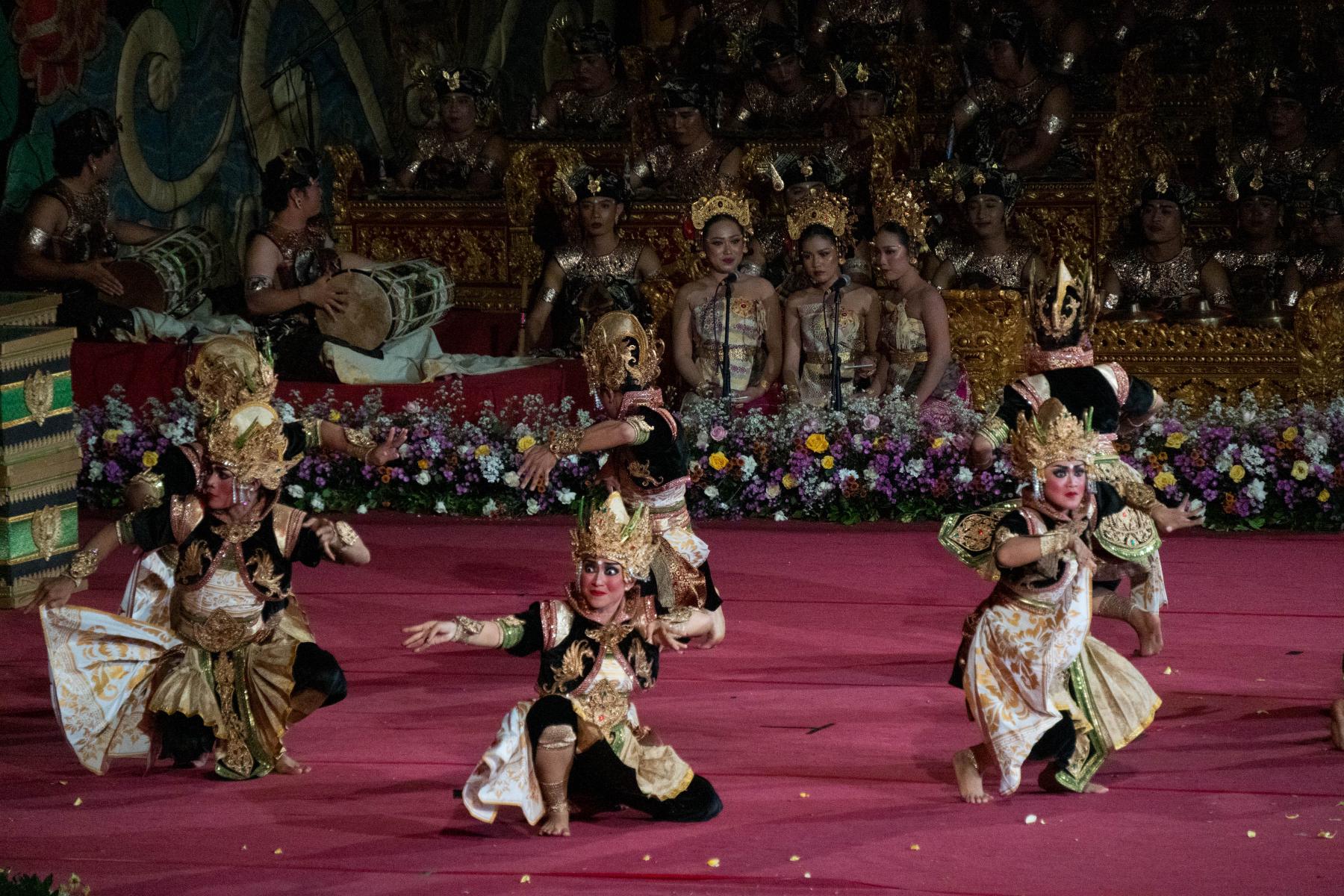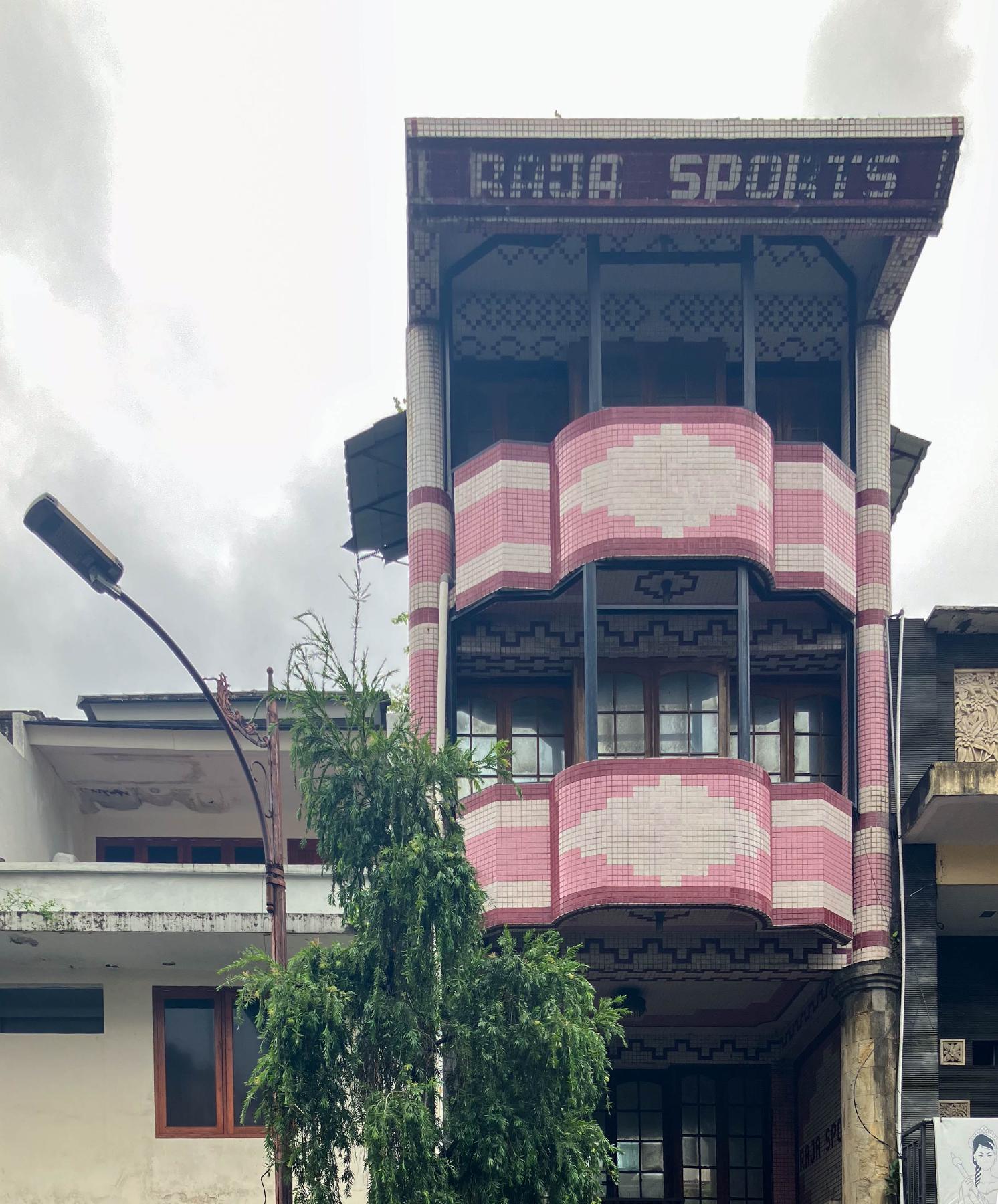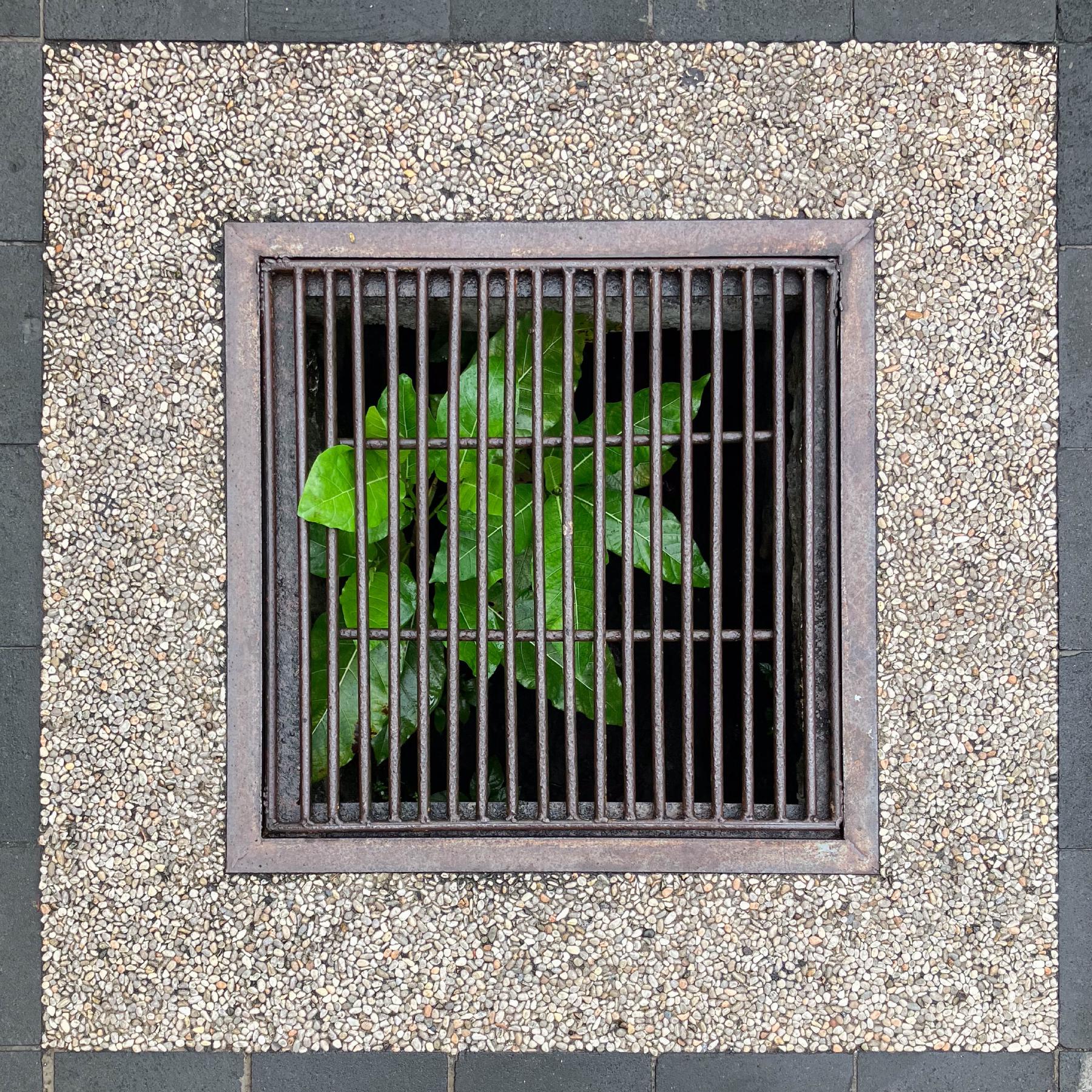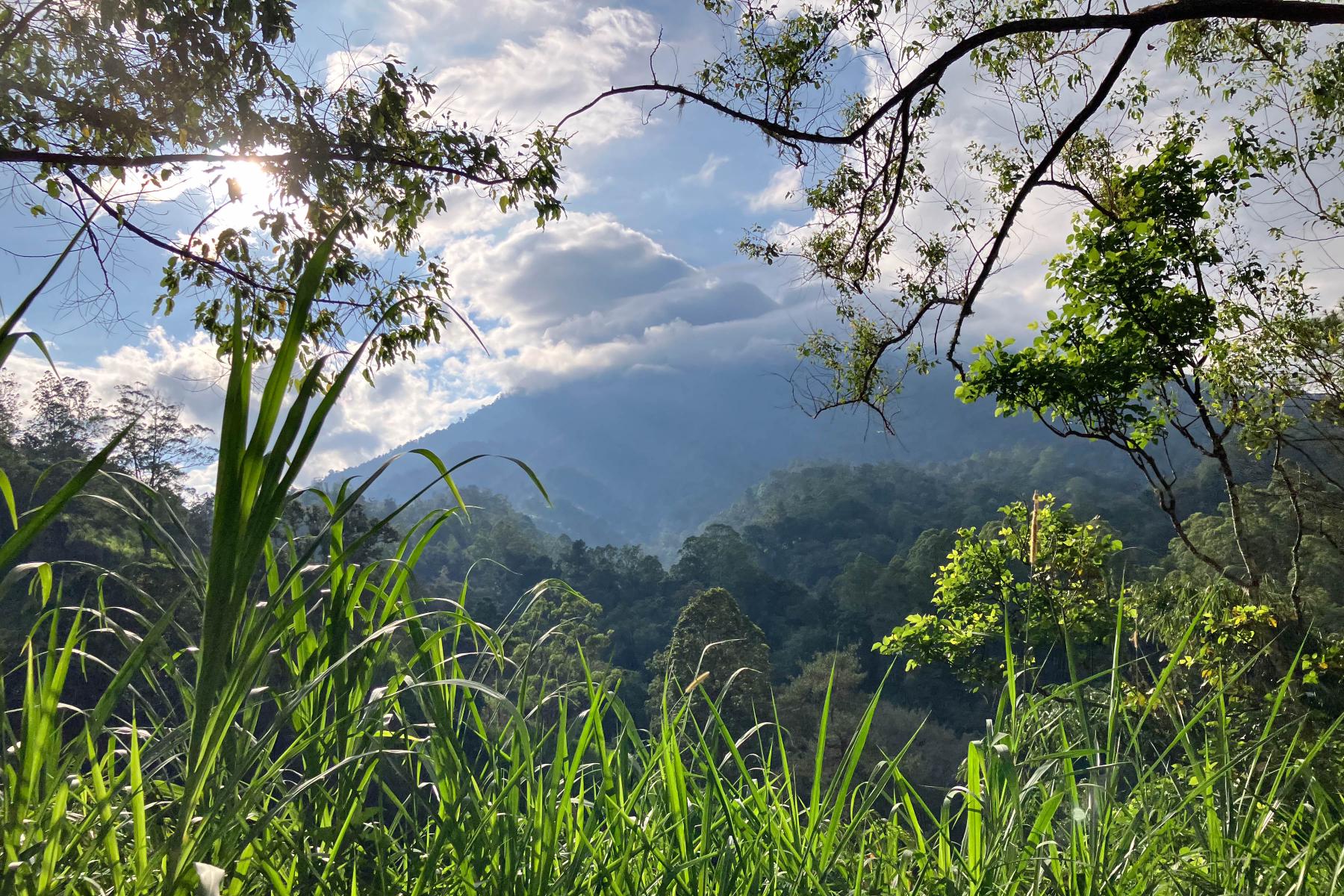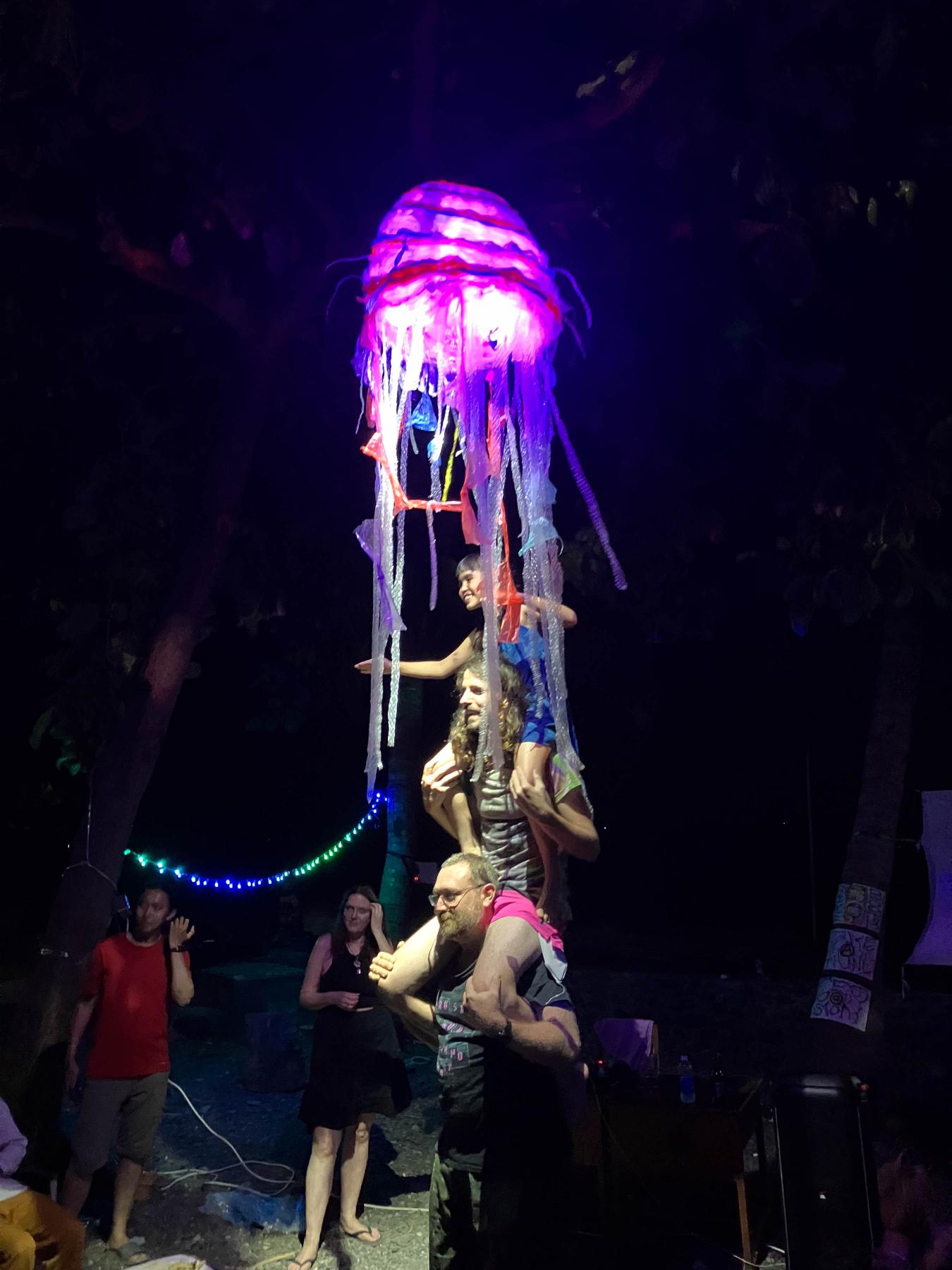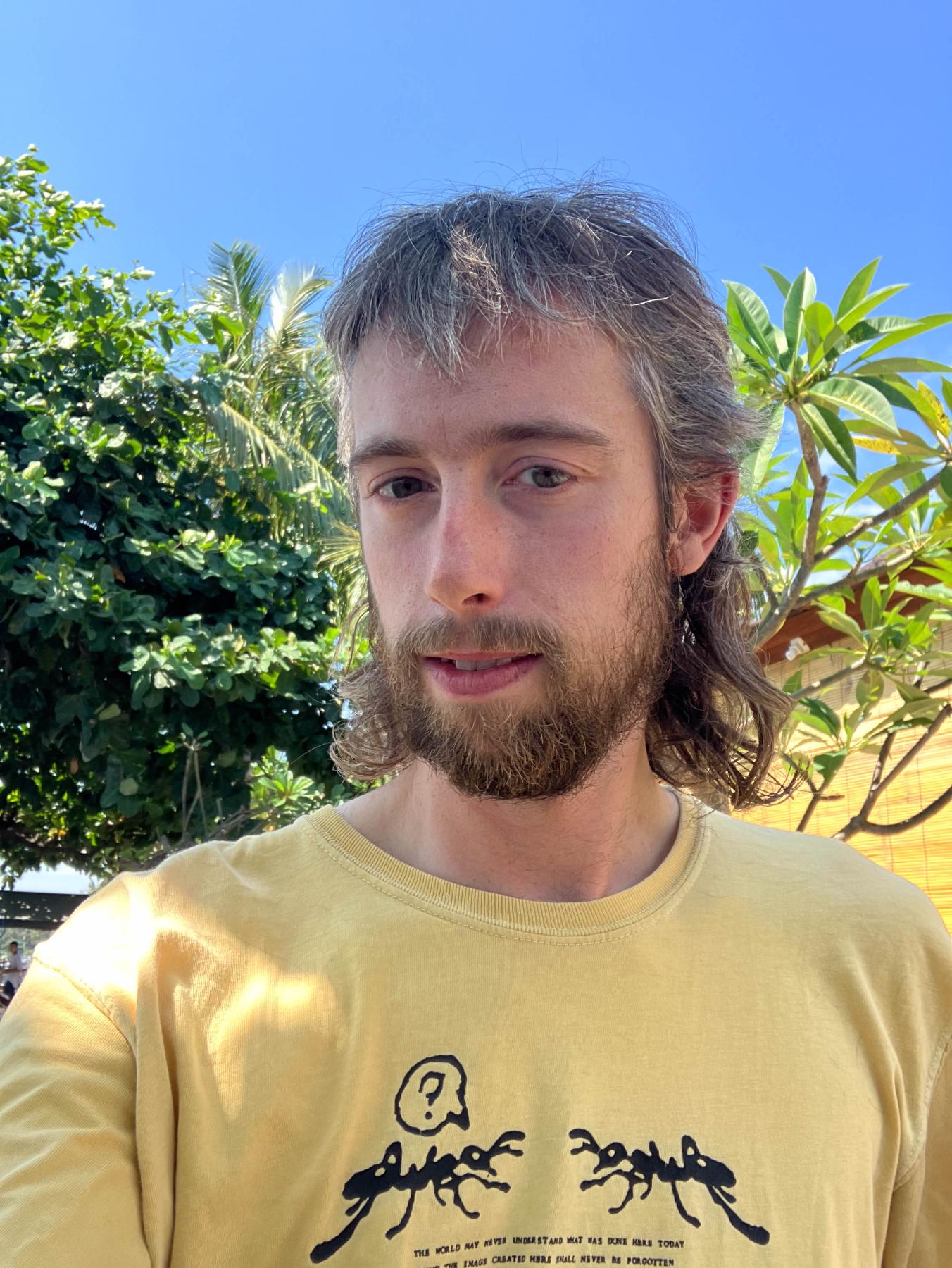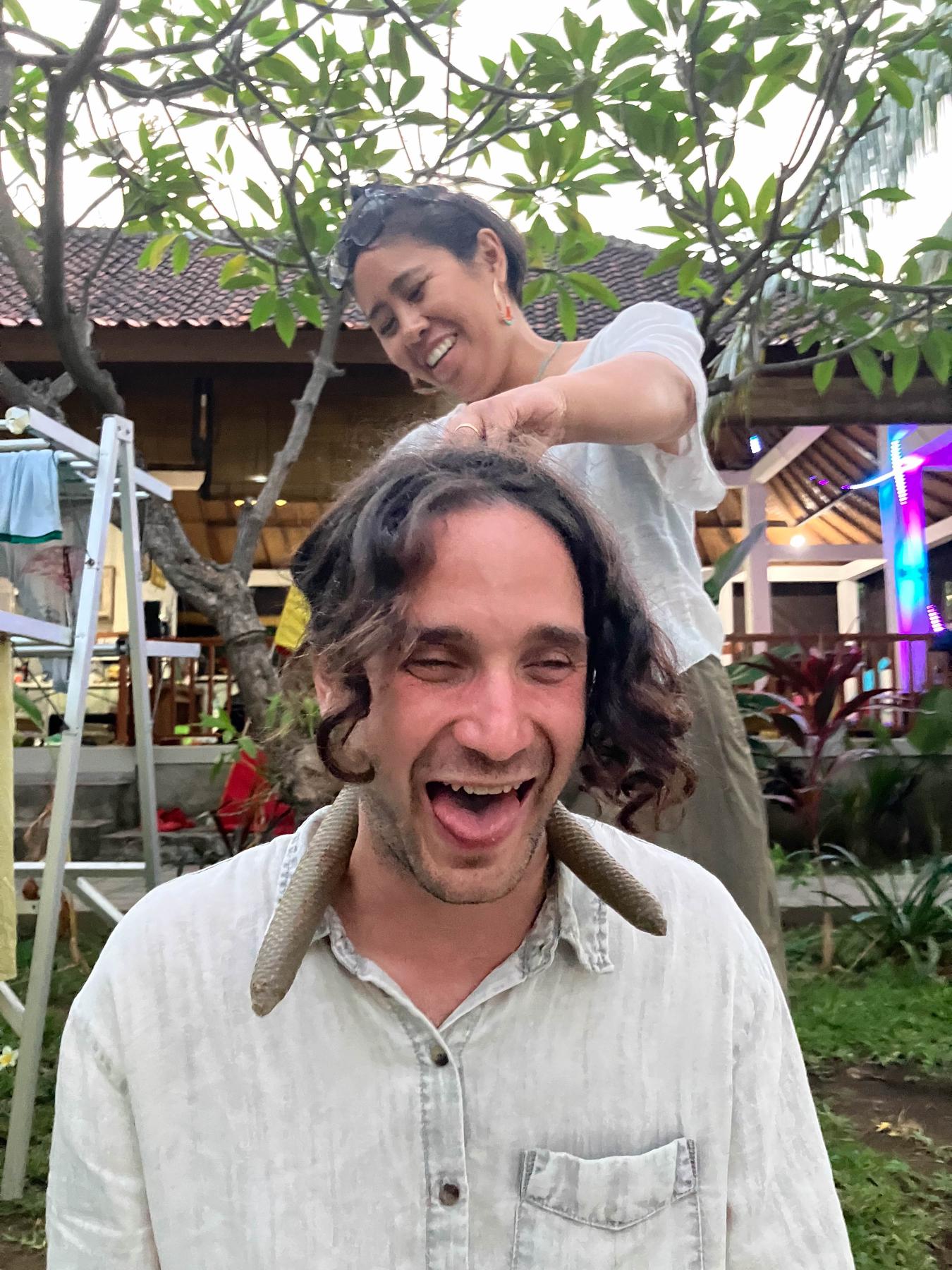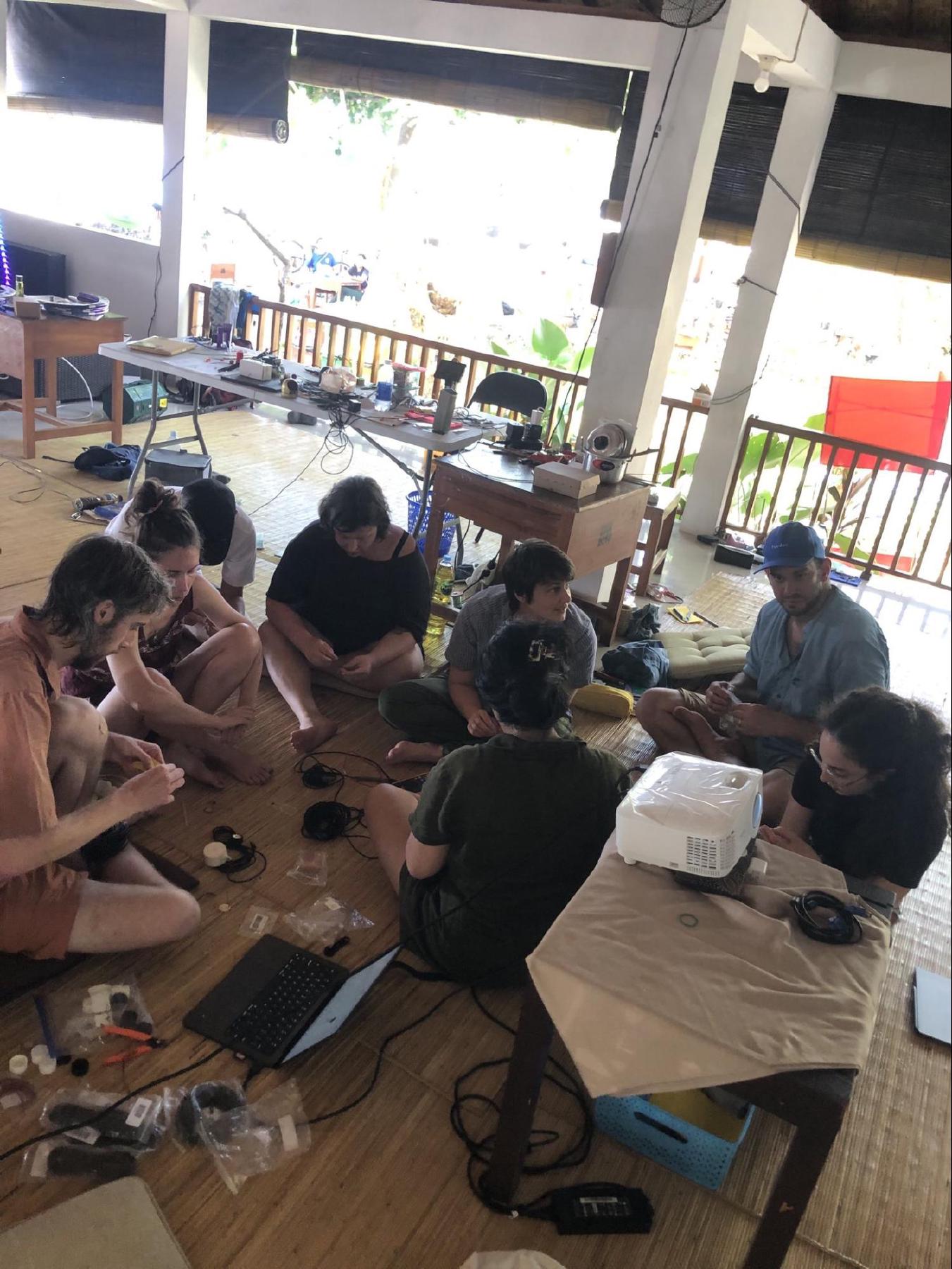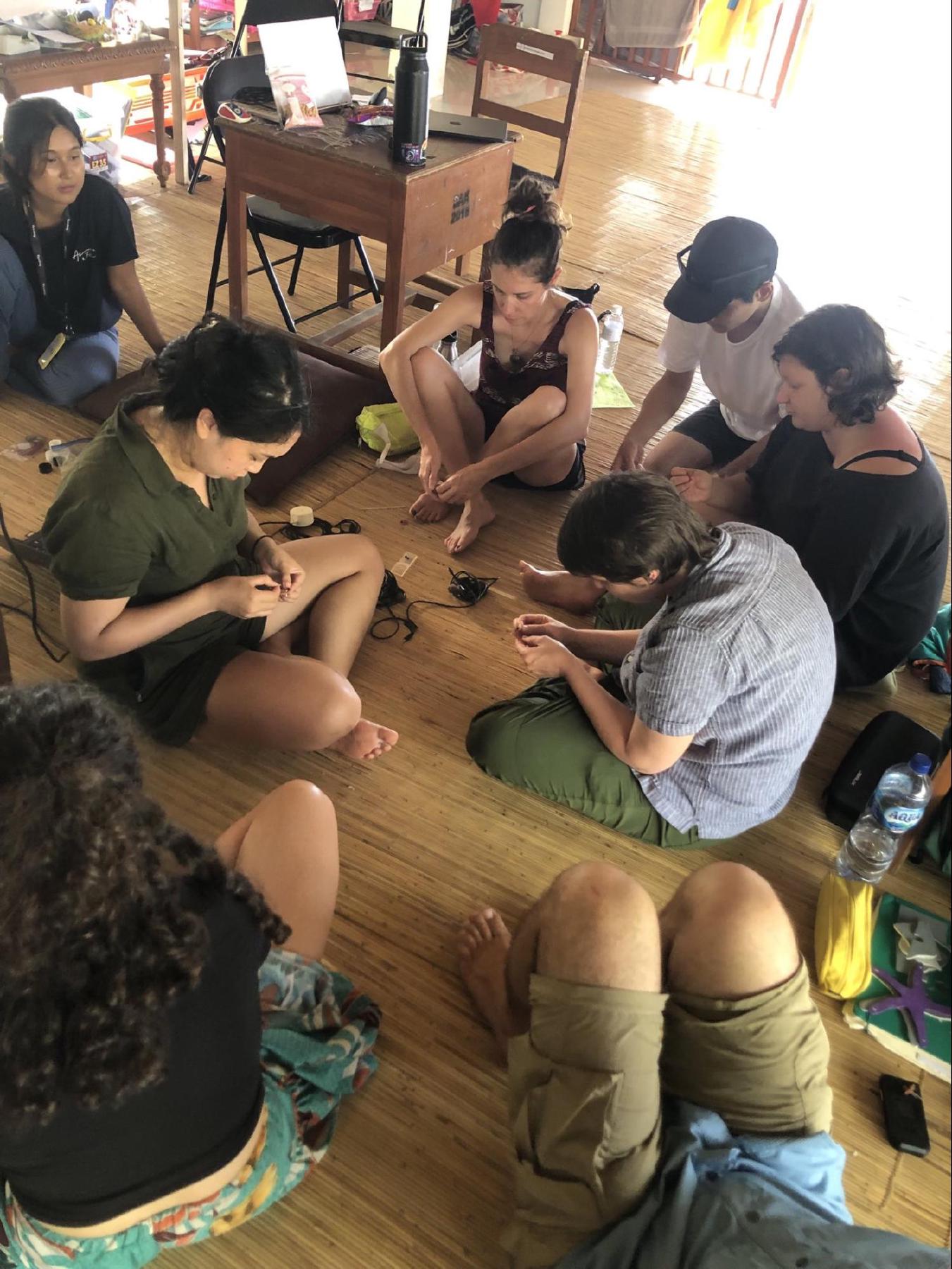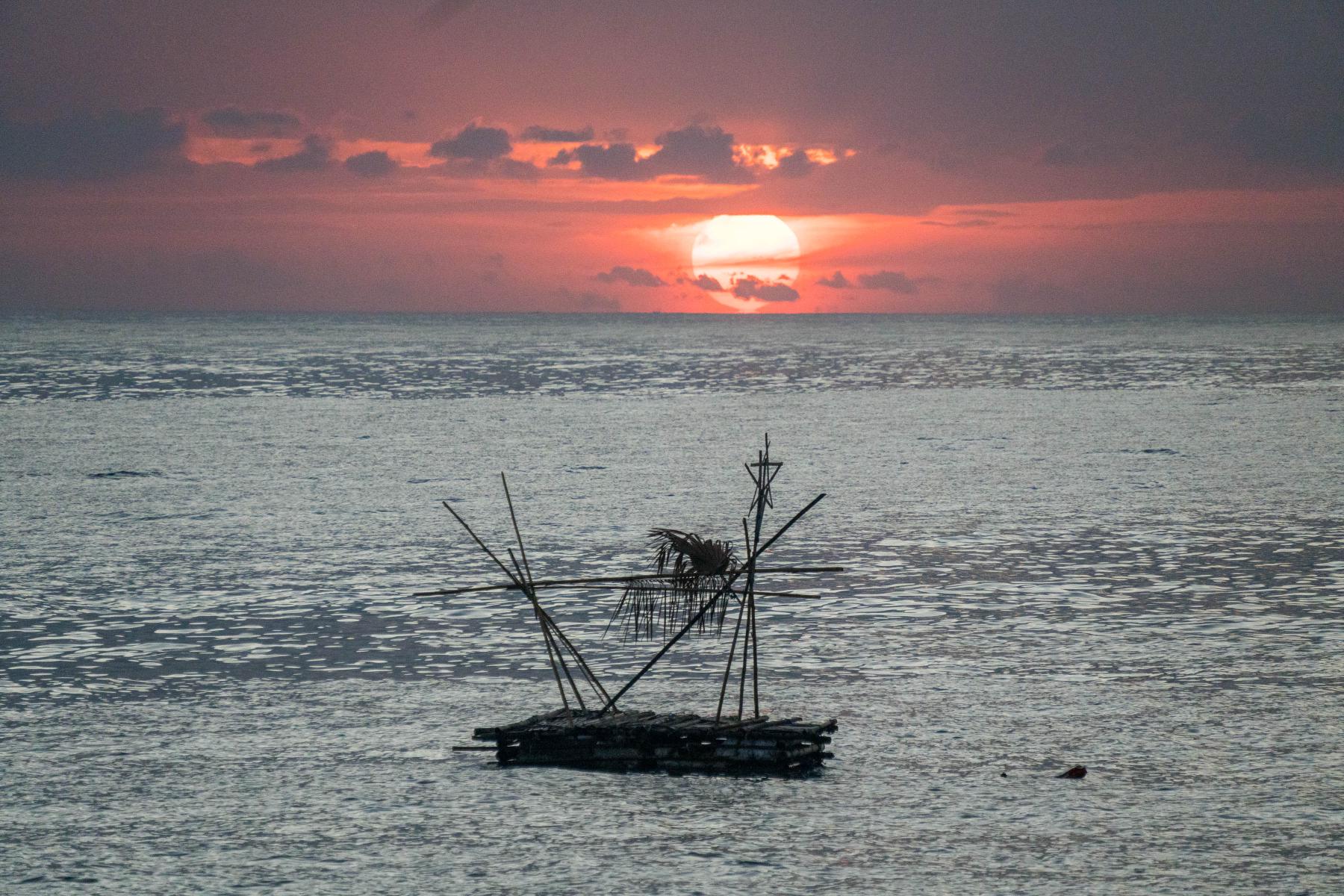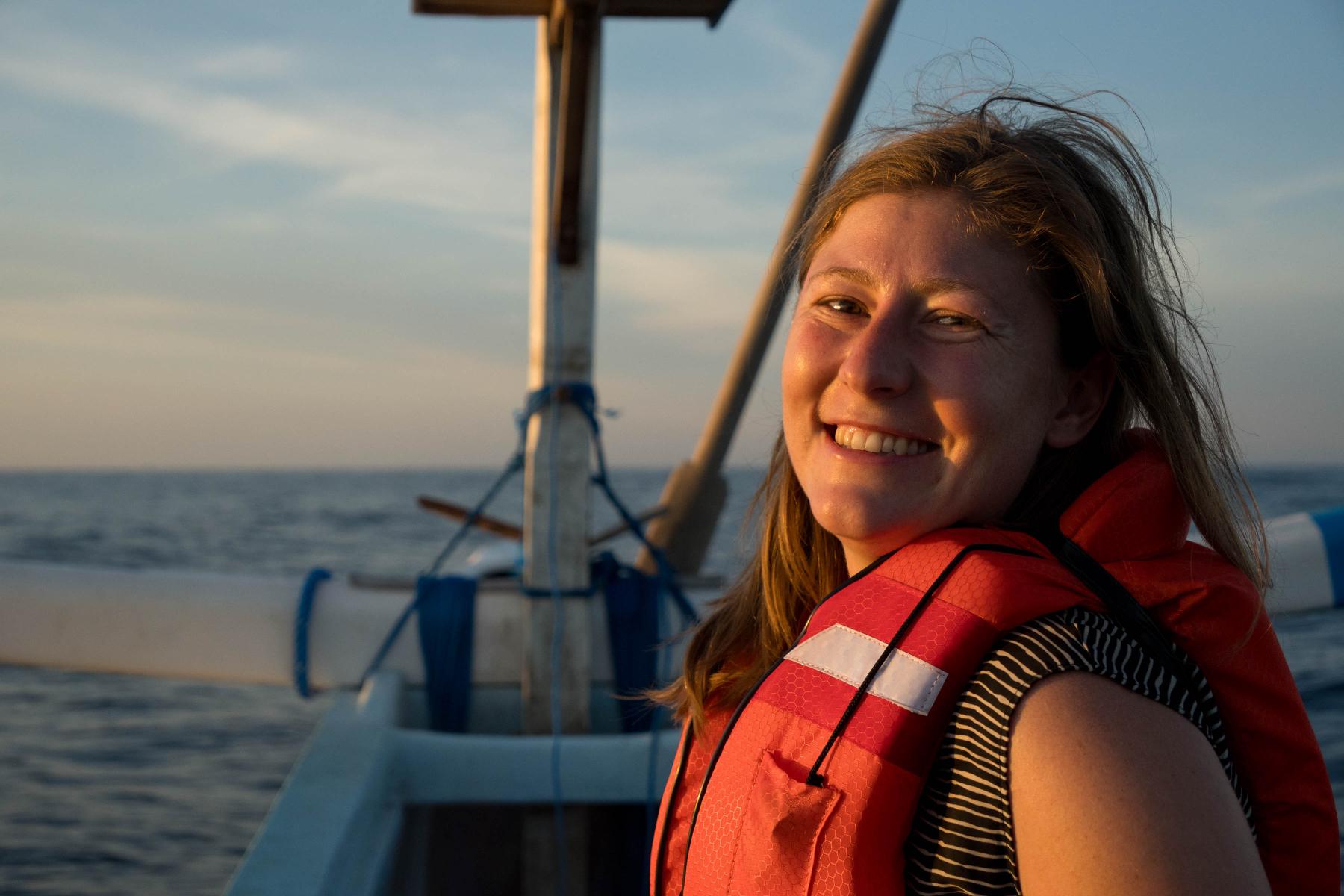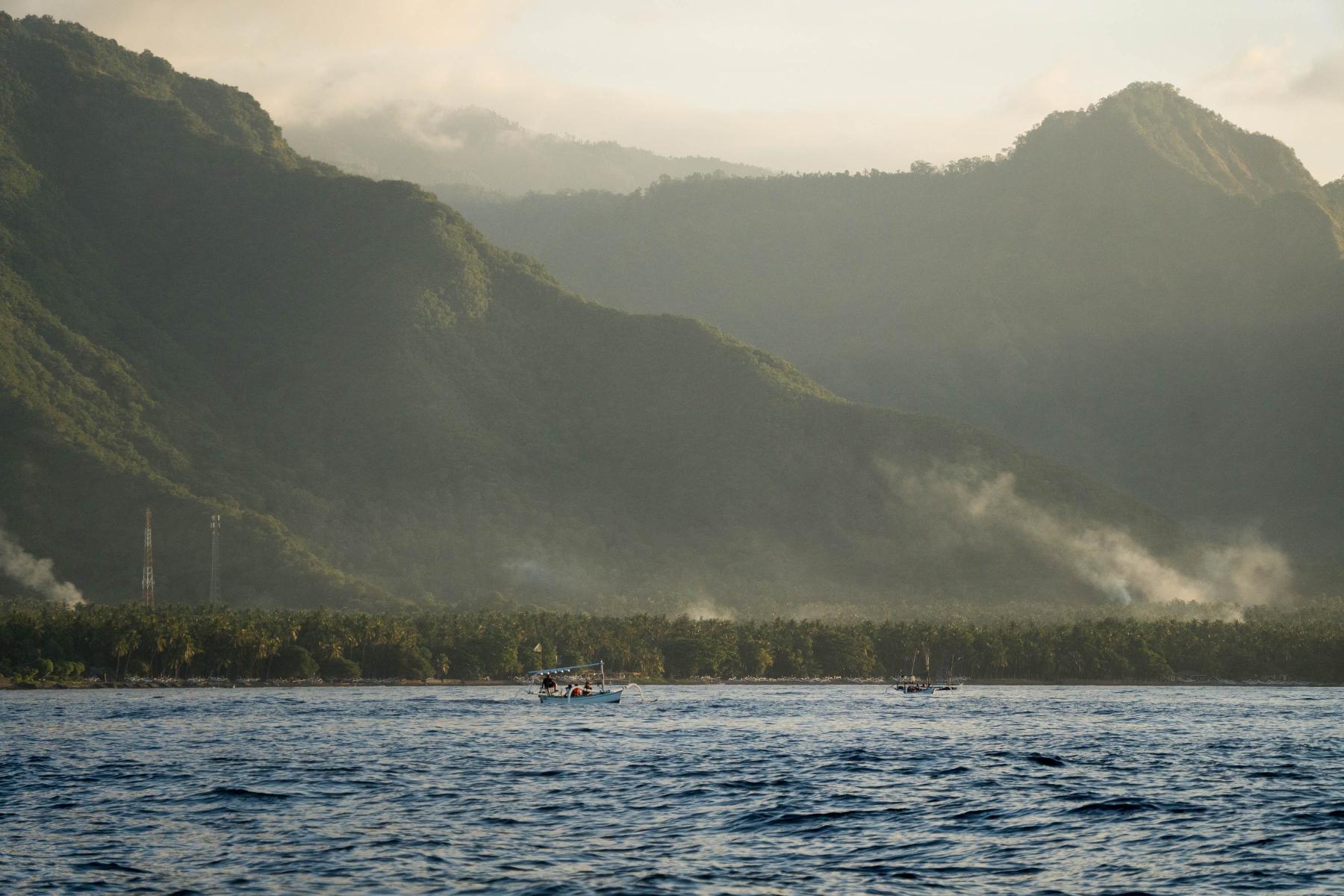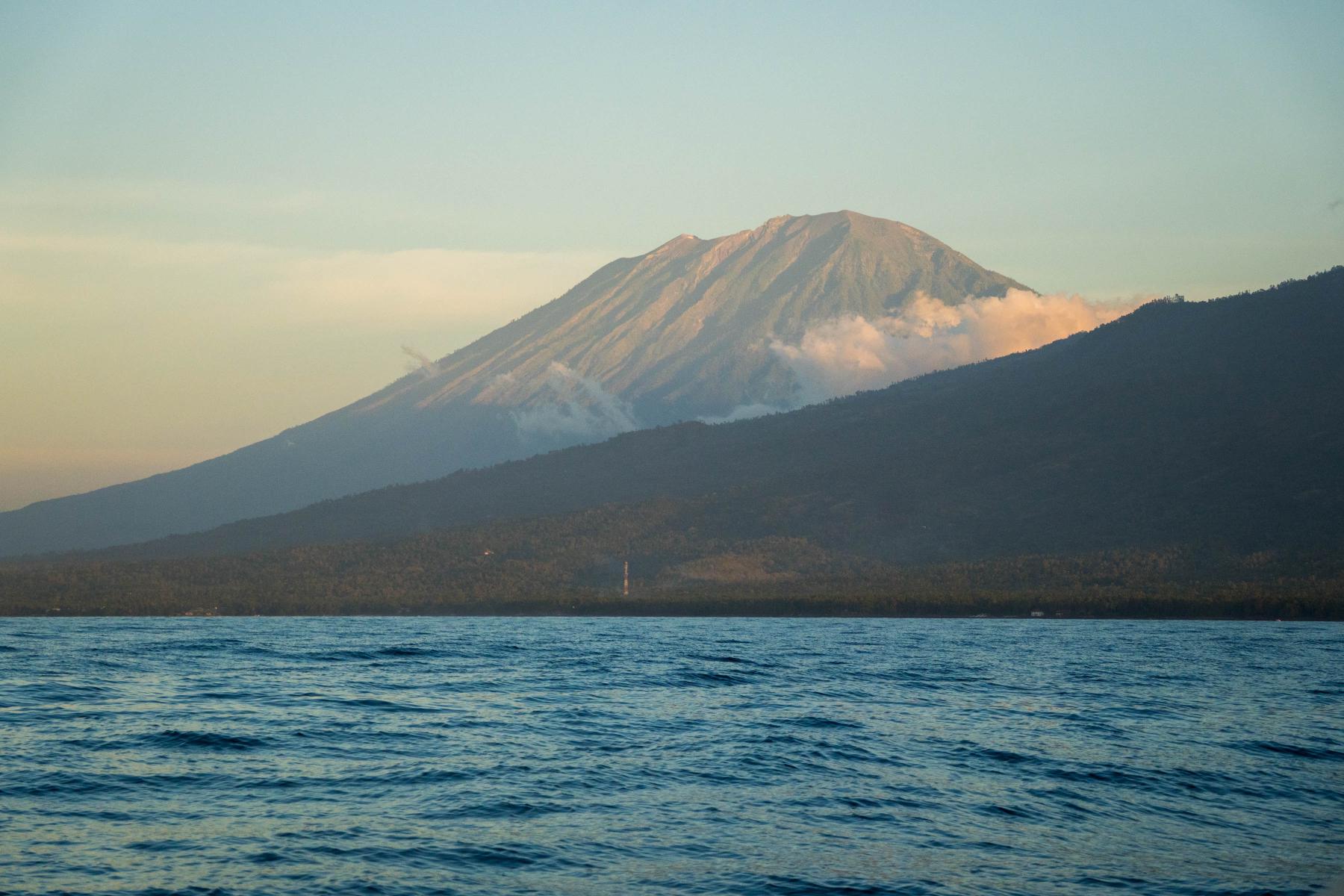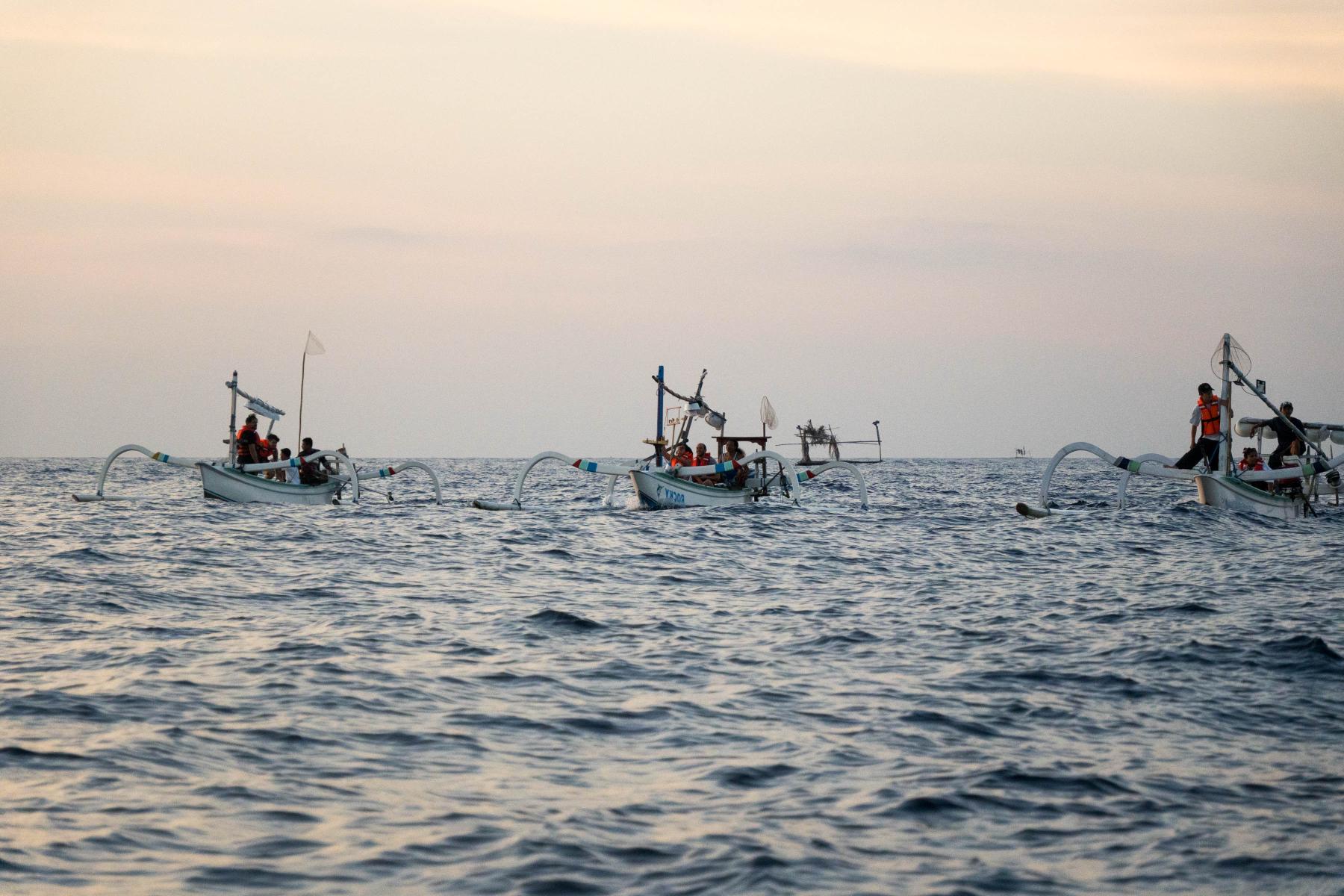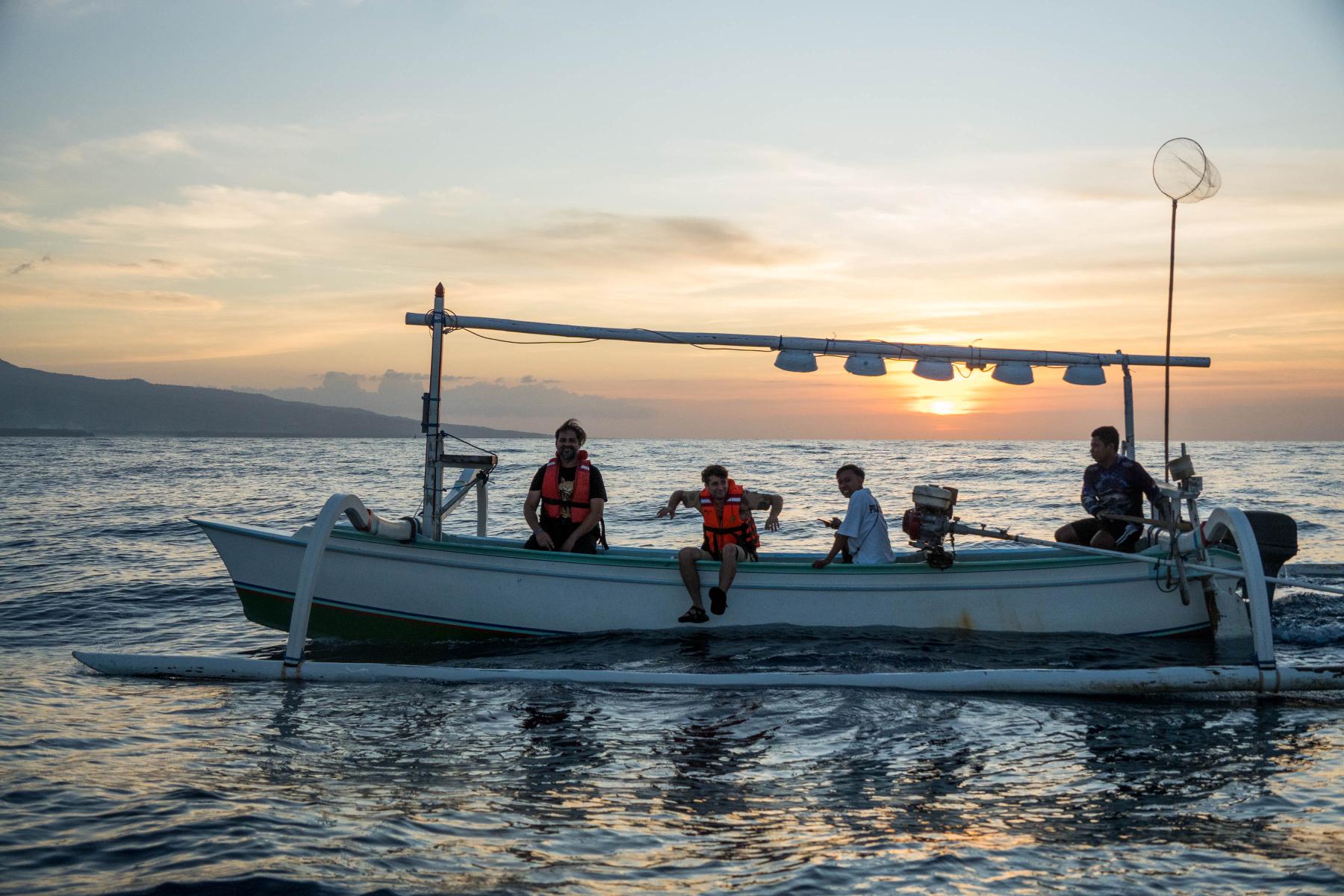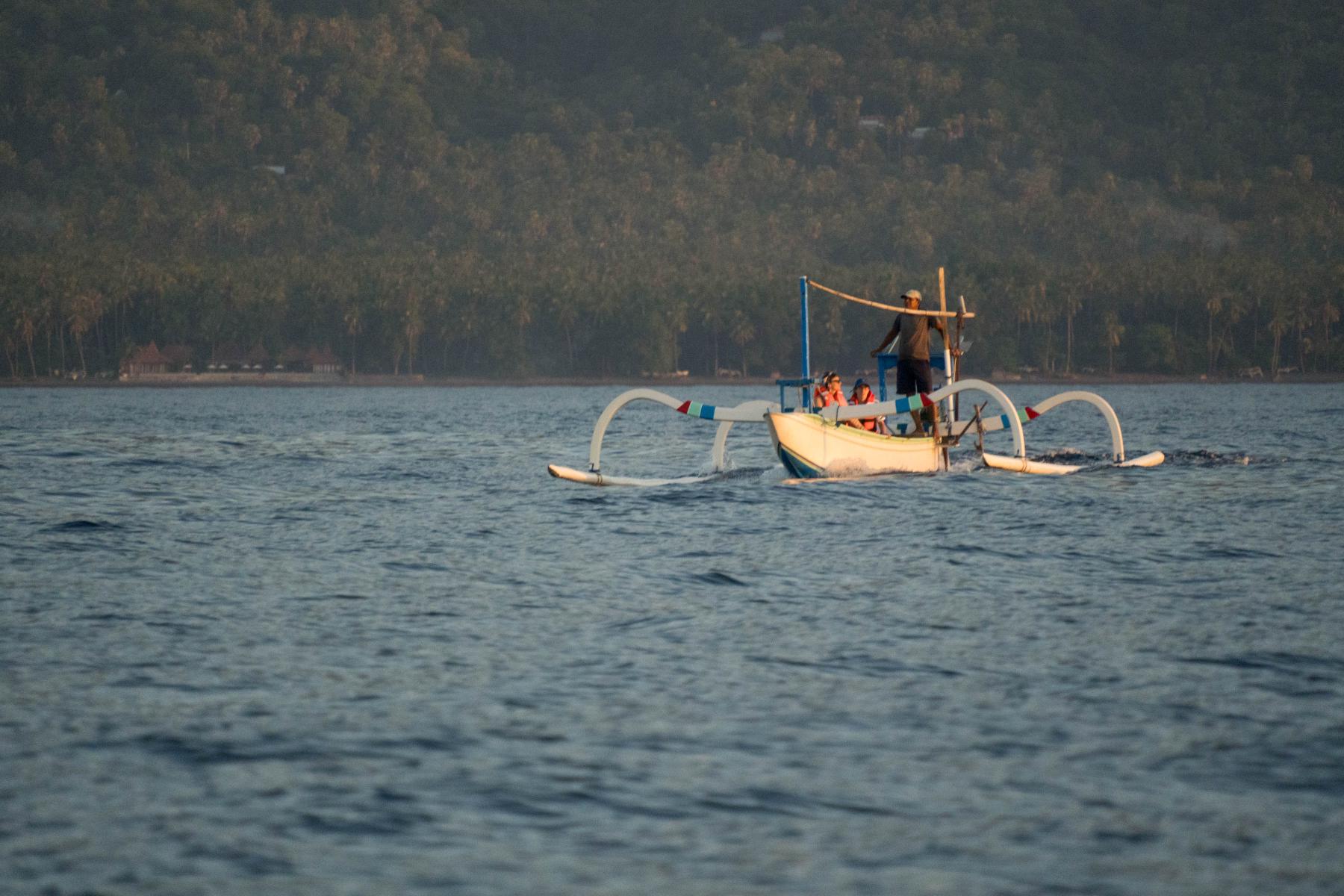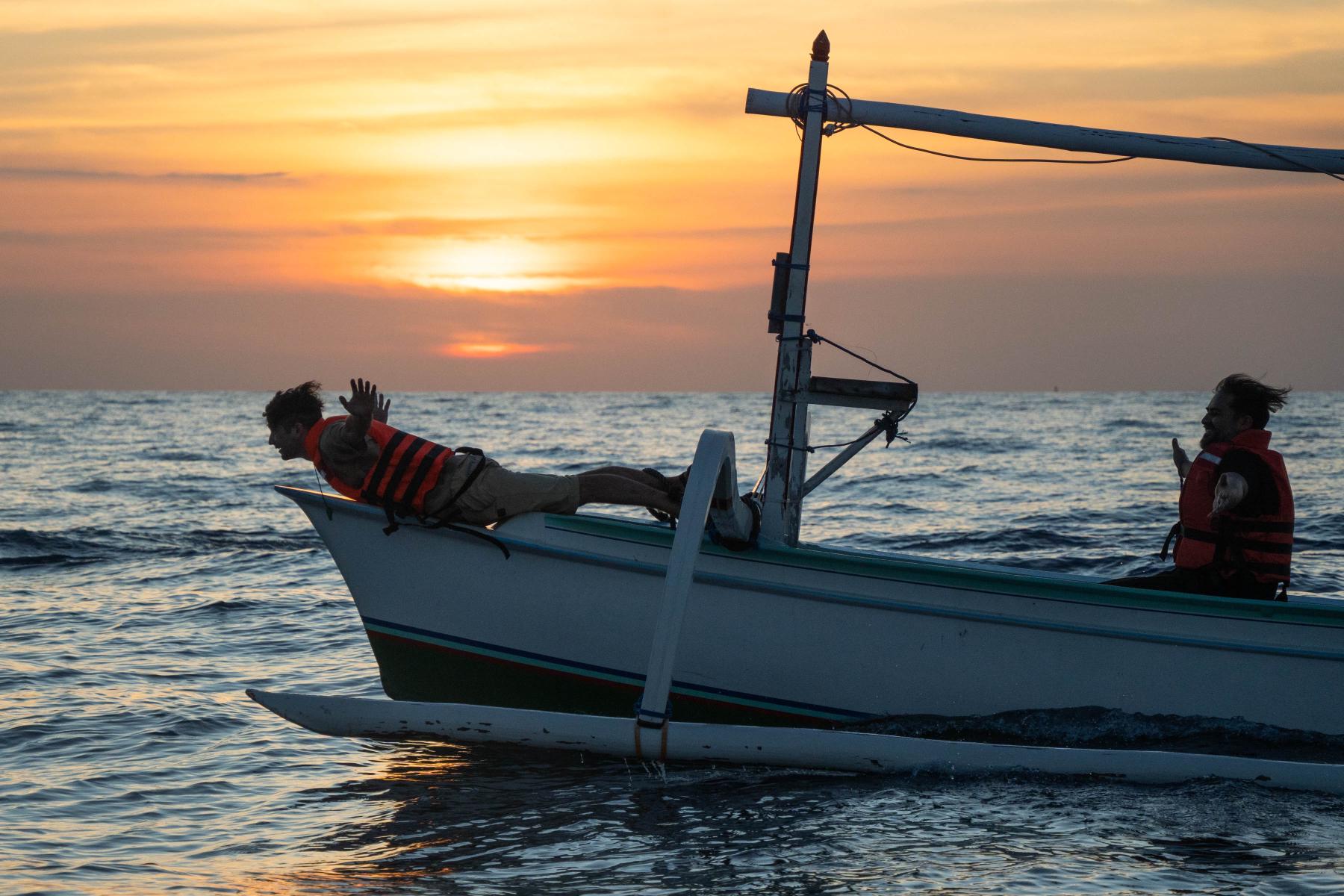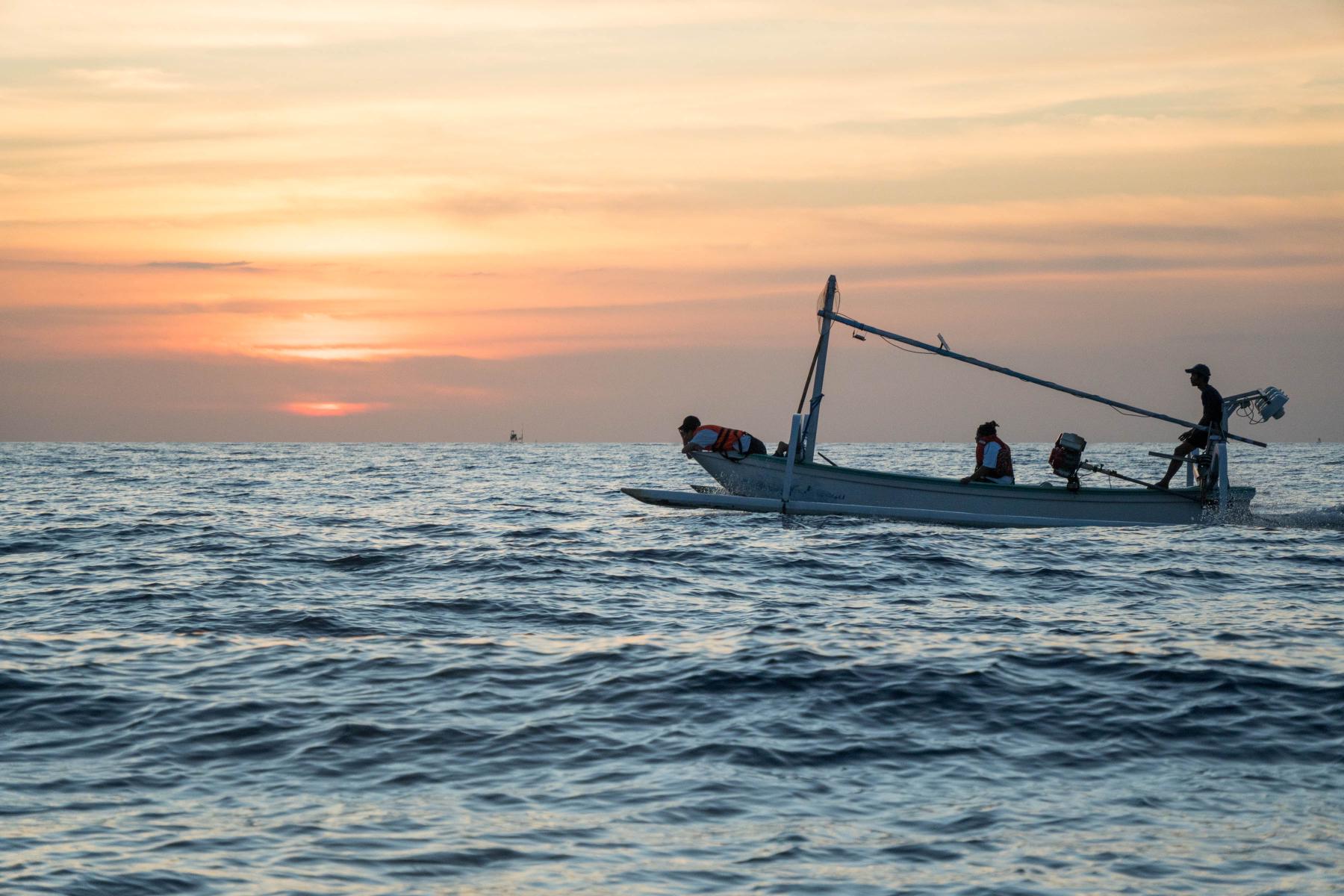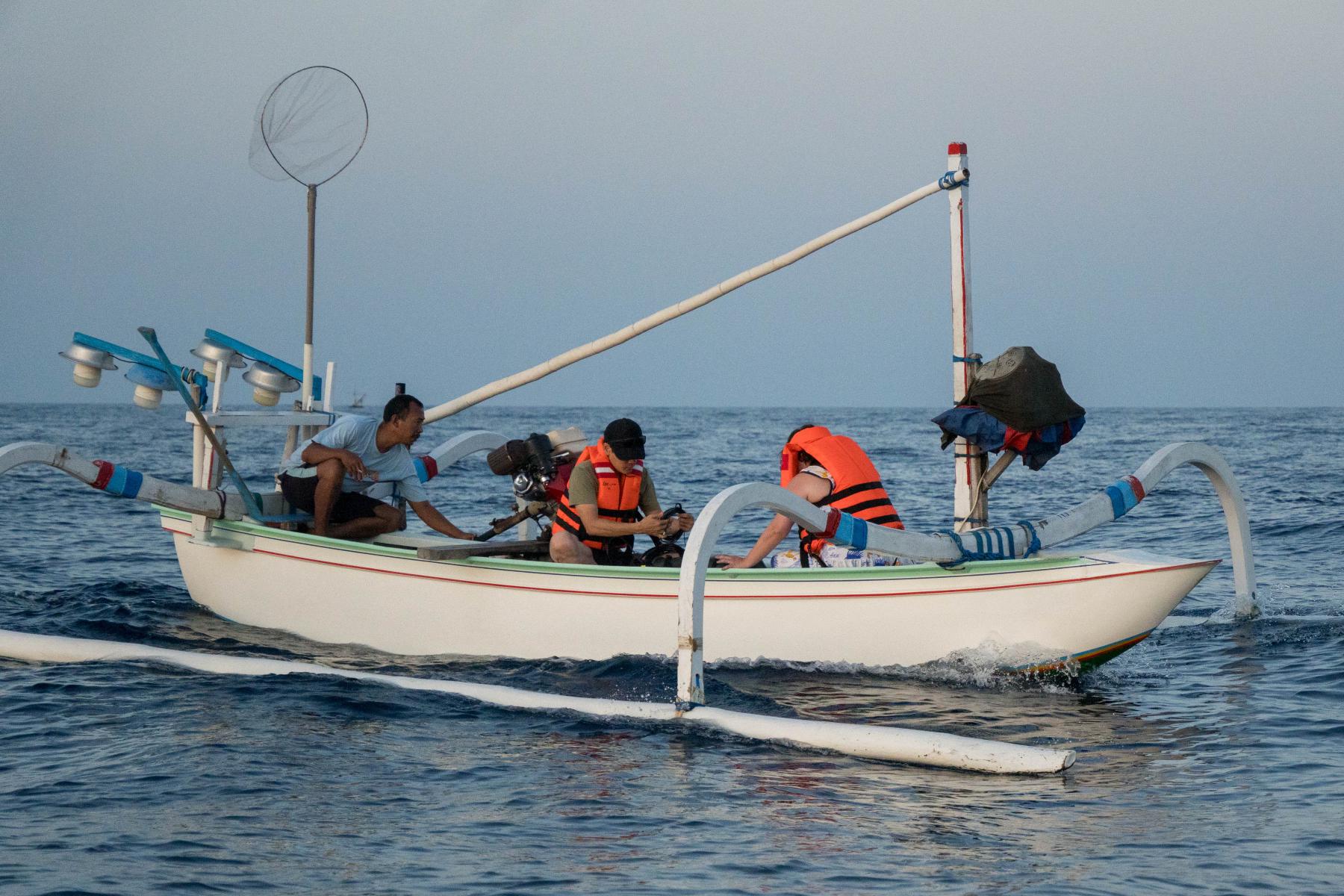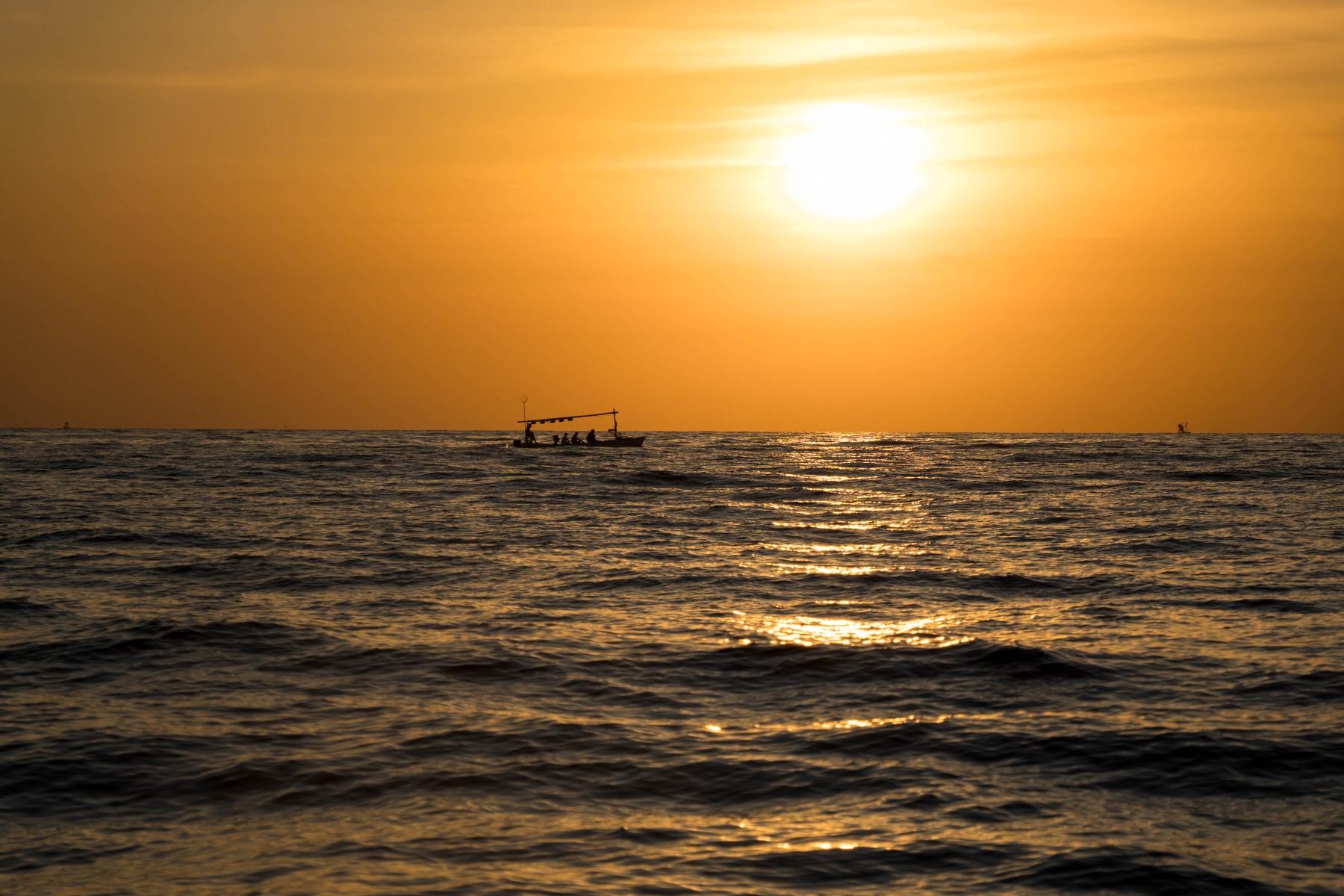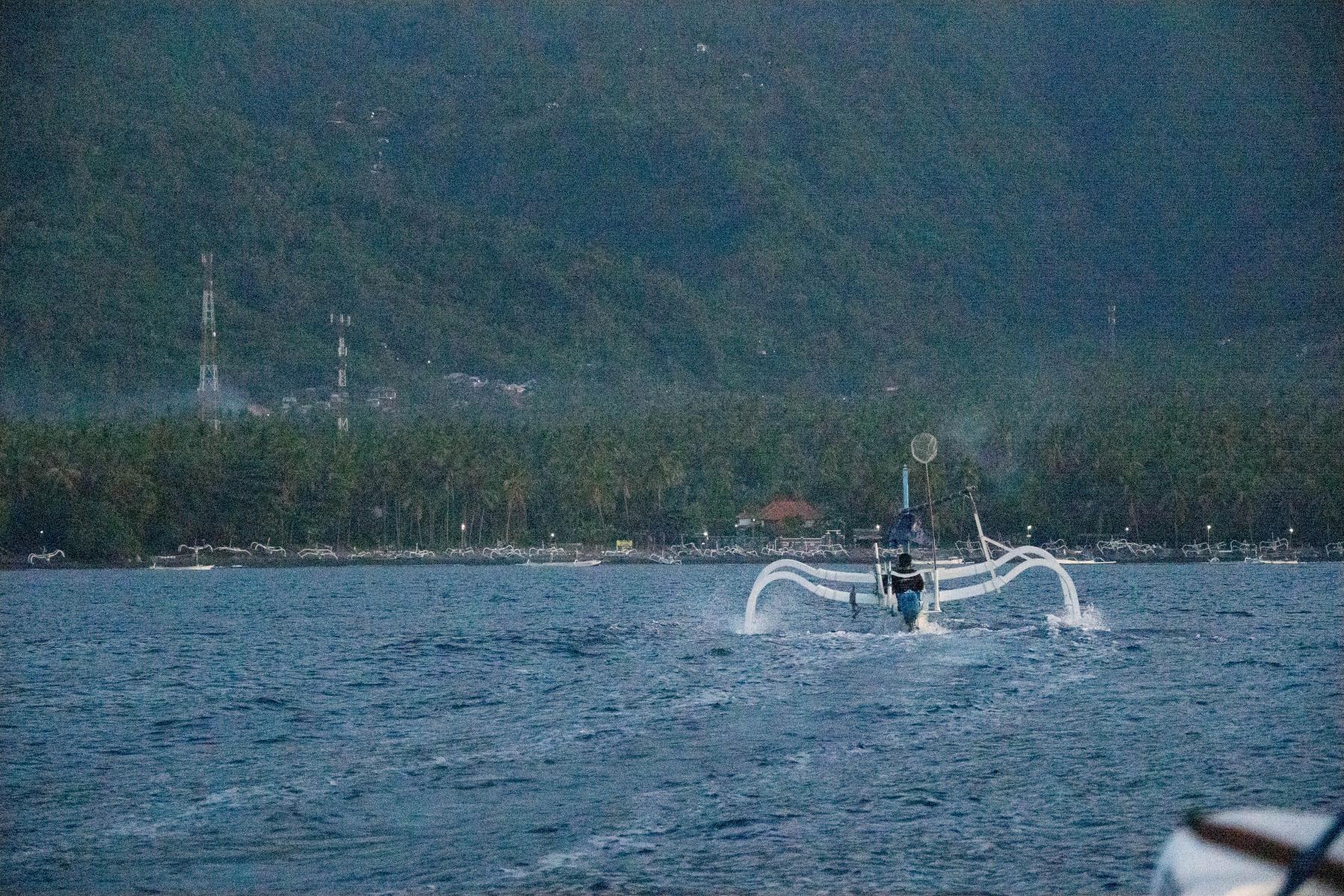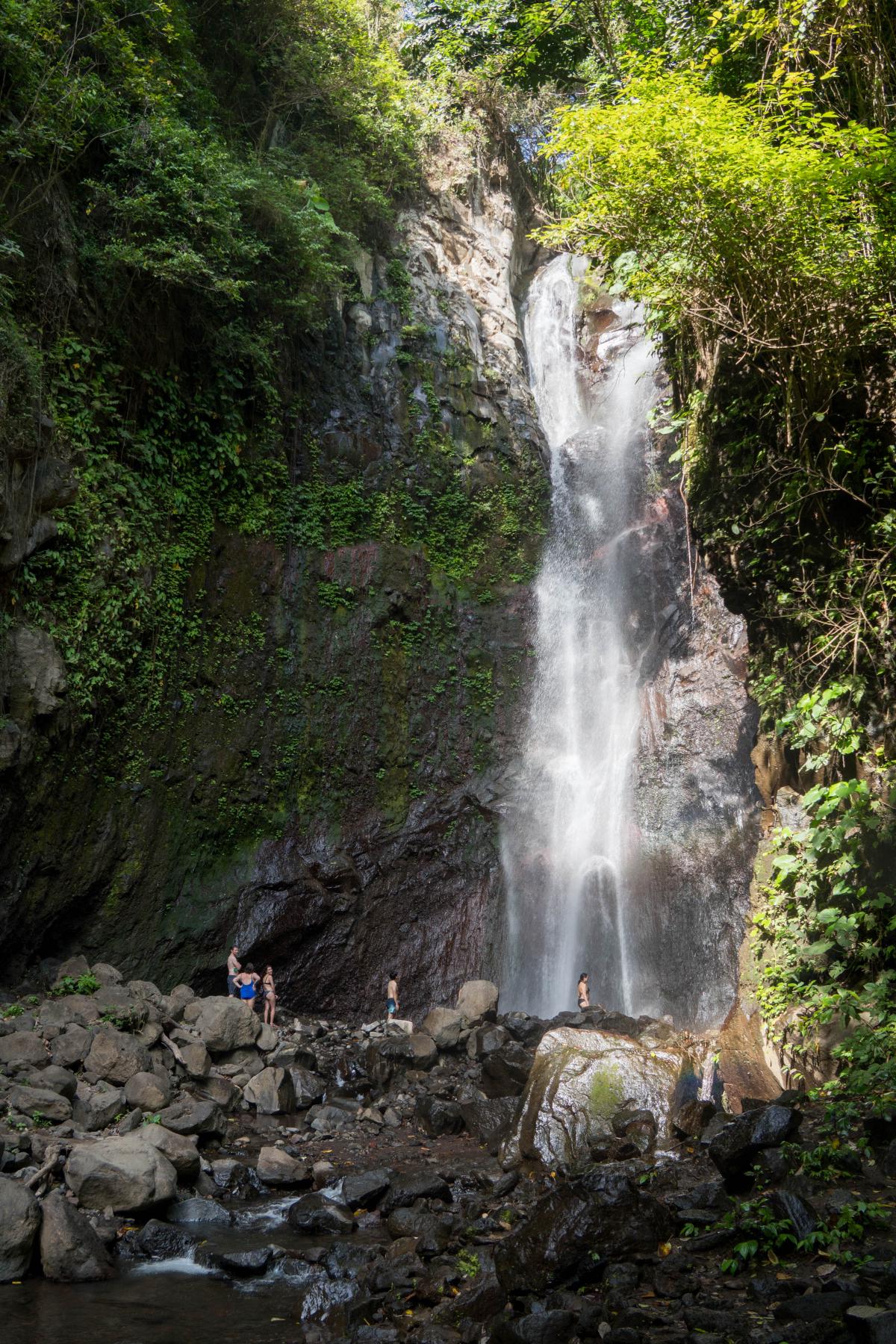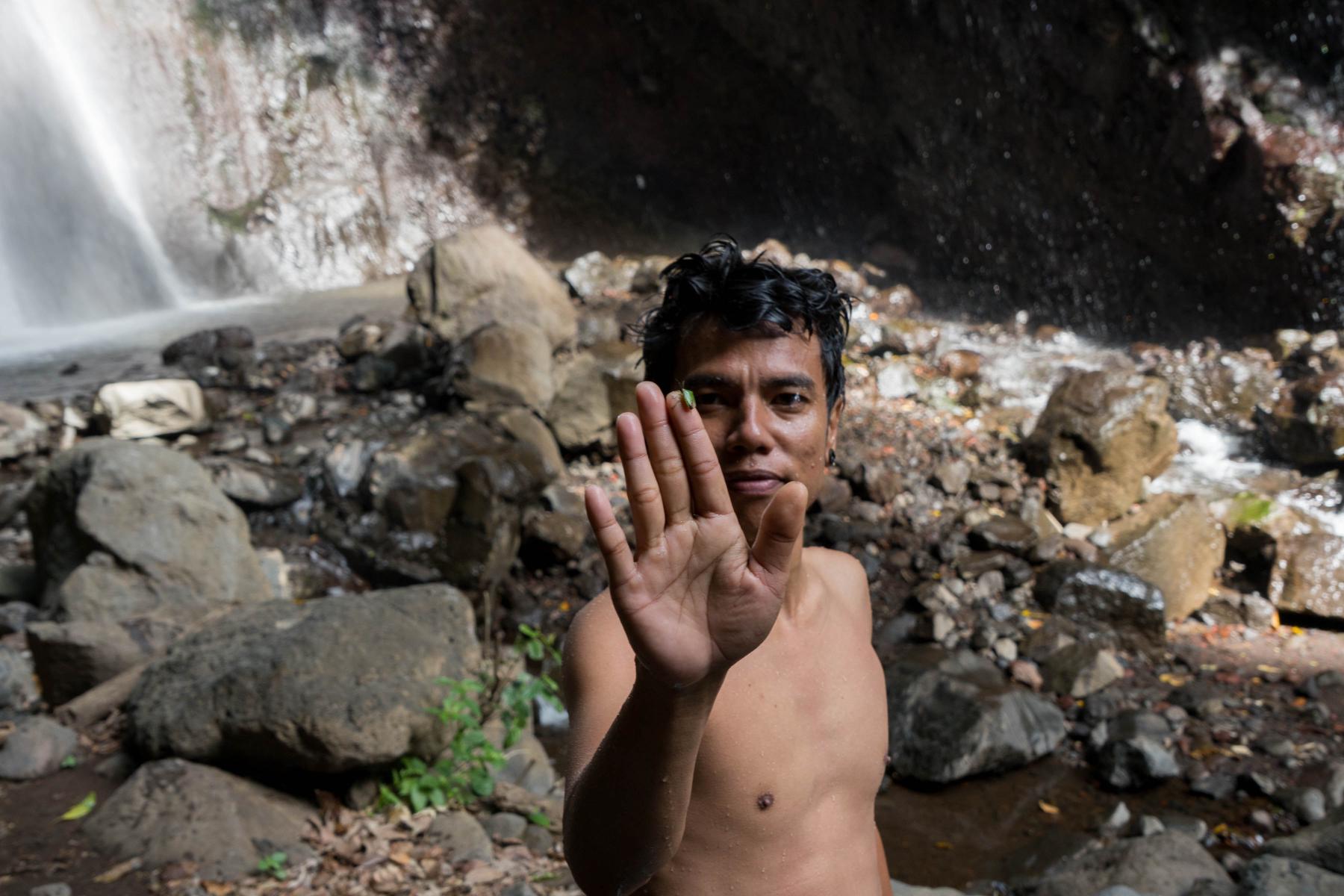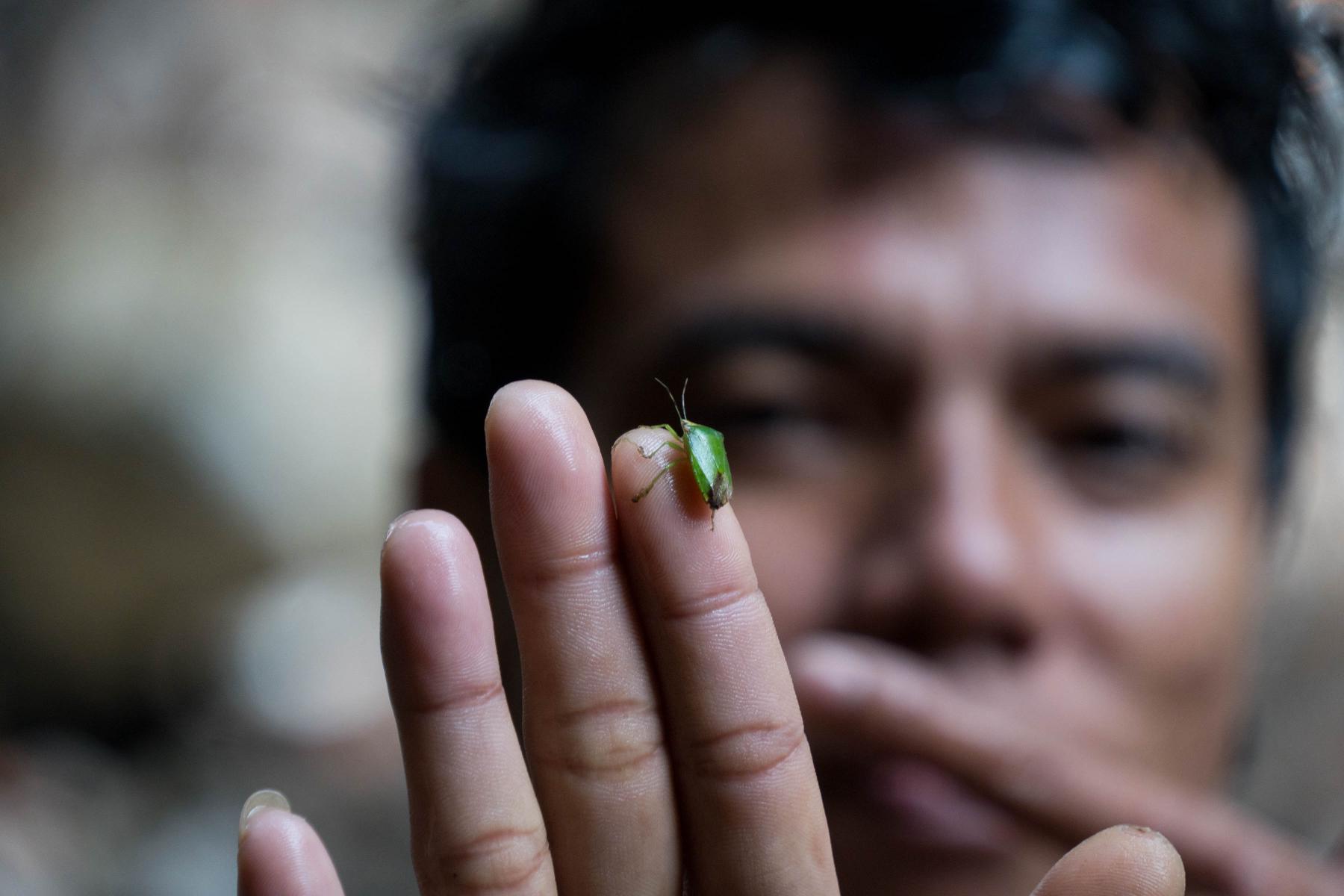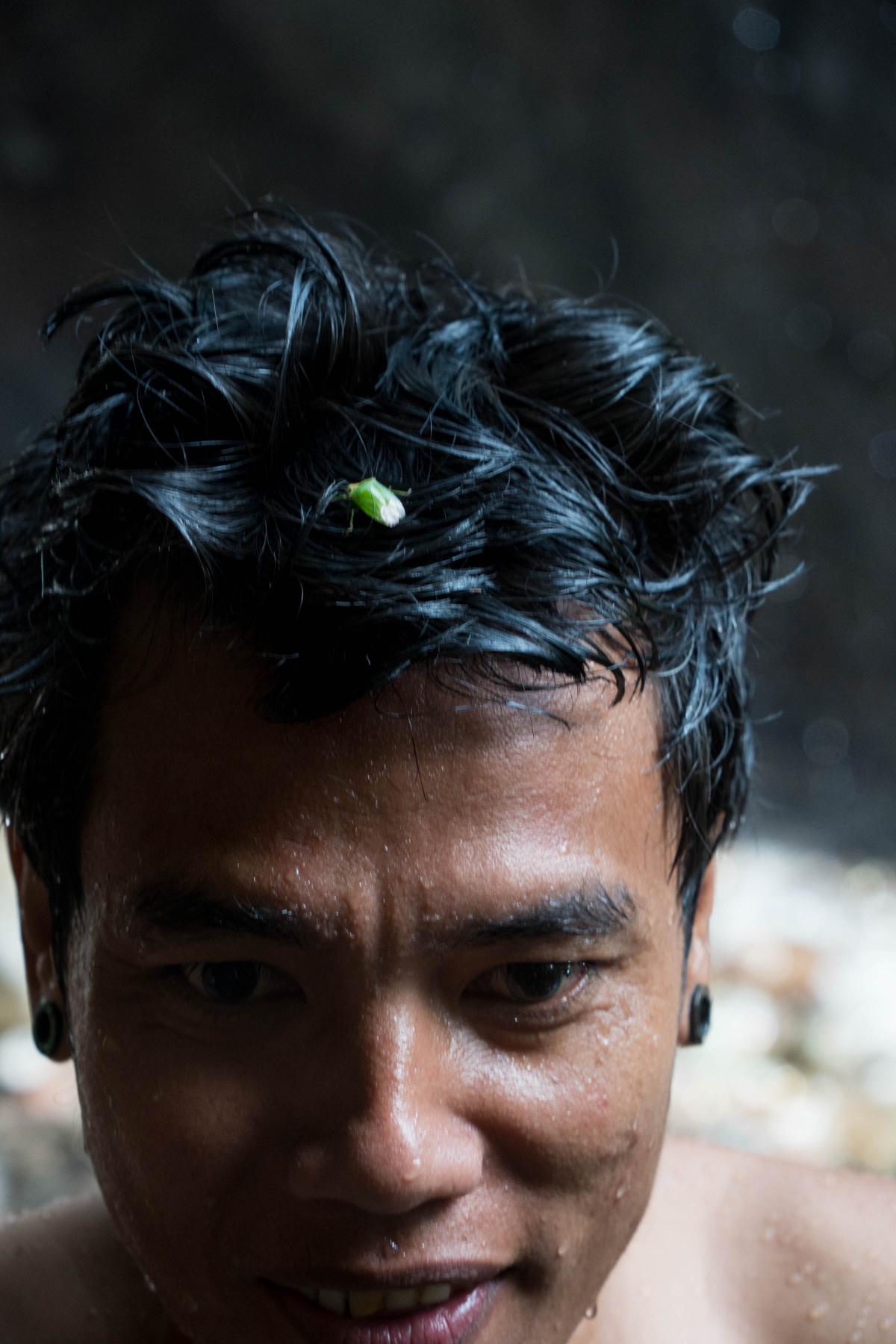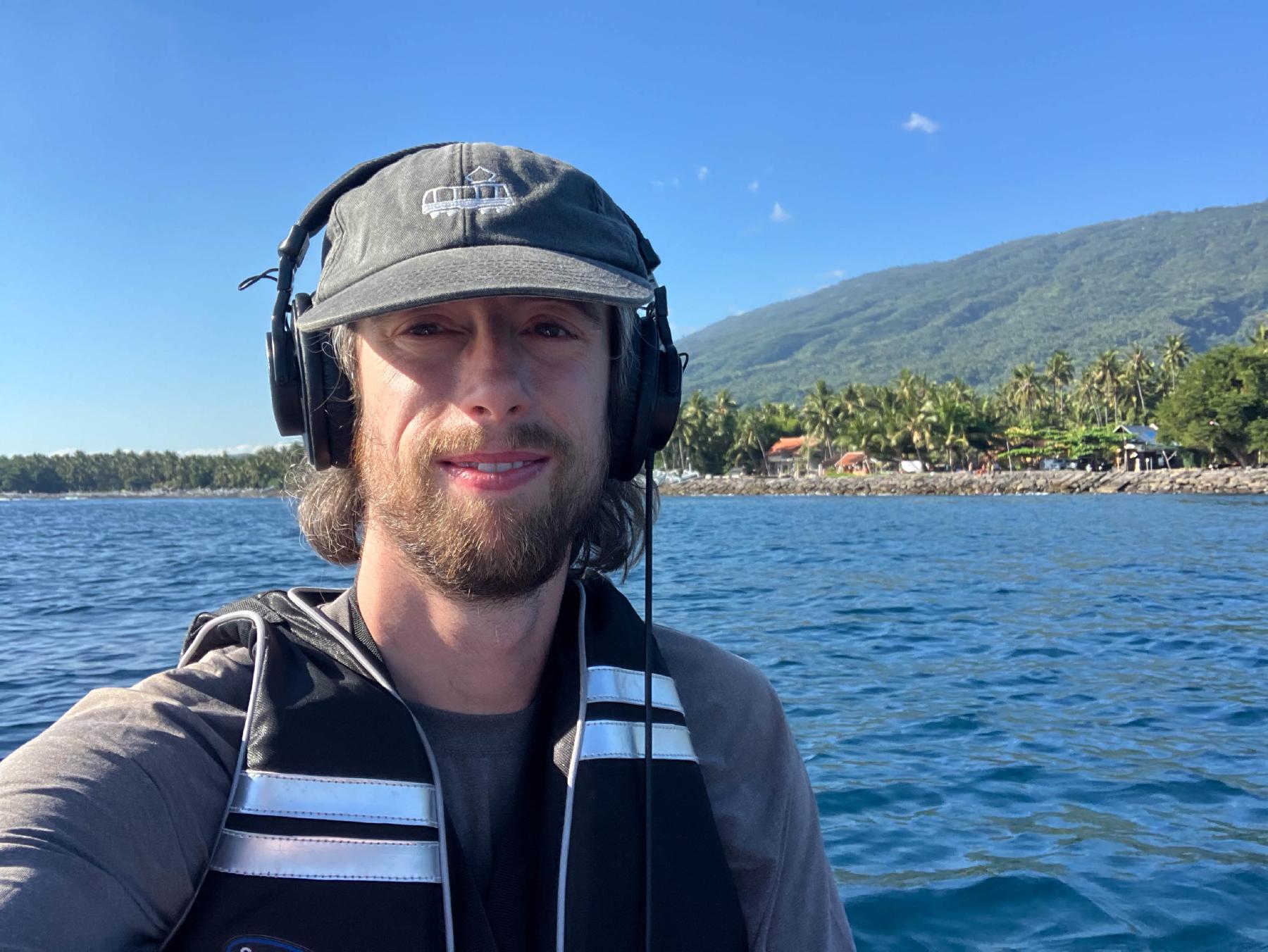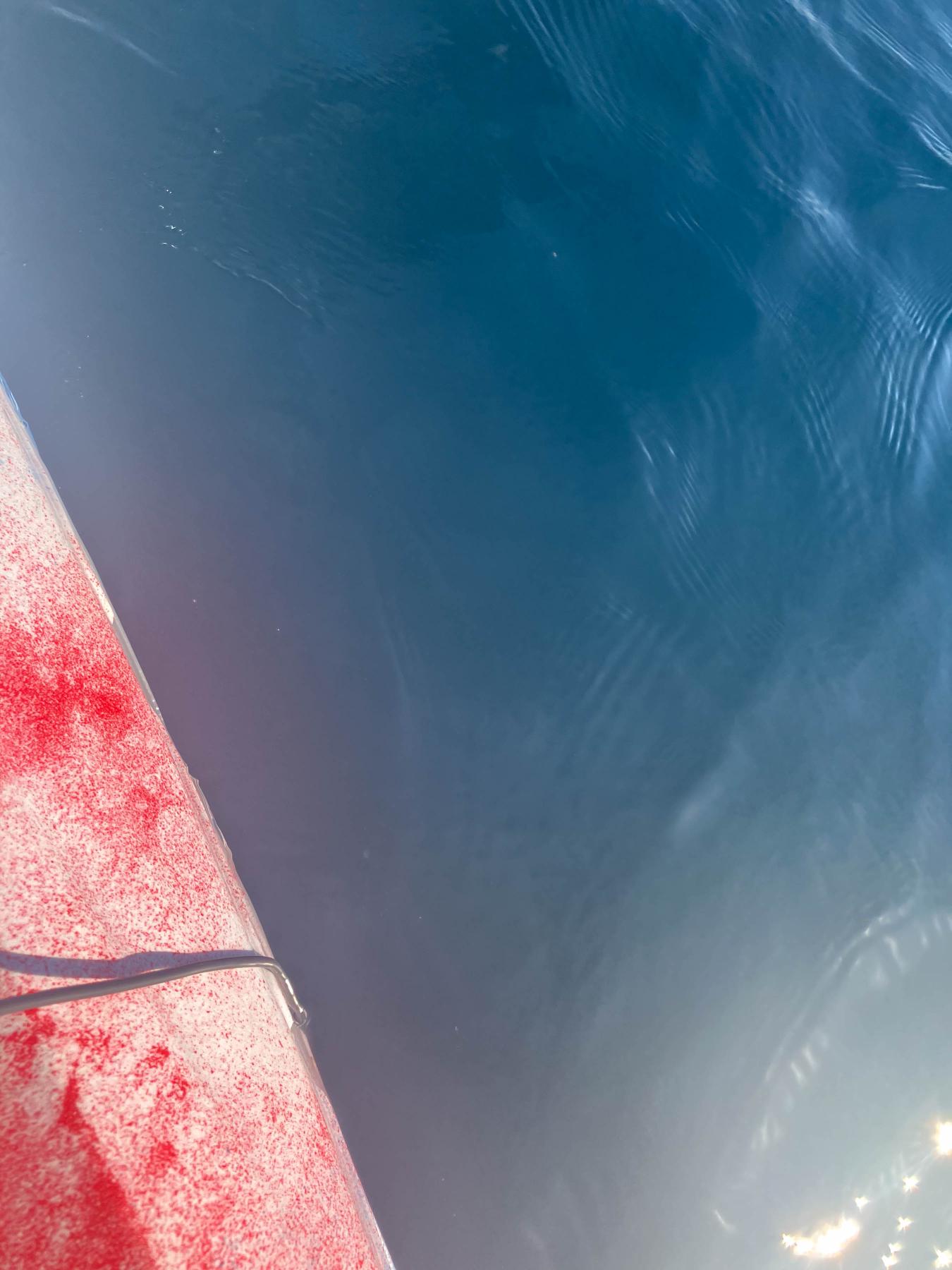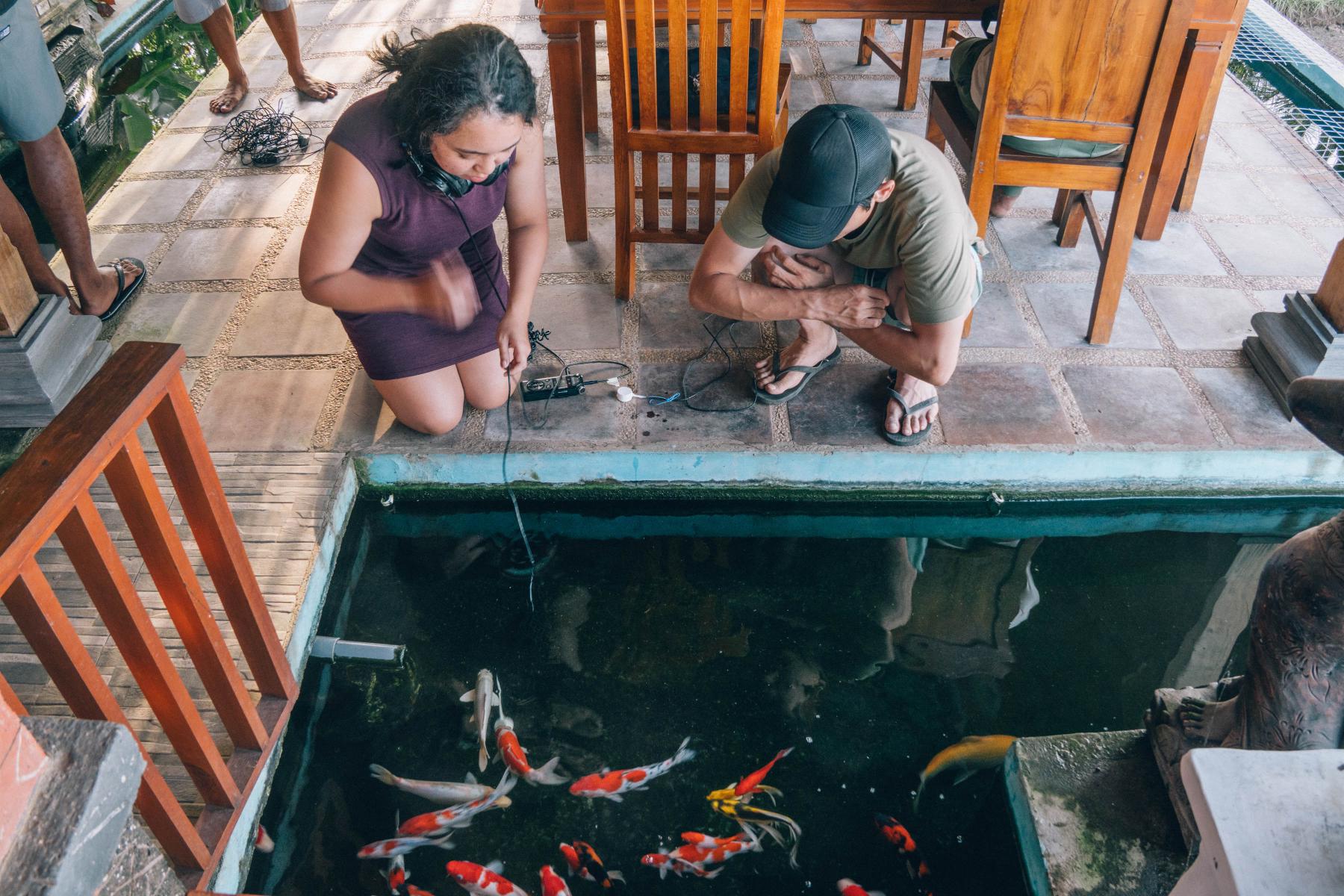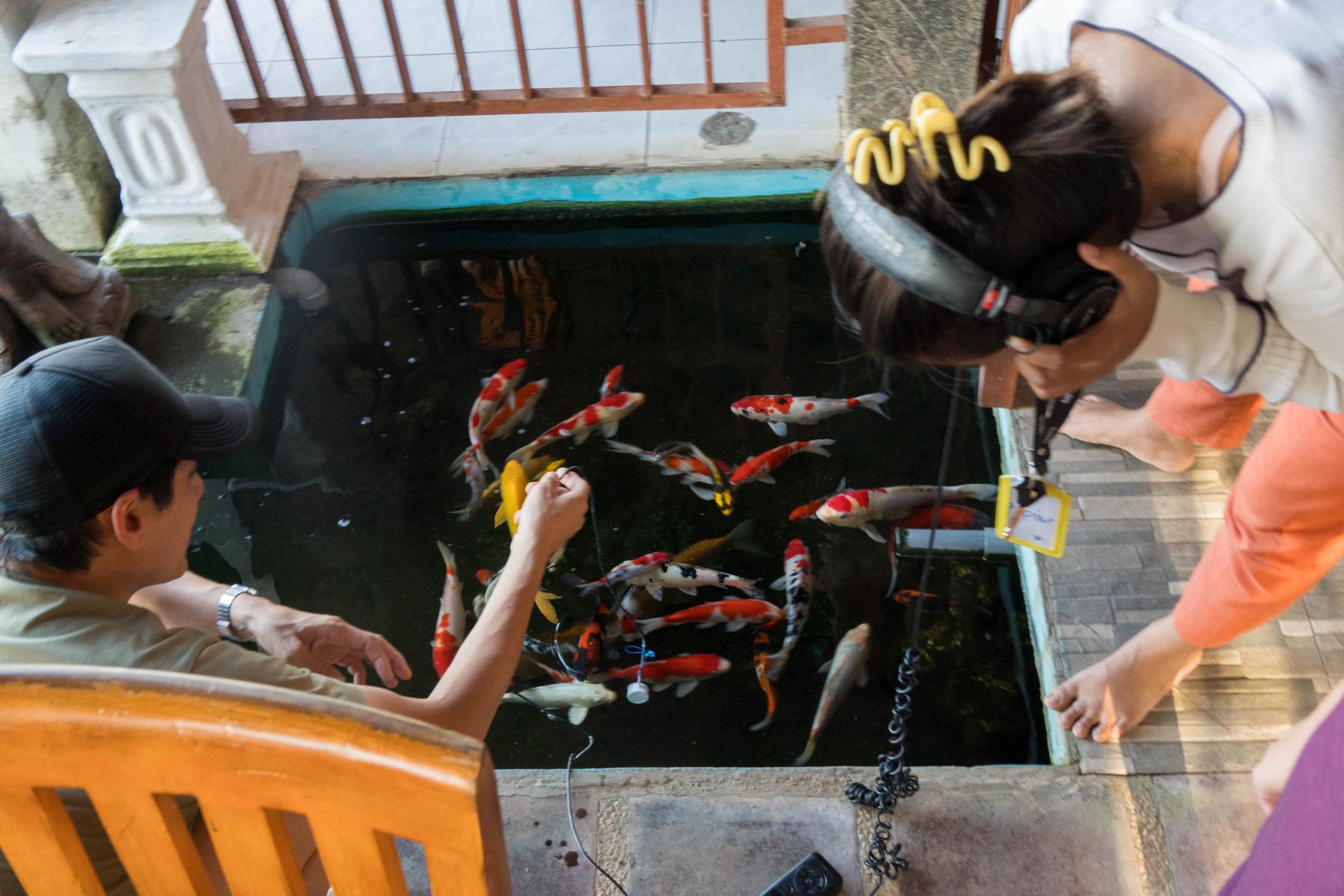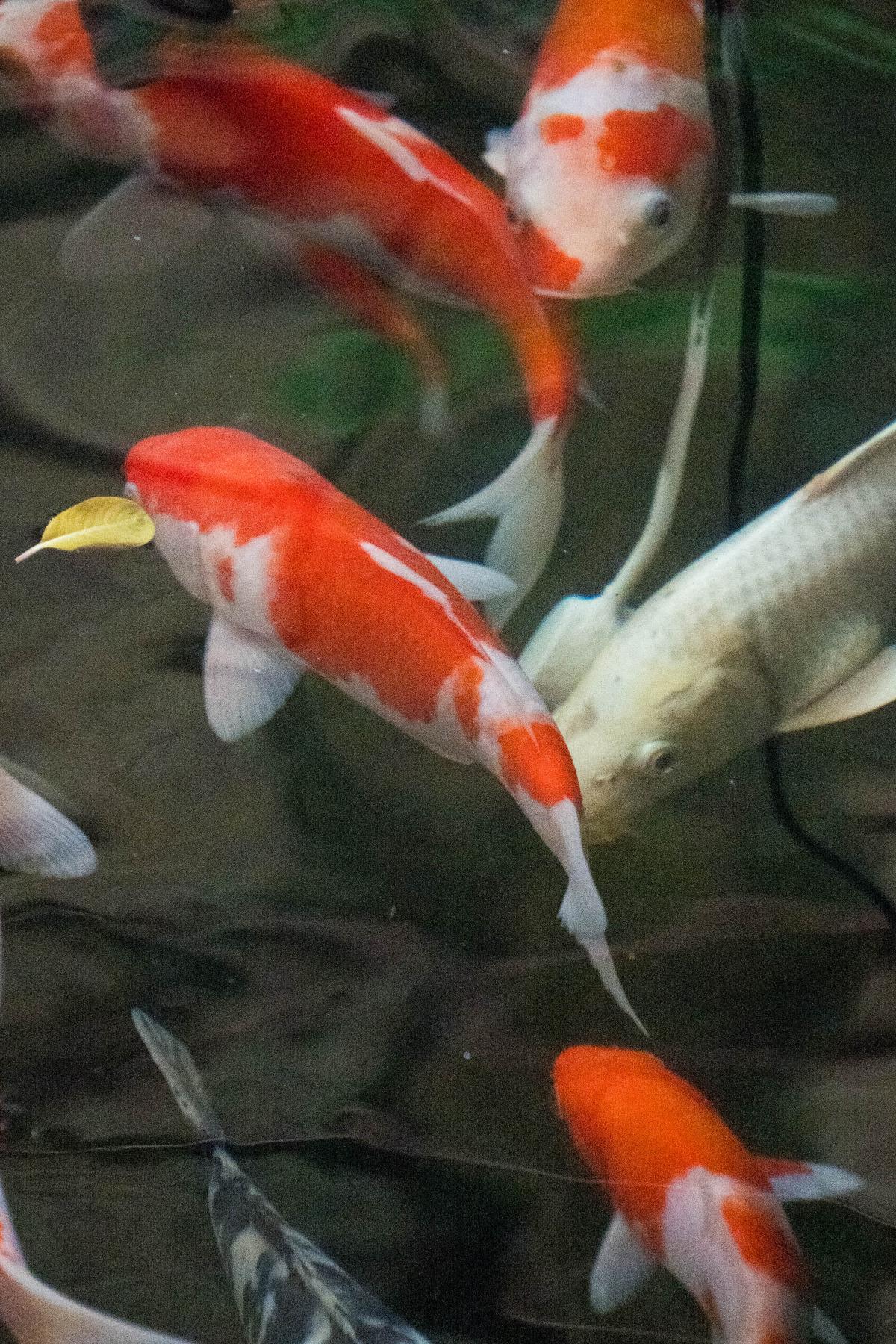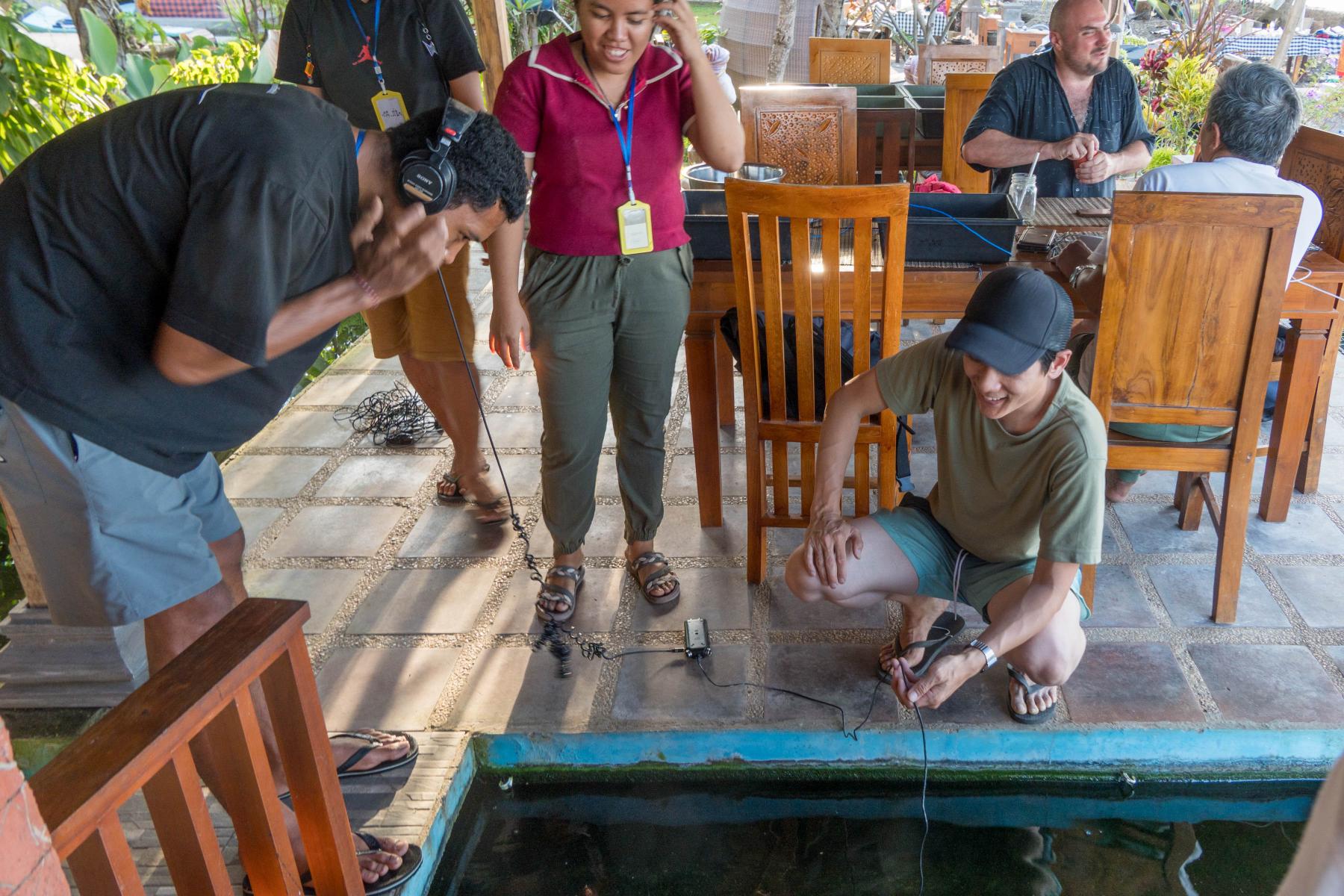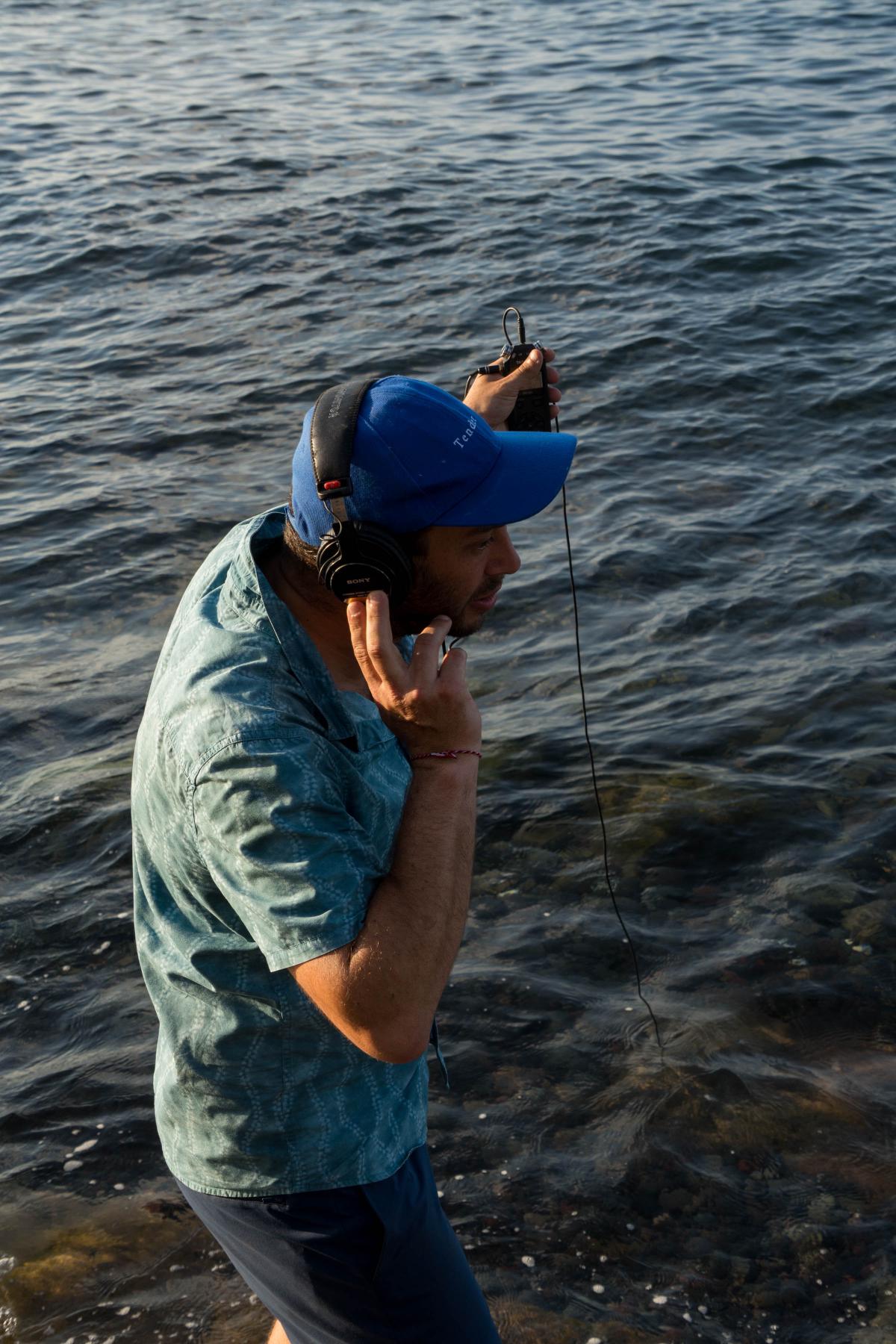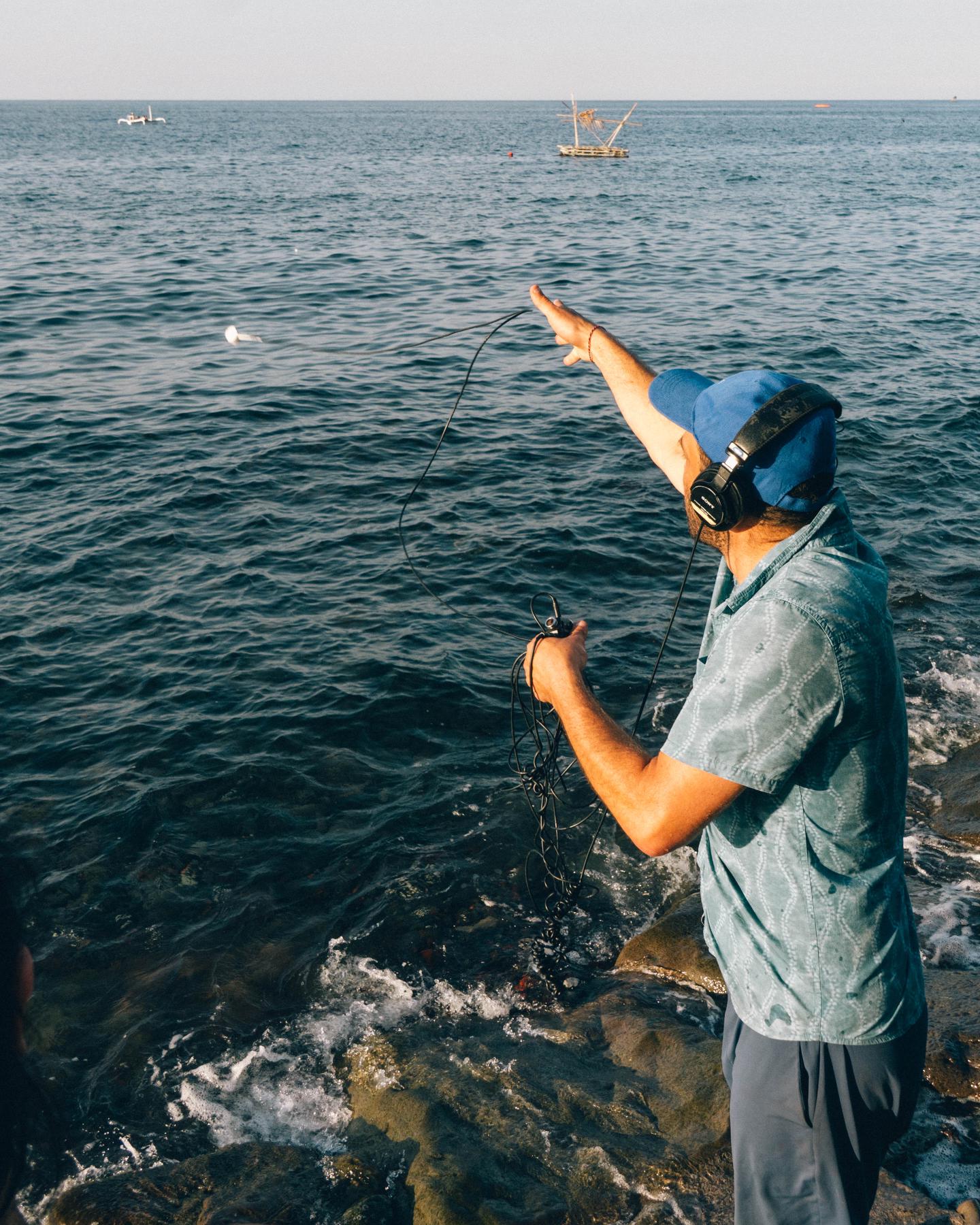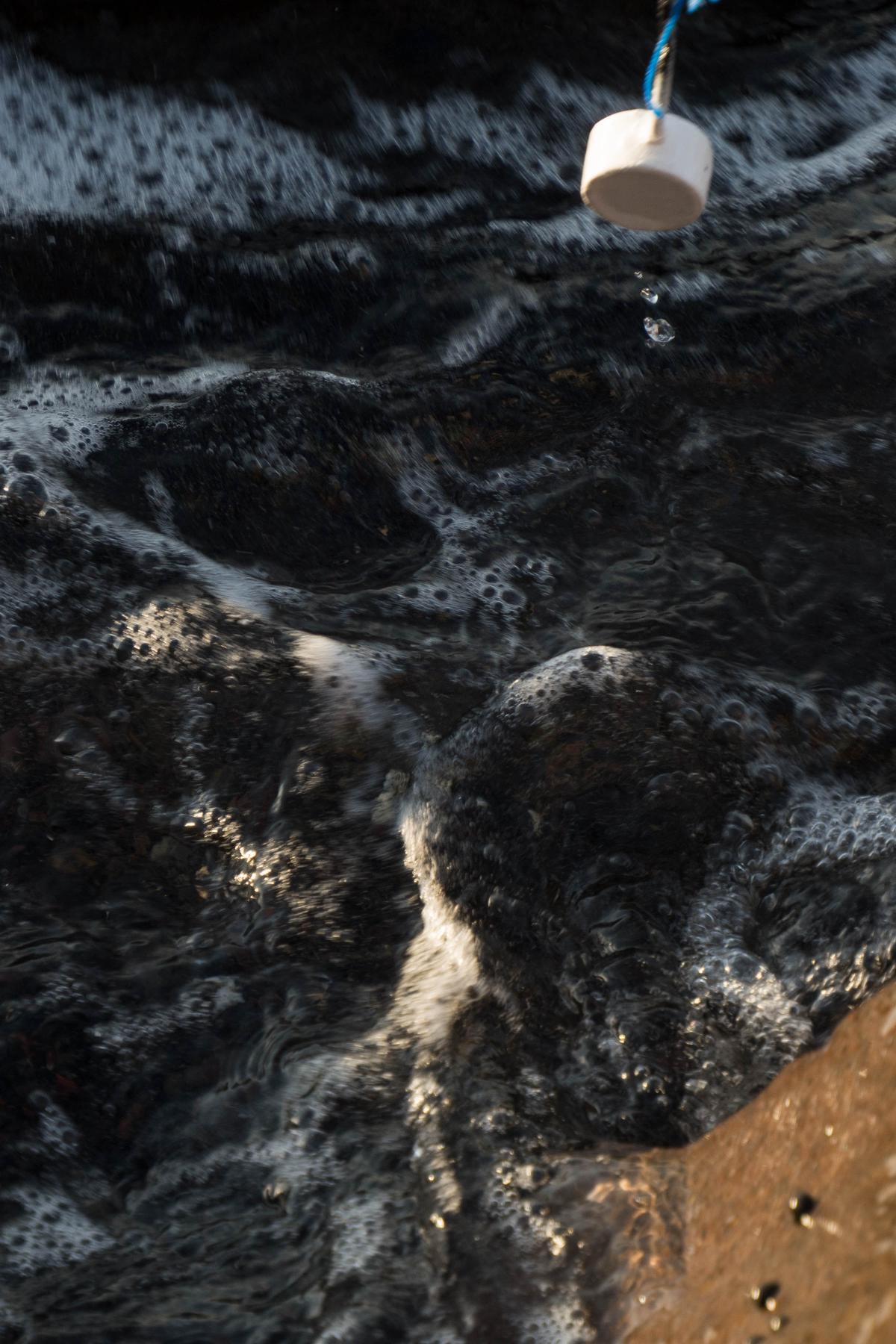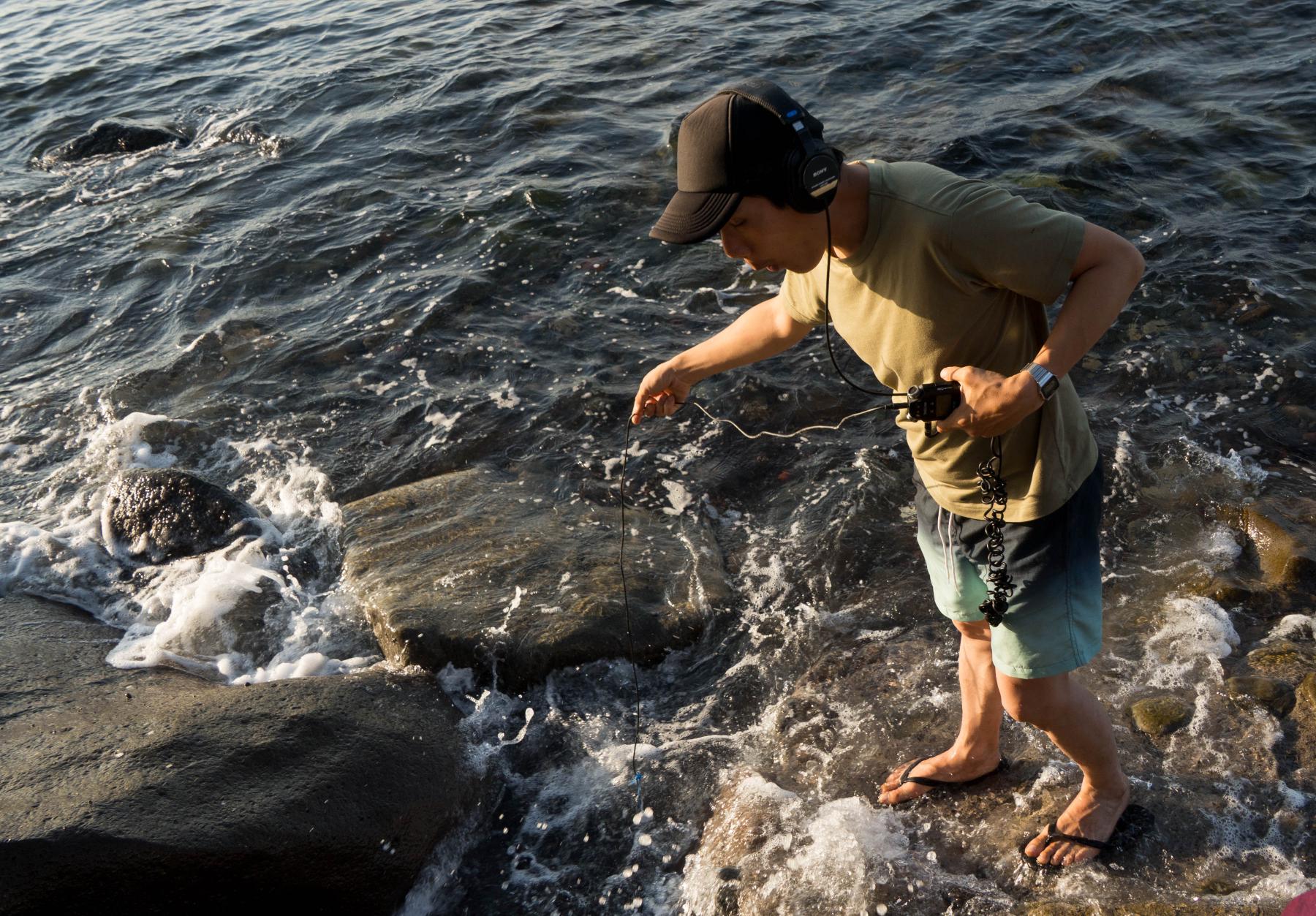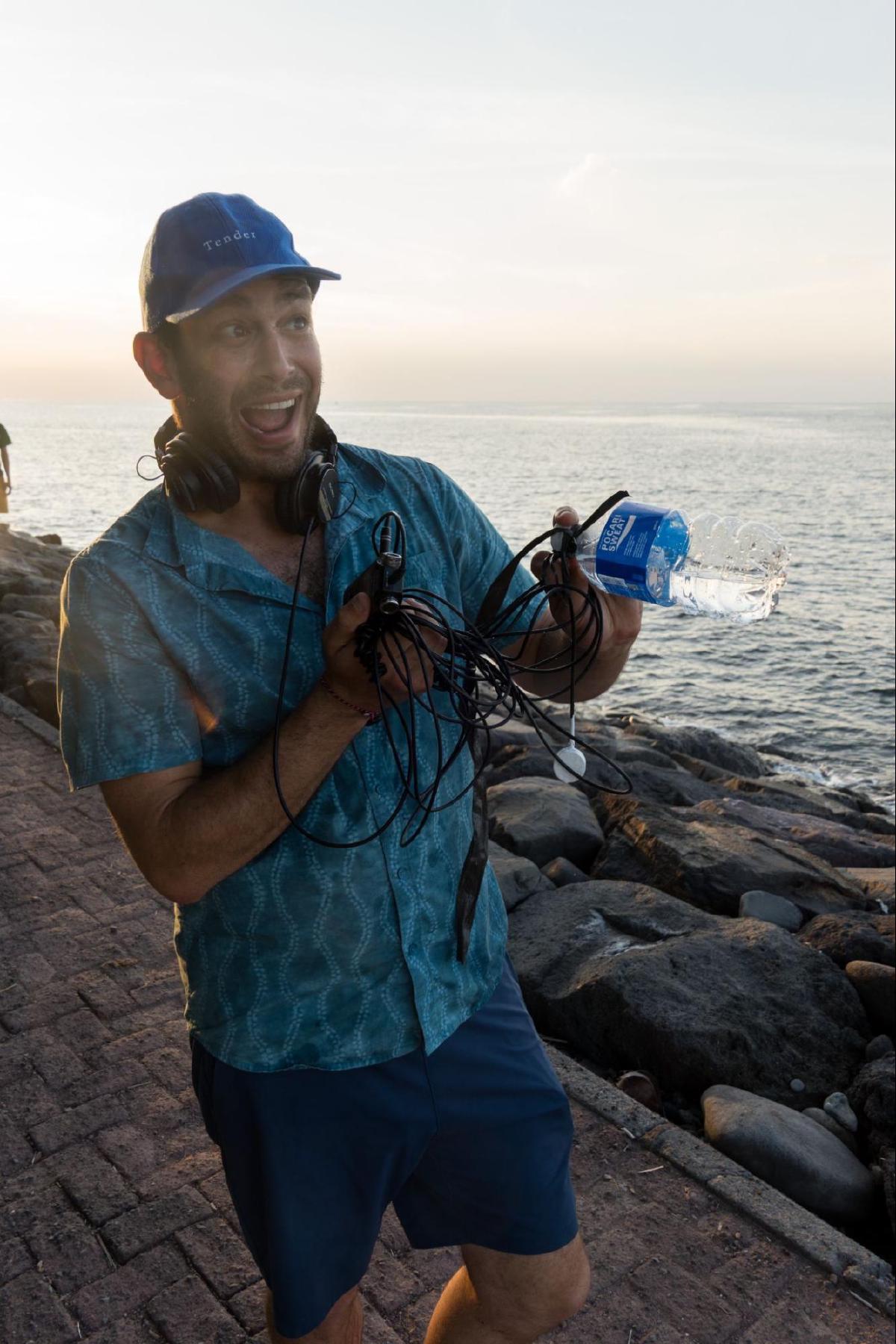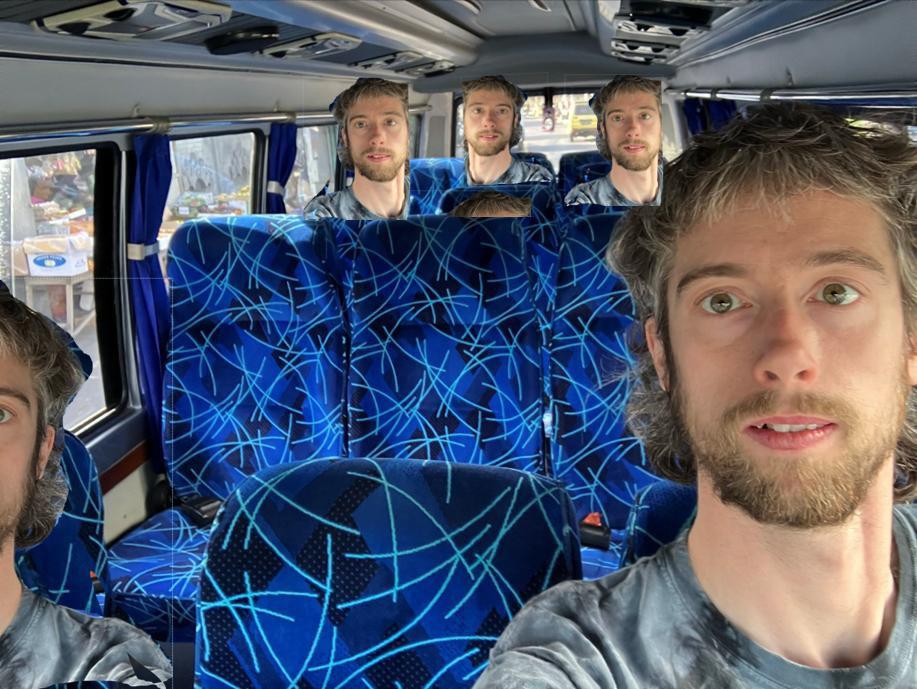Dinacon 2025: Photos and observations
See also my post about my project at Dinacon 2025, Passive Acoustic Listening.
I didn’t take very many photos of people, but of course it was the people that made Dinacon such an inspiring, creative, collaborative and warm experience. There are also many moments missing photographs, and perhaps more meaningful for it. Thank you to everyone, especially the organizers, Sea Communities, Segara Lestari and all of the translators and other folks who made it happen.
June 30

Alison and I arrive right at the start of dinner. Old friends, new faces, and food. Announcements start (yet to become “nouncies”) and we feel tired and at home.
July 1
Everyone’s first #botd.
A walk up to the organic farm. The native stingless bees are really cool, though their honey tastes like vinegar.
Where I was very quickly distracted by an Ornate Sunbird, and its nest!

Before dinner, Ben, Sam, Pom, Jan-Maarten, Harold, Alison and I, led by Bri and Wilan and Wira, hiked uphill a ways to install a new mothbox. After setting up the mothbox, Wilan and his wife hosted us for some delicious taro and coconut milk.


July 2
Alison and I are staying at Pondok Ardi, another homestay about a 15 minute walk away from Segara Lestari. After sorting out the logistics of not lugging our project materials back and forth every day, this morning bird walk becomes pretty nice.



A couple vanfuls of Dinasaurs went up to the waterfall above Les village. My favorite things to observe were the ferns and worts on the steep slopes of the canyon.



This woven chrysalis thing was pretty cool.
And mammals! Though they seemed pretty common by the waterfall, these monkeys are apparently endangered :(
In the afternoon, Mark, Jan-Maarten, Wira and I went to Tejakula to try to find some parts for our projects. Though I was only able to find two items on my shopping list (silicone and a long piece of PVC pipe), I was delighted to find a number of swiftlet nests in the ground floor of the electrical shop.
July 3
A whole day of birding in West Bali National Park. Thanks to Mas and Markus from Bali Birding Tour for showing us around and finding so many great birds. Not pictured: a fantastic Javan Kingfisher.









We end the day in some of West Bali’s finest shrimp ponds looking for shorebirds.



Also not pictured: a wild green chicken, the Green Junglefowl!
What a long, perfect day of birding.
July 4
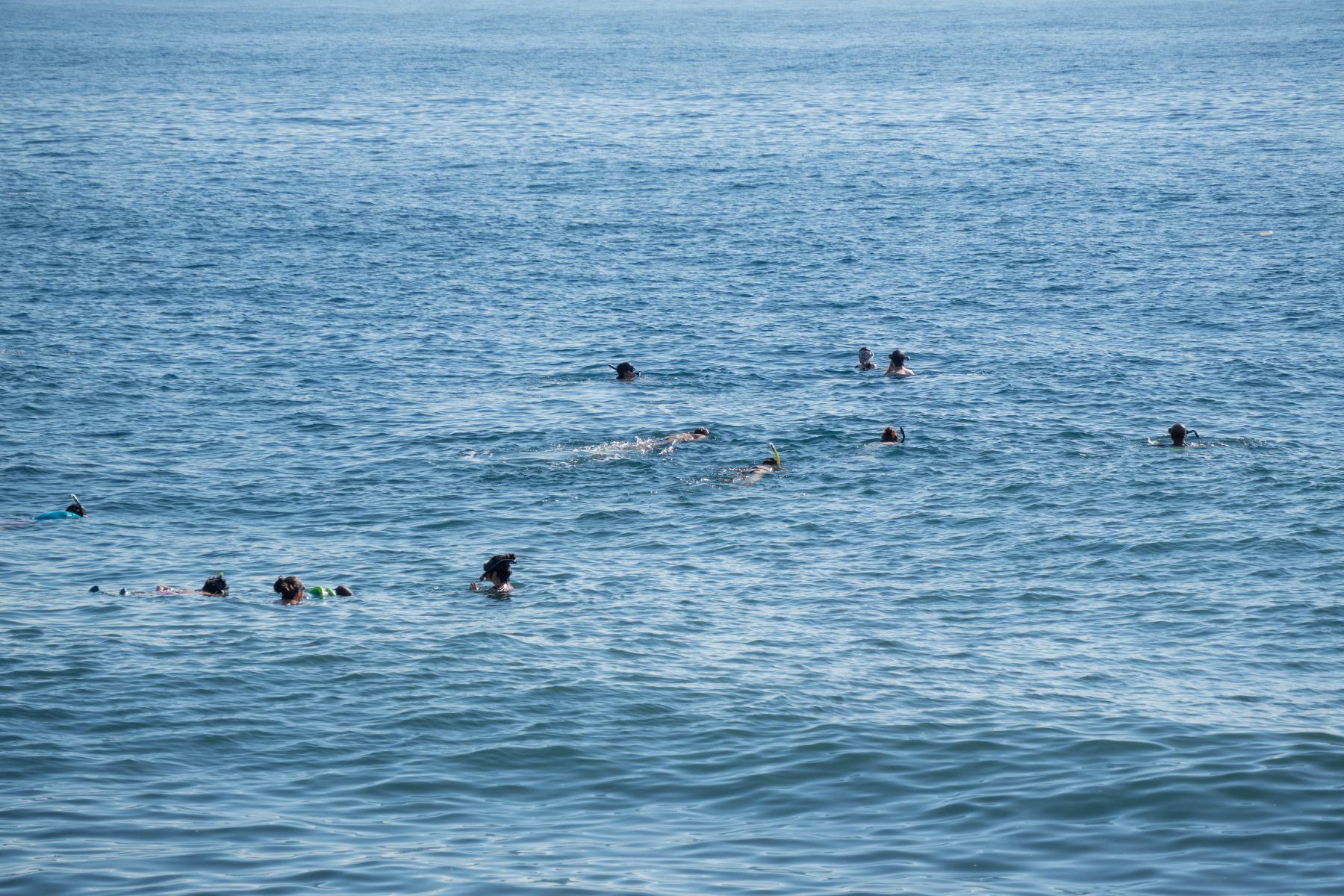
In the late afternoon, I hiked a different direction above the waterfall looking for birds.


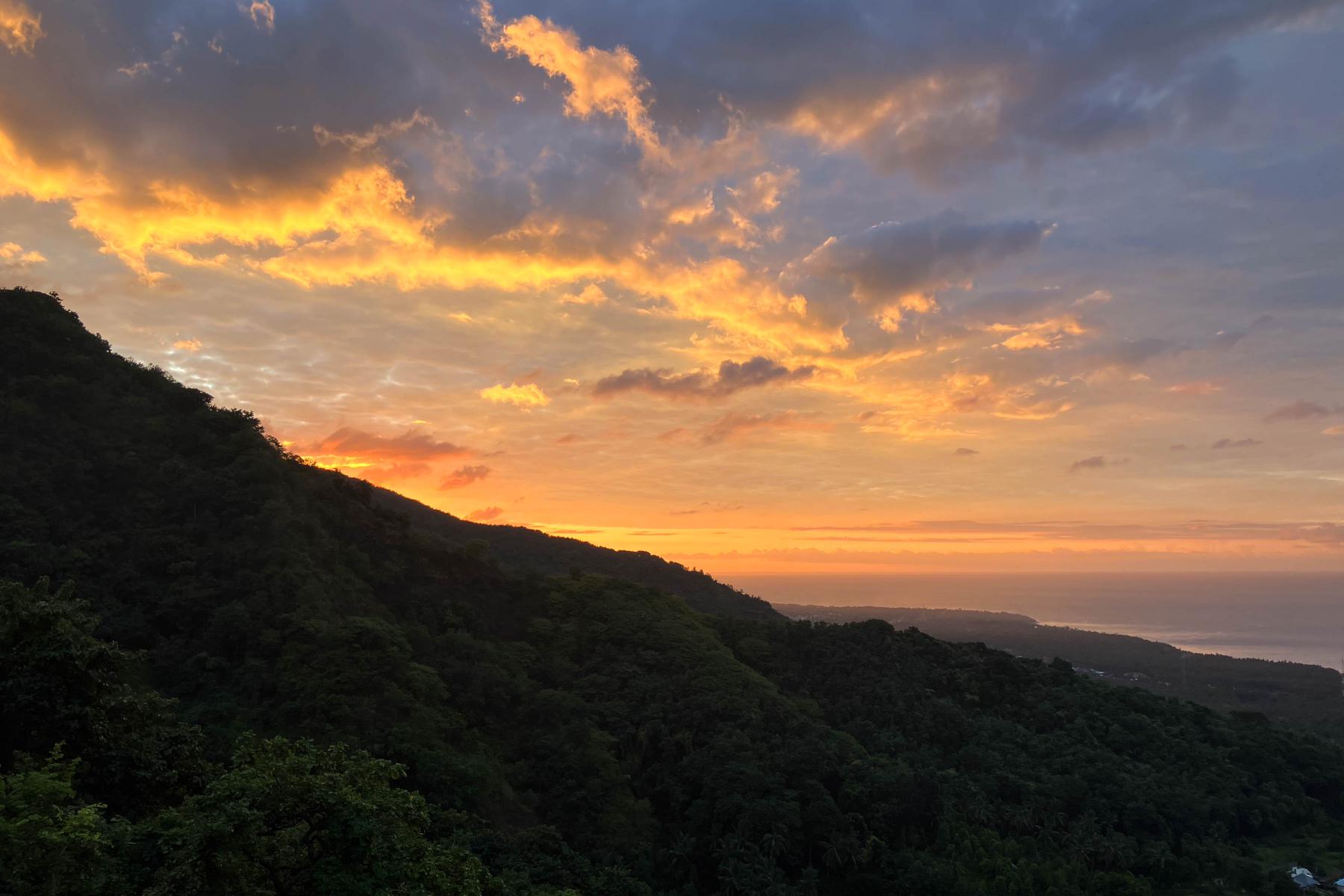
Above the village, I hear the sound of Balinese singing and gamelan, possibly from two different sources, blending into one. For the rest of the evening, I follow sounds, bringing me to a house in the woods, a funeral, and a temple ceremony.
July 5
Alison and I woke up early and walked to the Les market, where we ran into Komang Wi, who showed us around the outside of the old temple above the market.
One thing that is still missing from this writeup is most of my aquatic observations. Here are two from July 5th, more to come. Be sure to click on the second one to listen to the sound – I really don’t know what it could be.
The sounds of gamelan after dinner lead me to the culinary school, where the teacher is kind enough to let me drop in and listen to the students practice.
Followed by a cathartic performance of evolution and rebirth, from Dinacon’s own Kebebet Boiz.
July 6
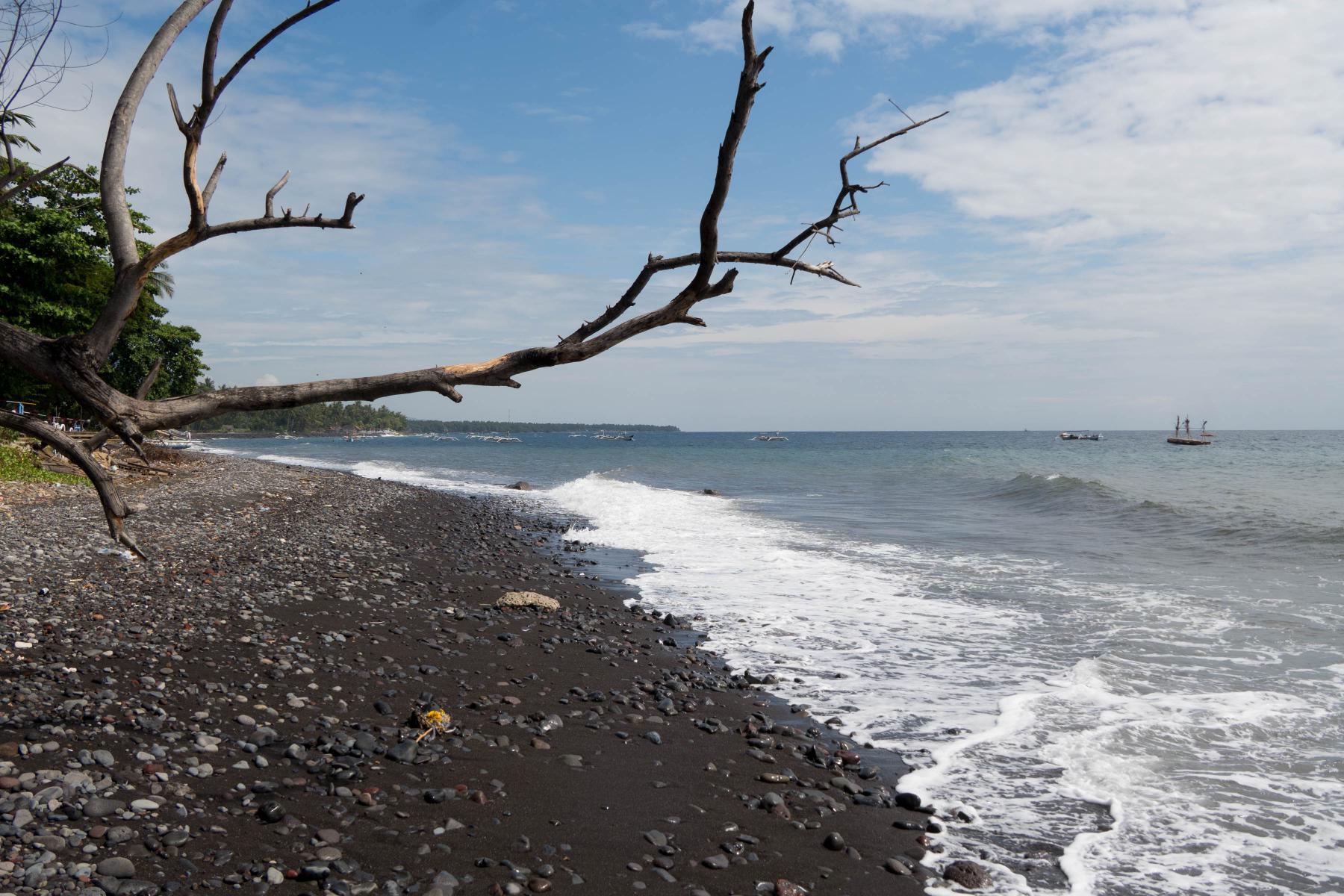

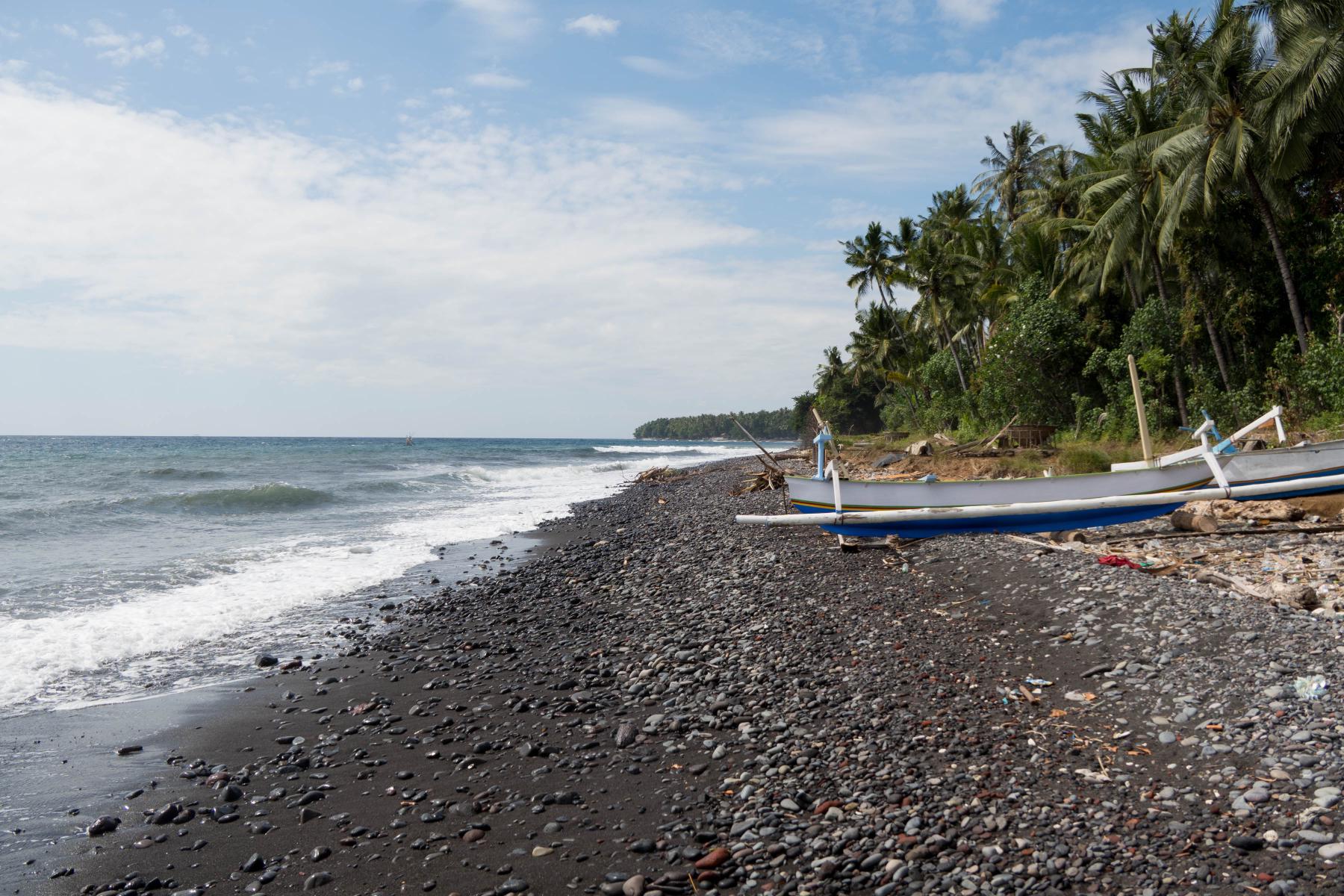
Incredible storms at the end of Open Day. After dinner, a night sound walk led by Ashlin, and three observations.



July 7
Today we climbed Mt. Abang, a lesser visited mountain in Bali near Mt. Batur, on the edge of a volcanic caldera. Wira connected us with a friend of his, Gin, who guided us up the mountain. While not strictly necessary (the trail is straightforward to follow, though steep and muddy), the local company was nice and Gin was a lot of fun to hike with.
First, a stop at the world’s most beautiful Alfamart for coffee and a view. Incredible fog in the bottom of the caldera evaporated as we watched.
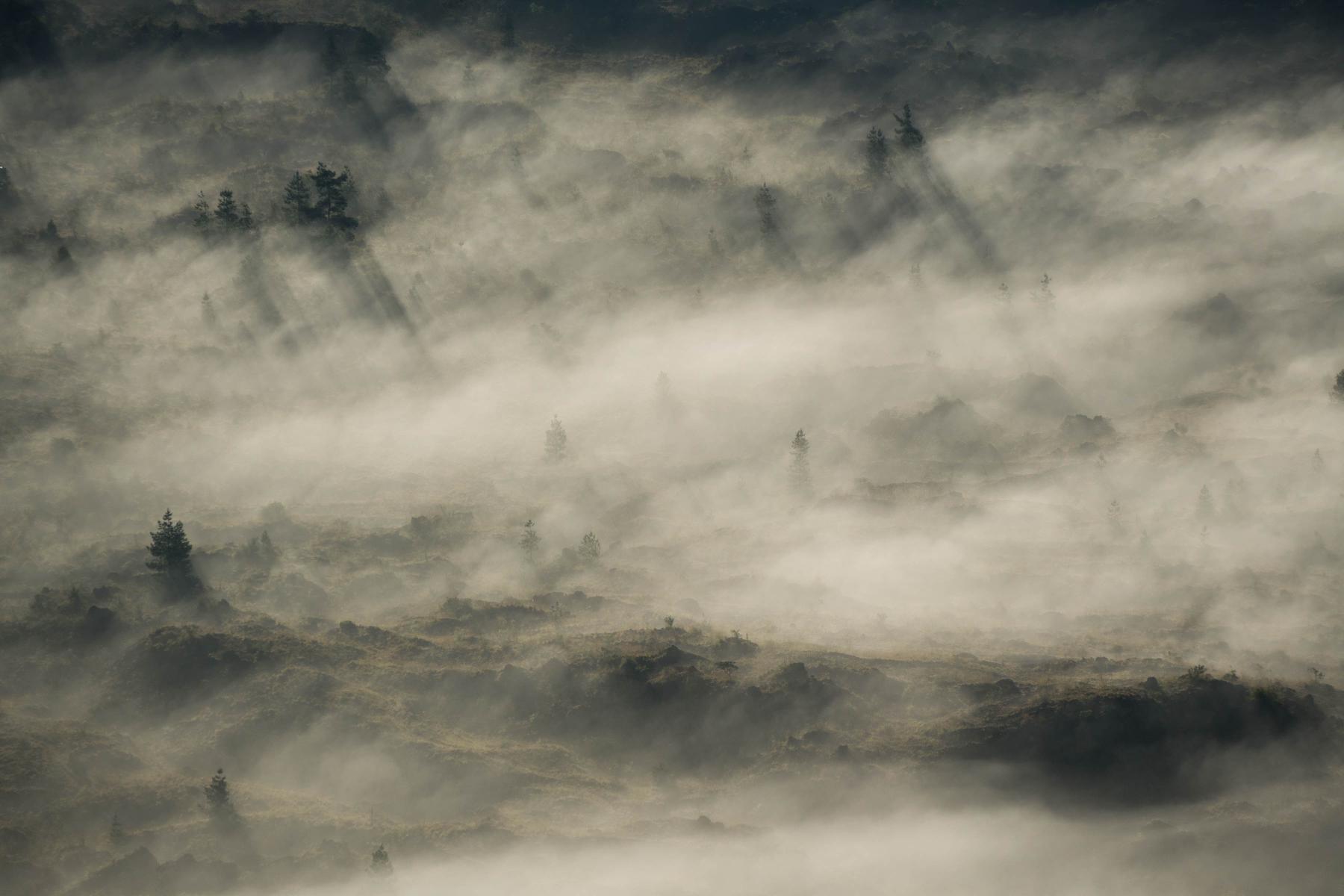
Mt. Batur across the caldera and fish farms.
The trail started off dreamily with a beautiful gentle climb through a lush forest full of epiphytes.
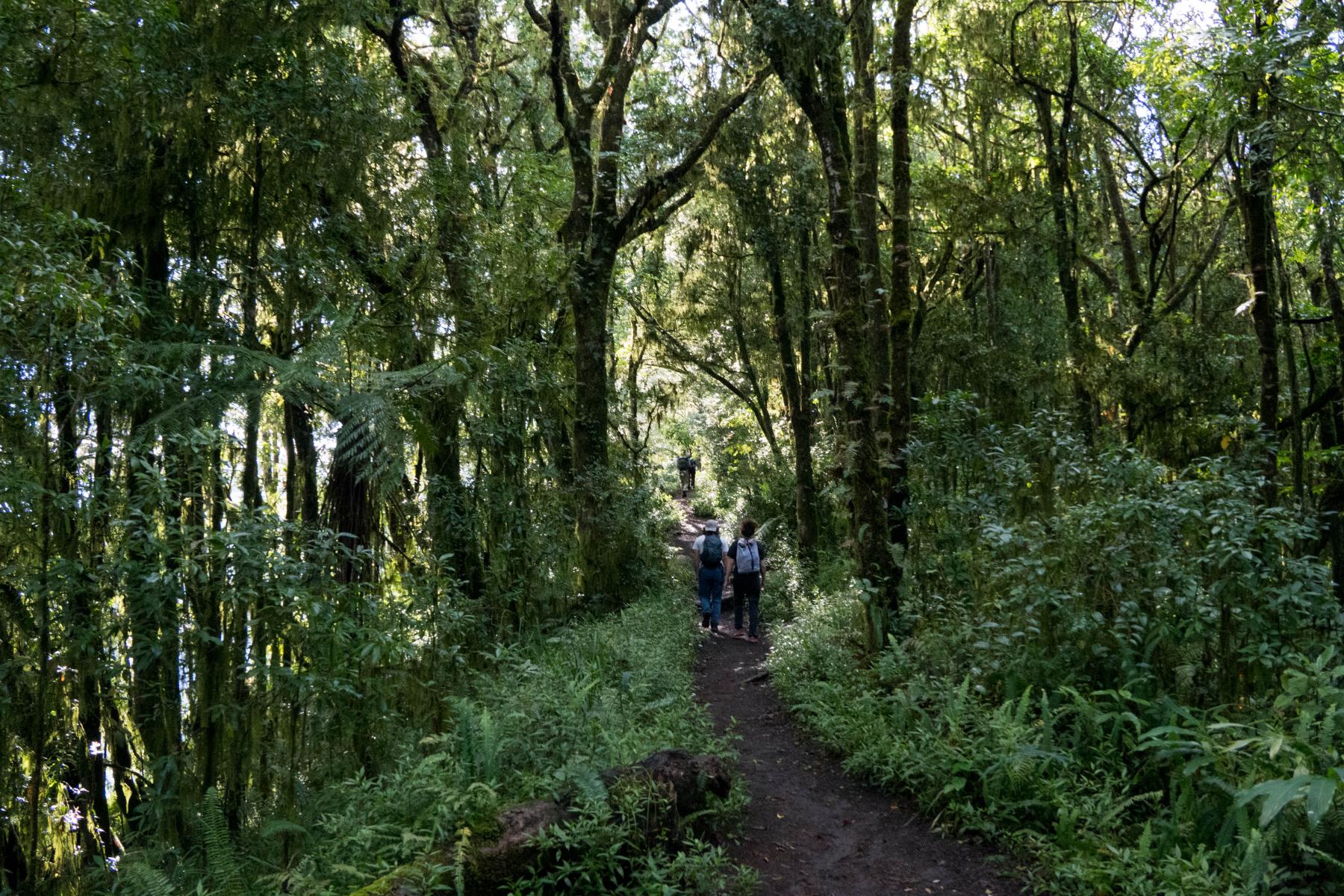
Soon the morning sun turned to expected cloud forest fog, and the trail became steep and muddy.
Prodigous numbers of small orange orchids covered the tall she-oaks.
Spotting birds could be a challenge in the fog, but we heard their song almost continuously.


A Sunda Warbler made a beautiful appearance, one of the few IDs I felt confident about in the field.



Suddenly, out of the fog, the sun, the summit!
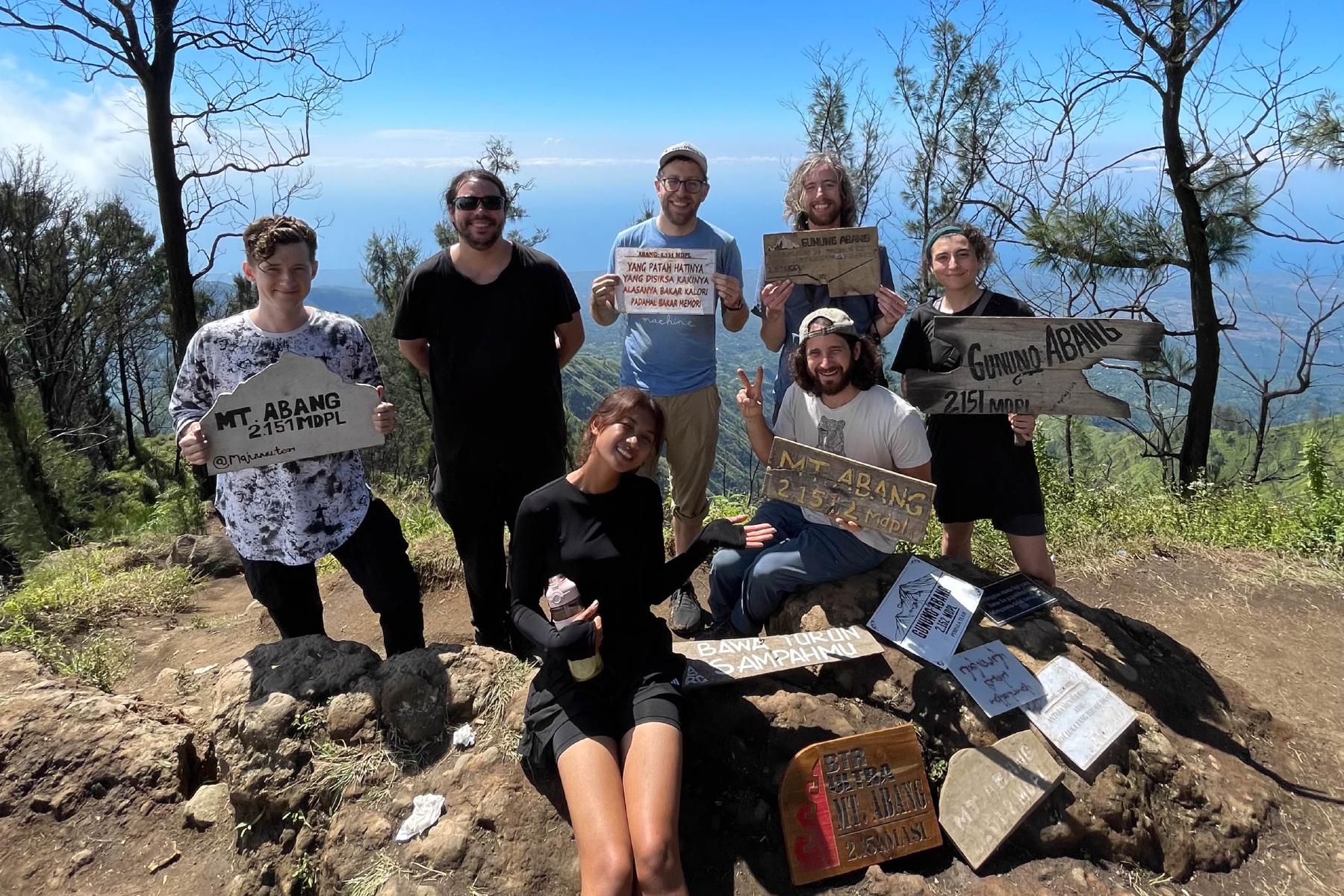
On the way back to Les, we stopped at one of the lava flows inside the caldera.
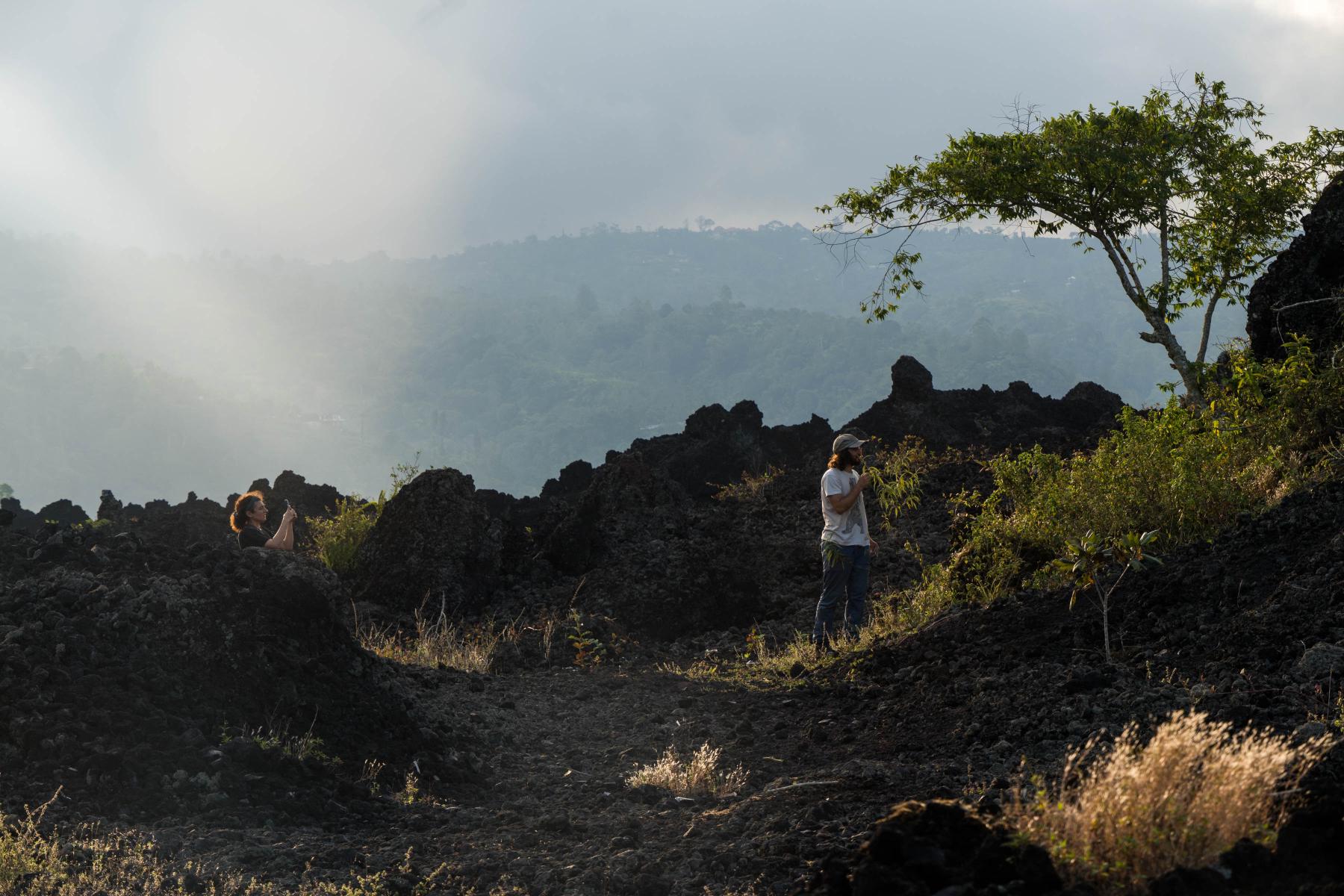

This lava field was formed in the 1963 lava flow. The nearby 1926 lava flow was much more vegetated.
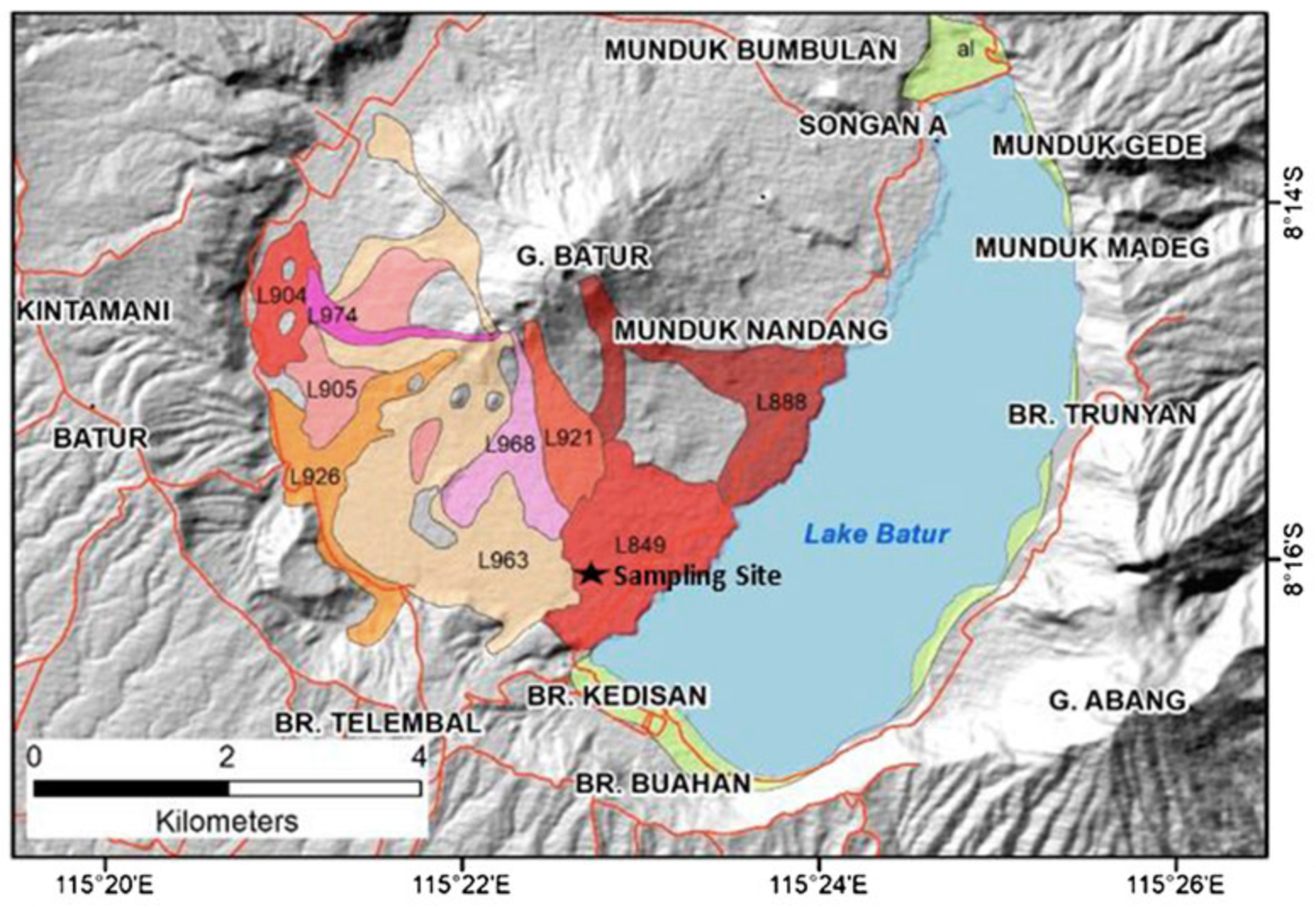
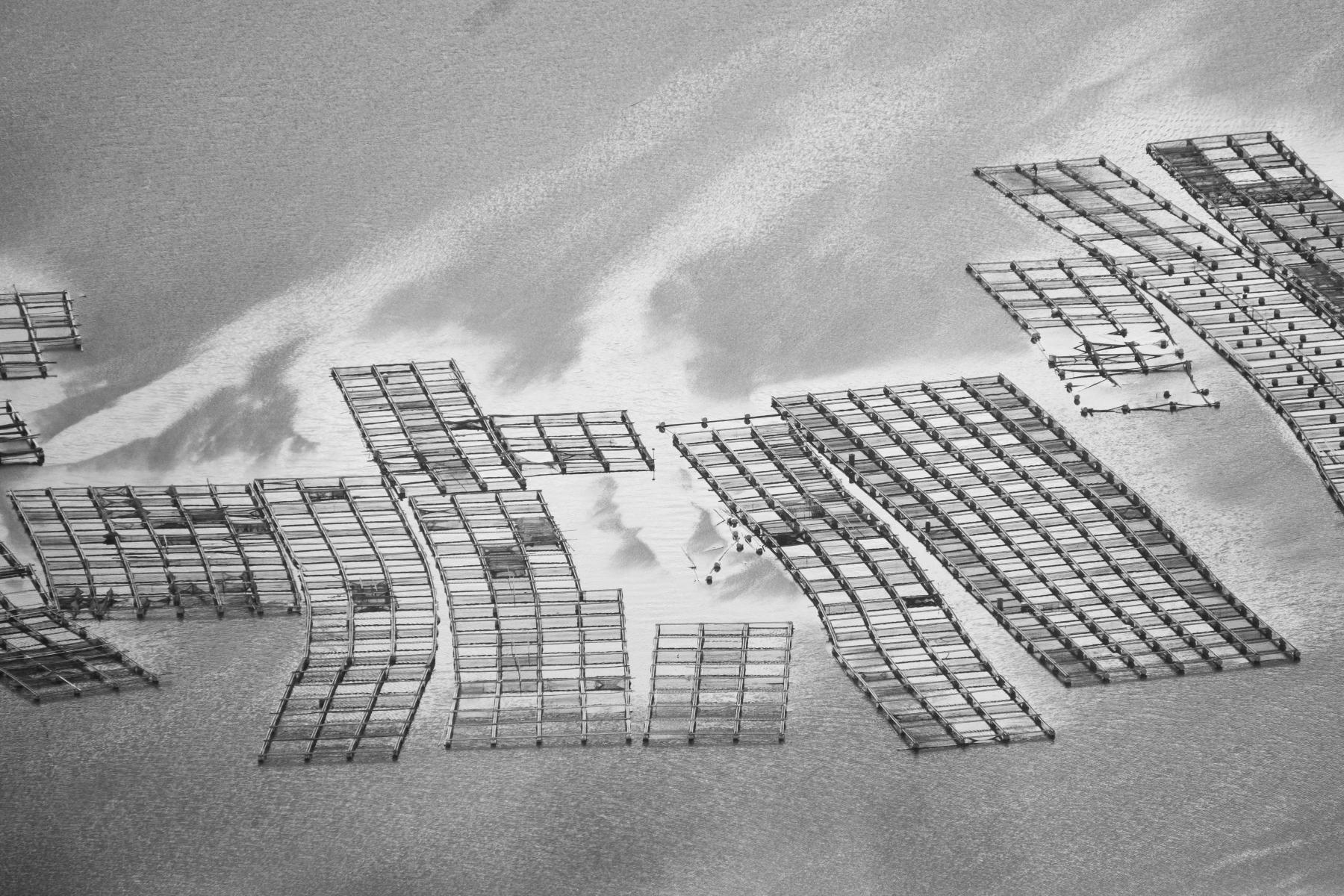
July 8
In the morning, Garri, Wilan, Bri and I went for a bird walk up in the hills. As always, it’s a delight to learn from Wilan’s depth of knowledge about the environment around Les.




Around sunset, an extremely low tide exposed lots of rocks and bugs.




Sunset swimmers.
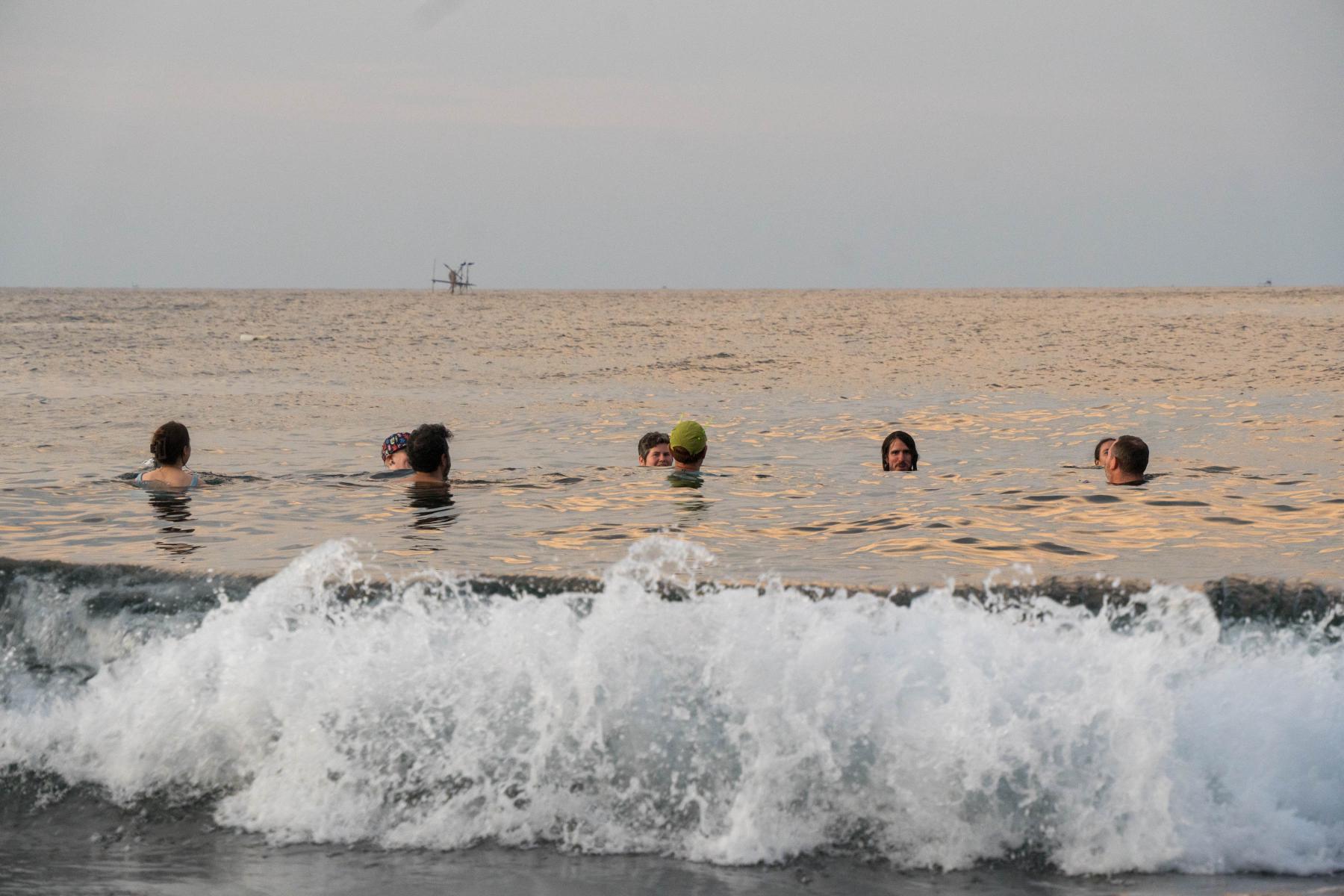
July 9
Ahac has arranged one of the quintessential Bali tourist hikes — Mt. Batur at sunrise — and I can’t resist. Andy and Luci join us, and to my delight, we are again guided by Gin!
Colin tries to prank us with Gin’s cooperation, of sorts.
It’s a slog up the mountain, and cold at the top. As it begins to get light, we set our banana sandwiches aside and visit a steam vent, where another vendor is performatively cooking eggs.
Eventually, the sun rises, and for a few minutes, the fog clouds part and a view of Abang, Agung, and the sea appears in all oranges and pinks. It’s almost enough to forget the hundreds of tourists framing the spectacle.
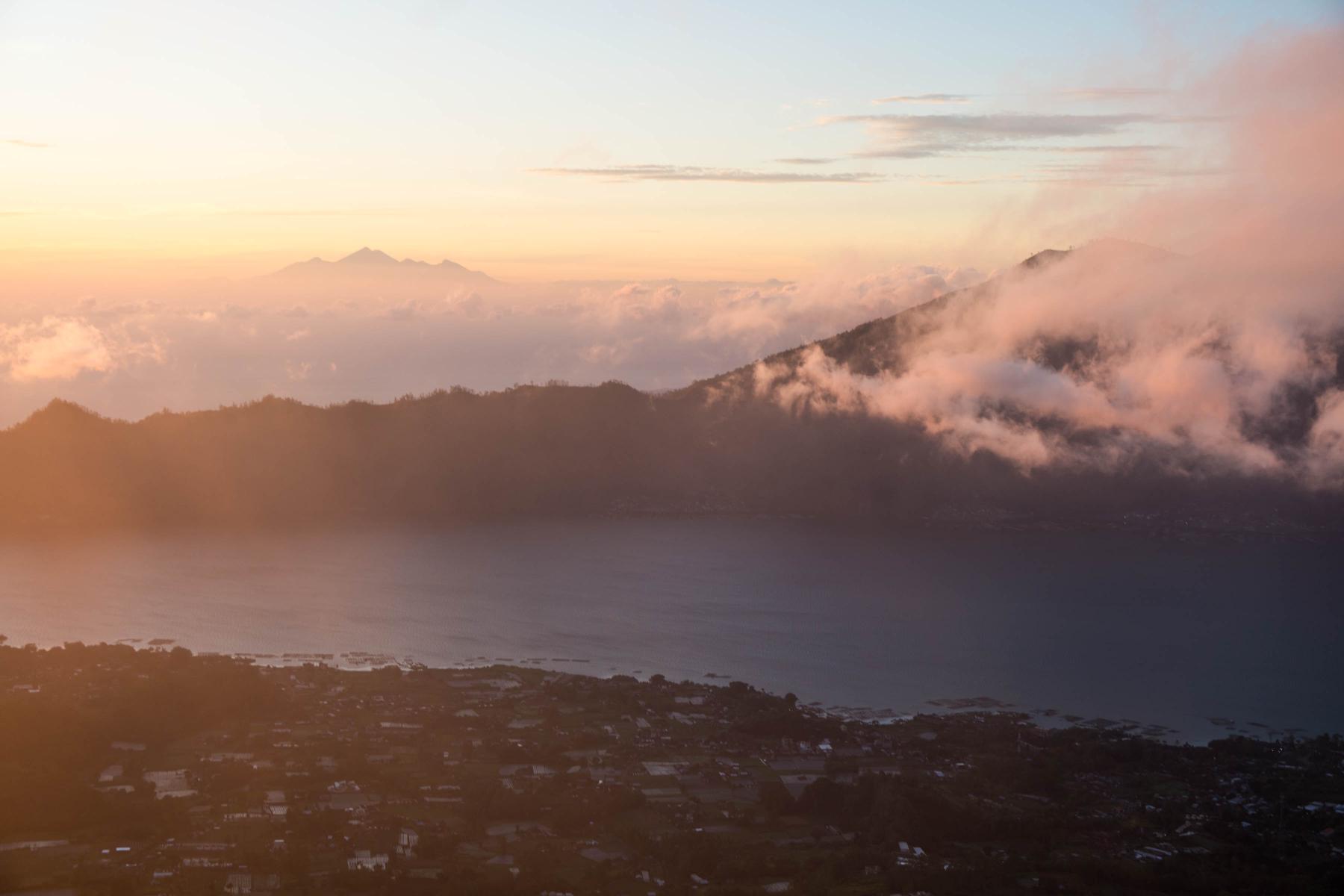
On our way back to Les, we visit a small but scenic temple on the shore of Lake Batur.
Heavy traffic on the way back after a processional temple ceremony. I start to really feel the 2am wake up time, and the rest of the day is a blur.
July 10

The summer full moon brings really large tidal swings, which the local fishermen mark with a special religious ceremony and offering. Through Sea Communities and Segara Lestari, all of the Dinasaurs were invited to attend and participate in the ceremony. A spectacular sunset and dinner on the beach followed.
July 11
Alison and I go to Denpasar early, a day before she flies out, to visit some sights and see the ongoing arts festival.
Thatch and cobwebs at Pura Puncak Penulisan, arguably one of the oldest temples in Bali.
Behind the beautiful gardens of Pura Taman Ayun in Mengwi (a critical node in the centuries-old irrigation system) we find some huge water monitors hanging out in the trash.






Across the road, the Ogoh-Ogoh museum is absolutely worth a stop.
Unbelievably good performances at the Pesta Kesenian Bali (Bali Aarts Festival). Regional groups from all over the island come together to show their skill and highlight unique local traditions.
Concluded by maybe the coolest thing that’s ever happened to me: an Eastern Barn Owl flew over the amphitheater during a gamelan performance and perched in the palm tree above us for a few minutes.
GAMELAN OWL!
July 12
A rainy day in Denpasar. Alison and I do a really fun textile tour before she heads to the airport.

I have a rather exciting drive in a small car back to Les via a small road that goes over the pass between Mt. Abang and Mt. Agung. When we return to the coastal road, relief is palpable.
I get back just in time for the end of Josh H.’s Touch Designer workshop and Dinnercon!!!
rotate line of pixels 2° every frame
nearest-neighbor interpolation
(w/ @obtusatum.bsky.social)
— Josh Horowitz (@joshuahhh.com) August 17, 2025 at 10:16 AM
[image or embed]
July 13
Open Day! Lots of back and forths to the copy shop to print out Alison’s map on tiled pieces of A4. This was the only picture I took today. It was also the only day that I made zero iNaturalist observations.
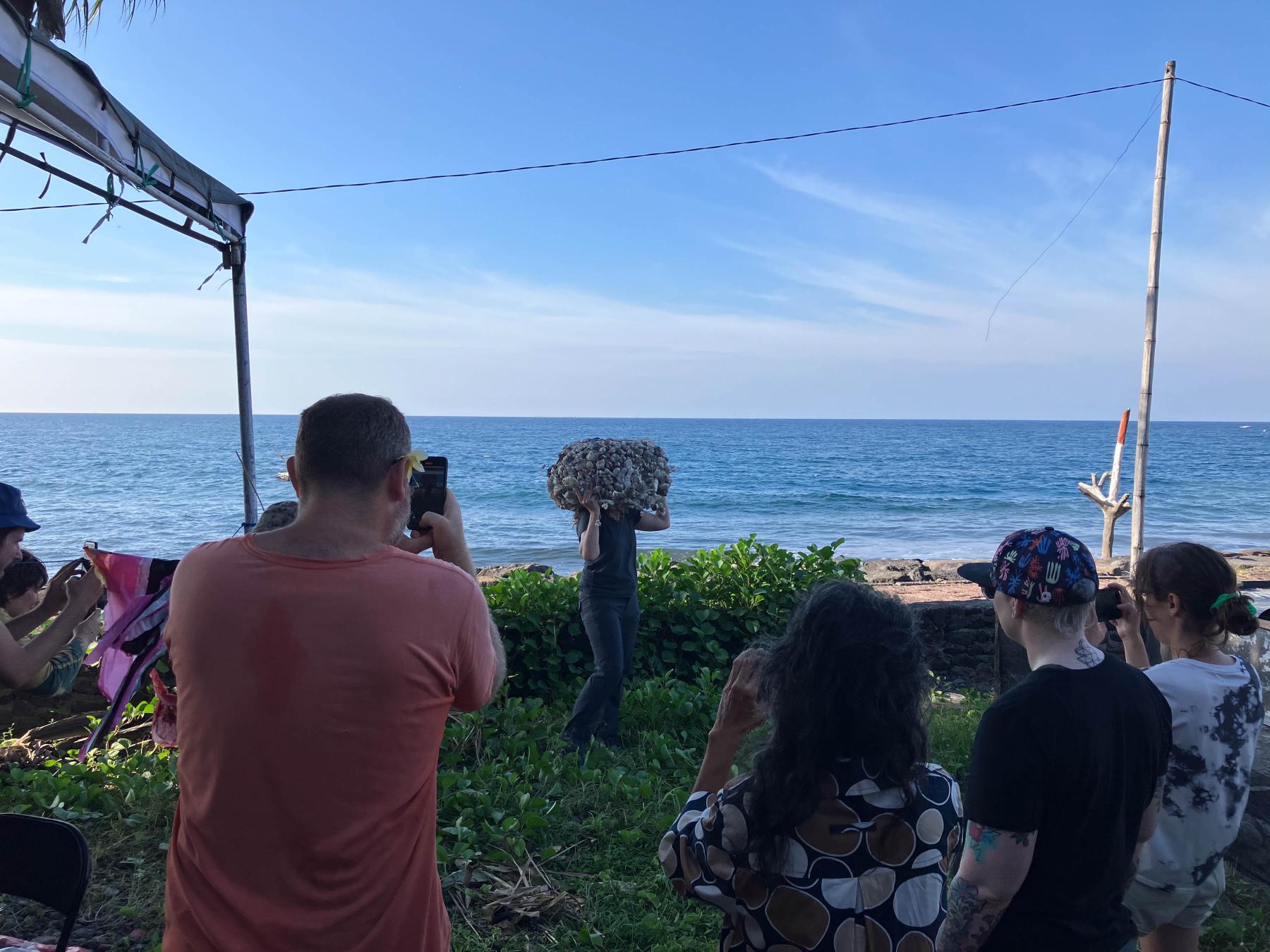
July 14
Haircut time! Thanks Sid!
I teach a workshop on hydrophones in the afternoon. Thanks again to Sid for the photos!
In the evening, a raft is dragged in by some fisherman covered in sponges. Later, someone finds this guy hanging around on the rocks!

July 15
I wake up, throw a hydrophone, a Raspberry Pi, and a battery into a drybag and test out Seastream, an underwater radio station. To my surprise it works! Finally we can communicate with snorkelers.

Shalaka’s gamelan teacher introduced her to the teacher at a local community center, and she arranged a trip for a bunch of Dinasaurs to go visit. Unbeknownst to us, Balinese dance was also on the agenda. It’s hard! Thanks to Saad for taking photos.
July 16
Sunrise over the rumpon.

The Sea Communities folks have a sunset dolphin cruise on the calendar today, so why not. I didn’t realize it would be on the little fishing boats, essentially outrigger canoes, but of course, what other kind of boat would there be?
Only two people can fit on each boat. After ours is heartily shoved off the beach, the captain starts the outboard, and we zoom offshore. The other boats quickly become specks on the long horizon.
I try to drop a hydrophone to lisen, but it hopelessly skips along the surface.
Mt. Agung and its barren high altitude slopes began to rise in the distance.
A couple miles offshore we suddenly reconvene with friends on other boats. No dolphins, but a joyful ride back to the beach — and dinner.
July 17
One last trip to the waterfall.

Wilan finds a stinky bug.
July 18
I borrow a kayak from a nearby hotel and go out for a second time. Conditions are calm, clear and quiet.
Perfect for recording. I’m using a new stereo hydrophone built the previous night — and using one of the hydrophones I made as a demo at the workshop.
The hydrophone assembly process requires many coats of Plasti-Dip which take some time to cure. But finally, everyone’s hydrophone is done and we can test them out.
Luh and the folks at the restaurant help us turn the water pumps in the koi pond off temporarily, so we can listen to the fish.
Or rather, listen to the fish attempting to eat the hydrophones.
Then we find out what we can hear in the shorebreak. Alex H. discovers the joy of live hydrophone recording.
Experimental listening.
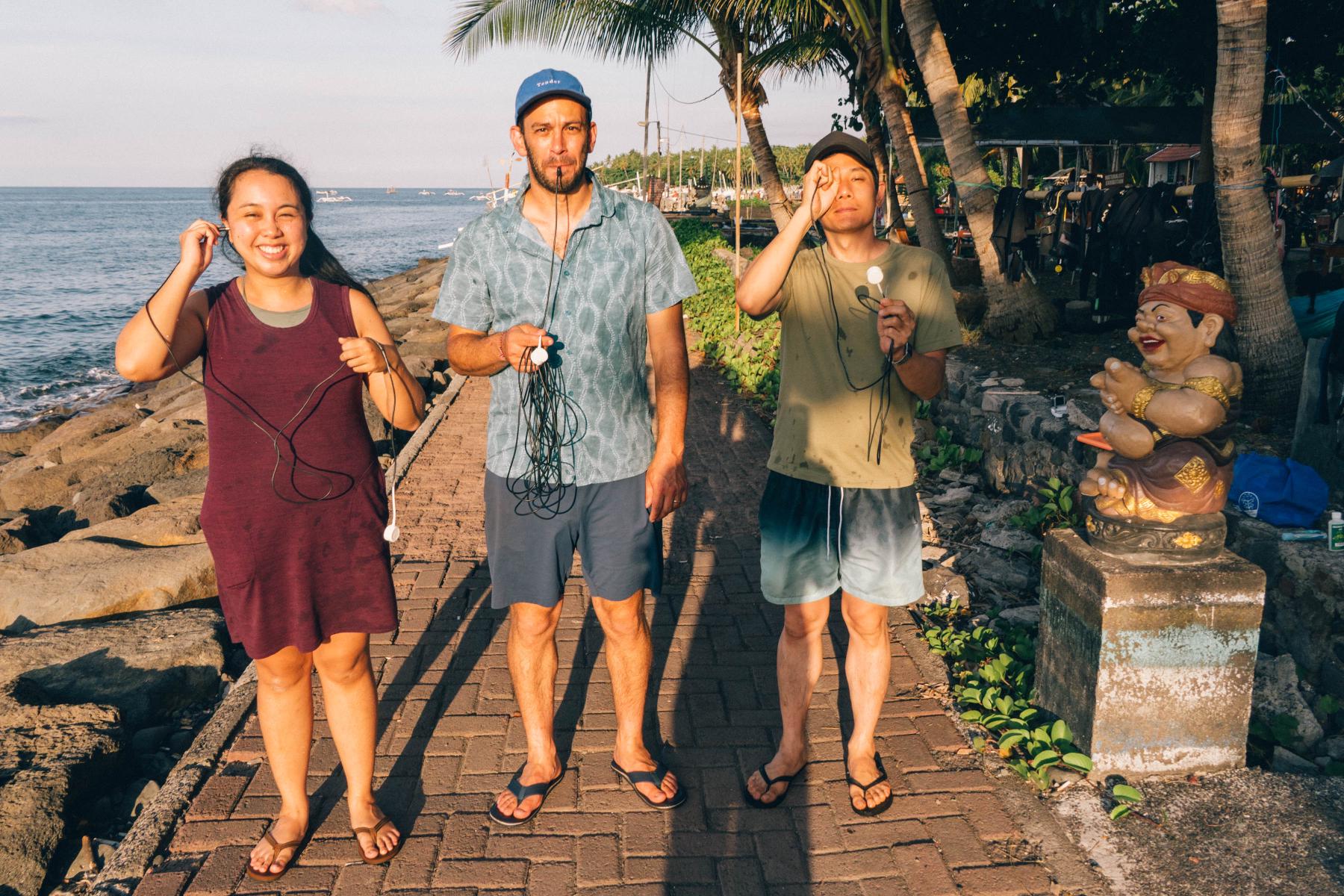
Idling around HQ after the hydrophone testing, a call rings out: “Andyyyyy! Whale!!!” Someone, I’m not completely sure who, has spotted a humpback whale very near to the shore, between Segara Lestari and Kura Kura beach.
A dozen Dinasaurs run over at once in excitement. A few minutes later, the whale briefly breaches again. I see it, but fail to capture a photo.
“Wait a minute!” shouts Andy. “We have a drone! What are we doing!?” Andy suddenly sprints away back towards the villas.
“We have hydrophones!” yells Alex H. “We’re so dumb!” Half a second later, he too is gone.
The drone is actually a really good tool for spotting the whale, and Andy is able to follow it underwater, though it does not resurface.
Sadly, Alex is not able to record any whale songs, though he does prototype a new Pocari Sweat innovation to float the hydrophone closer to the surface, and avoid getting rock sounds. Following Alex down the coast, I see a school of needlefish jumping out of the water. Could they be being chased by something?
At sunset, I finally get a pitch shifting algorithm working the way that I had dreamed for real-time bat listening. I’ll write more about this later, but essentially it uses a granular-synthesis like method to timestretch each echolocation call individually, preserving the harmonic relationship, the detail in each call, and the real-time nature of the microphone.
July 19
My final morning at Les.

A huge moth enjoys the aftermath of upside-down ocean.
Goodbye Dinacon! I have an enormous bus all to myself. Thanks to PL for the photo!
